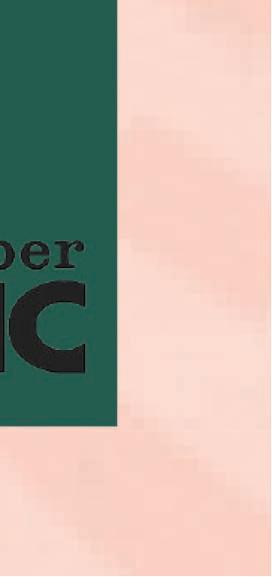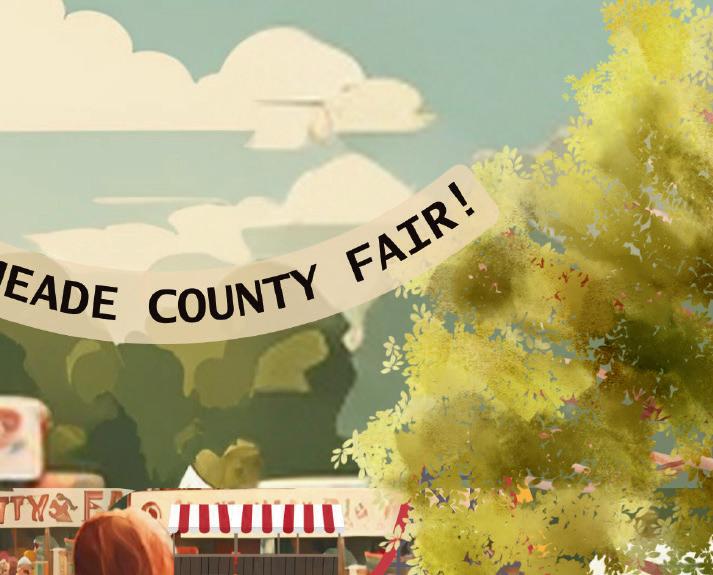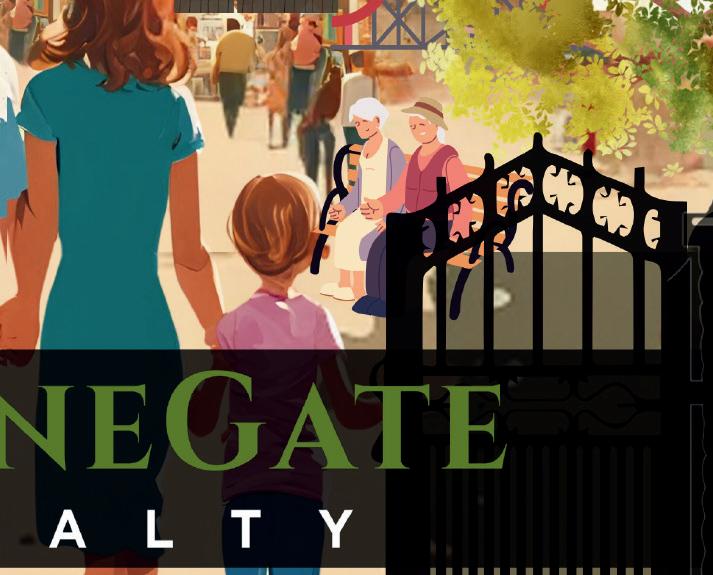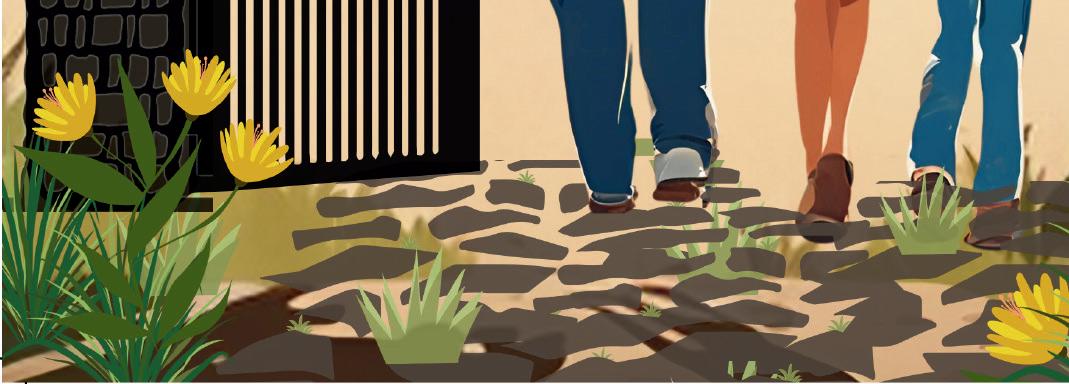









Free Edition Compliments of the Meade County Fair Board &






























































































































































































































































Sat. July 20
Sun. July 21

Mon. July 22











Free Edition Compliments of the Meade County Fair Board &






























































































































































































































































Sat. July 20
Sun. July 21

Mon. July 22
Contest ......................... 12:15 p.m. 4-H/FFA Round Robin .................... 1 p.m. 4-H/FFA Auction 5 p.m. Rides ................................ 4 p.m. - closing
Wed. July 24
Thur. July 25
Fri. July 26


Tue. July 23




















Dear Meade:







We hope you are as excited as we are with the 2024 edition of the Meade Co. Fair coming July 20-27, 2024. We have some great news to share about the 2024 Fair. On Wednesday night, as requested by many of our loyal fans, we will be hosting Lonestar Rodeo for the main event at the horse arena. We will also have live music from Army of Life in the main arena on Wednesday.










The Meade County Fair and Kissell Entertainment have reached a new contract to extend Kissel’s and the outstanding entertainment they provide for 4 more years.






The Meade County Fair and The Messenger owner Steven Laick have contracted to produce for the fair the 2024 catalog. We would like to thank Ship-N-Print and Courtney for their hard work for the past 2 years and both have won the best in the State.
We look forward to seeing each and every one of you and a friend at the Meade Co. Fair. If we can be of any assistance before or during the fair let us know.
The Meade County Fair is a Family Affair because of all the volunteers and contributors that make it a great fun week for the entire community
Thank you, Meade Co. Fair Board
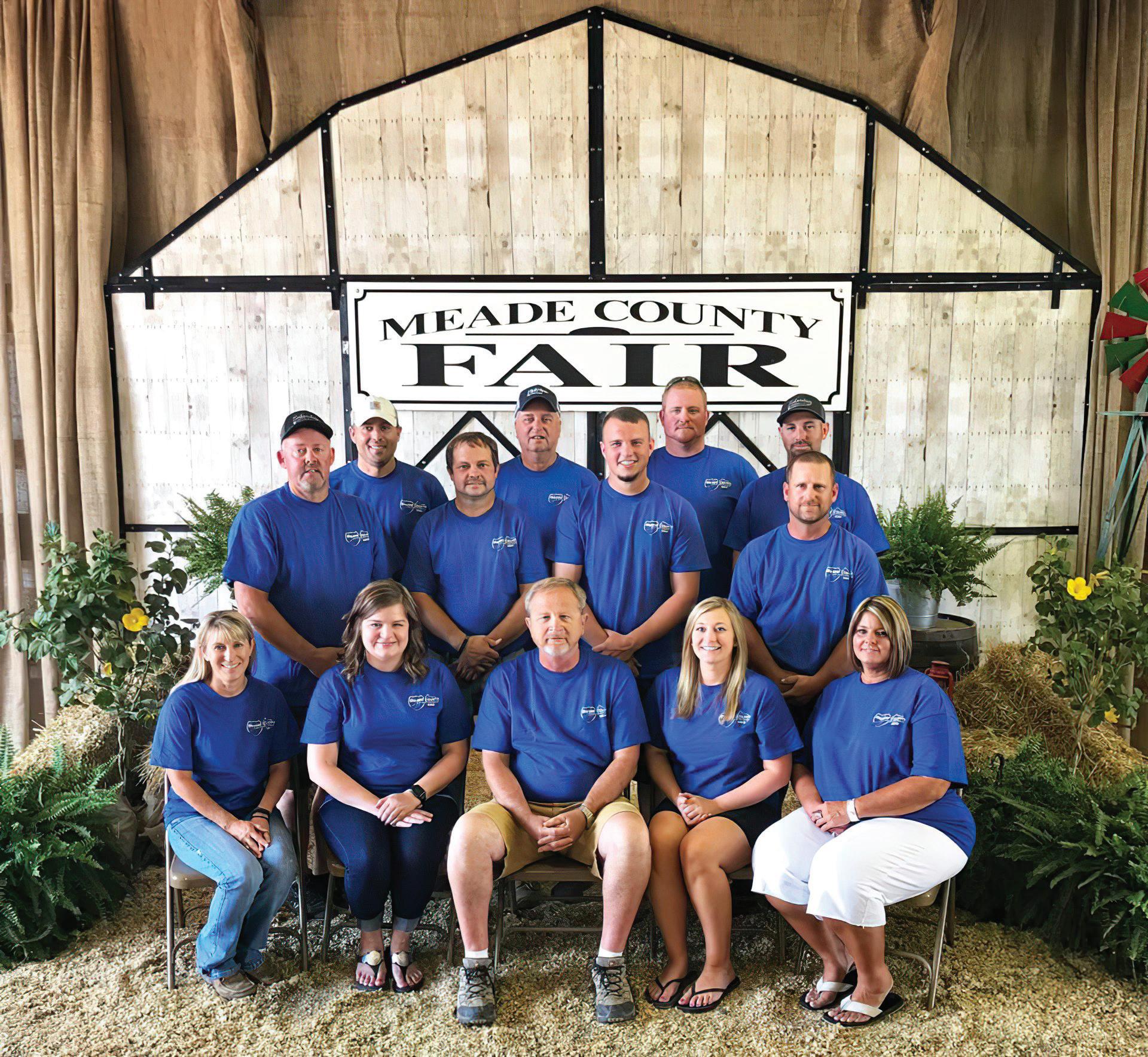



























A. 302 KAR 20:040 (Entry into Kentucky)





All livestock/animals offered for sale or exhibition at Kentucky County Fairs shall meet the following regulations according to KRS Chapter 257:




B. 302 KAR 20:065 (Sale and Exhibition of Kentucky Origin Livestock Animals in Kentucky)


Any questions concerning these health regulations should be directed to your local veterinarian or the Kentucky Department of Agriculture State Veterinarian’s office at 502-783-0582.




Livestock Health Regulations can be obtained on the Kentucky Department of Agriculture website: http://www.kyagr.com/statevet/animal-movement.html









Please be advised that Livestock Health Regulations are subject to change anytime.











Notice is hereby given by the Meade County Fair Board Inc., hereinafter the "Board", that all vendors, commercial advertisers and entertainment facilities utilizing the Meade County Fairgrounds during the course of the Meade County Fair are independent contractors hereinafter the "independent contractor." The independent contractor is not the agent, servant or employee of the Meade County Fair Inc. or the board. Any and all intentional or negligent acts, statements, representations, or warranties, either oral or written, expressed or implied, made by or on behalf of said independent contractor in relation to any matter including, but not limited to any products, goods or services, shall be the sole responsibility of the independent contractor and the board disclaims any responsibility or liability thereafter. All future references to the Meade County Fair Inc. in this catalog are here and after referred to as Meade County Fair, the DBA for the Meade County Fair Inc.












This fair is under the management of the Meade County Fair Board, Inc. composed of David W. Pace, manager and Farm Bureau Members: Board member Kenny Haught (Cattle Member), Doug Banks, Russ Fackler (Horse Member), Chad Ford, Andrew Ford, Perry Richardson, Lance Padgett, Sarah Fackler and Brandon Phillips; and our Advisory Committee Noel Pack, MCHS FFA leader; Andy Mills, County Extension Agent for Agriculture and Natural Resources; Deanna Reed County Extension Agent for 4-H/Youth Development; and Jennifer Bridge County Extension Agent forFamily and Consumer Science.





































The 2024 Meade County Fair work days will be July 18, July 19 and July 20











































































































































































































The fair is planned and conducted according to Kentucky Department of Agriculture regulations for the use of state funds. Everyone pays $15 admission which includes all events, parking and Midway.



1. Gate admission will constitute entry fee for all contests not having an entry fee.




2. There shall be no entry fee for exhibits.
3. Adult classes open to all exhibitors.






4. All exhibits must be owned by the exhibitor.
5. All exhibits remain the property of the exhibitor.



6. Premiums not filled remain the property of the Meade County Fair, Inc.



7. No combinations allowed except Junior Agriculture groups.




8. All exhibitors must secure a release from superintendent before removing exhibits from departments.





9. Any exhibits judged unworthy of showing shall not be exhibited. (Decision rests with superintendent of department.)
10. Any article exhibited that is not included in the premium list shall not be awarded a premium.






12. No exhibitor shall be allowed more than two exhibits in any one ring.


11. The management shall use the utmost care to guard and protect exhibits, but will not be responsible should losses or damages occur.





13. Exhibitors shall at all times give the necessary personal attention to whatever they may have on exhibition and at the close of the fair take charge of the same.



14. Premium checks will be mailed after the fair, as soon as possible.



15. Any premium check not cashed within 90 days after issue will be forfeited to Meade County Fair, Inc.


16. Experienced judges shall be engaged to judge the exhibits.
17. The decision of the awarding judges shall be final.










18. Premium ribbons have no value as to payment of premiums since premiums shall be paid from the record of the superintendent.
19. Any exhibitors attempting to interfere with the judges during the adjudications shall be promptly excluded from competition.





20. Vegetables shall be judged on marketable quality and usability.


21. The Meade County Fair shall furnish space on the fairgrounds for all exhibits, including pens for swine, dairy and beef, horses and mules.



22. Exhibitors shall furnish all necessary halters for dairy, beef, horses and mules.







24. Feed and bedding must be furnished by exhibitor of livestock.


23. Exhibitors shall furnish container for all exhibits such as: field seed and grain, fruits and vegetables, plants and flowers, etc.

25. Entries in the 4-H Club and Future Farmers of America classes are eligible to enter the Open Class rings, unless otherwise stated in departments.




26. The Meade County Fair will furnish a space for exhibits, exhibitors and spectators, but will not be responsible in case of loss or injury to either. Any questions not covered by the above rules and regulations shall be answered by the fair committee.



27. No premiums shall be paid if any of the above are broken.








28. Second prize money will be paid if there is only one entry except in animal classes.
29. All premium money will be prorated on percentage basis provided net profit does not exceed premium list.







30. Persons found guilty by the Meade County Fair of misconduct will forfeit any premiums and be asked to remove exhibits from grounds.
31. No reservations will be made for stalls. The stalls will be furnished on a first-come, first-served basis.





32. All 4-H and FFA entries must have been produced in conjunction with an approved project.


33. All entries and exhibits will be accepted between 8 a.m. and 1 p.m., Monday, July 22, unless otherwise stated in departments

35. Shirts and shoes required.




34. All entries will be picked up Sunday, July 30, between 2 and 3:30 p.m. NO EXCEPTIONS.











36. NO ANIMALS (OTHER THAN LICENSED SERVICE ANIMALS), NO DRONES AND NO WEAPONS .








Open during the week.
Serving Lunch at 11 a.m. - 1 p.m. — No Gate Charge during these times.
Sunday, July 21
Meade County Wrestling Chicken, Fries, Taco Salad
Monday, July 22
Meade County Swim Brat, Fried Bologna, Ribbon Fries, Fried Oreos
Tuesday, July 23
Thursday, July 25
Meade County FFA Fish Sandwich
Friday, July 26












MCHS Soccer Team Pork Chop Sandwich, Pork Burger, Dole Whip
Saturday, July 27



Blue River Island Baptist Church Hamburgers, Cheeseburgers, Funnel Cakes, RC



Wednesday, July 24

Meade County Cattlemen’s Association Steak Sandwich



MCHS Baseball Team Pizza, Fried Pickles, Corndogs, Slushies












MCHS Soccer Team, Pork Chop Sandwich, Pork Burger, Dole Whip

Meade County Wrestling Chicken, Fries, Taco Salad





Blue River Island Baptist Church Hamburgers, Cheeseburgers, Funnel Cakes, RC


































































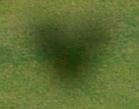























































































































































































































































































































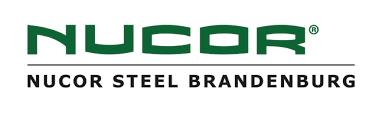

































































































Food Booth vendors place an enormous amount of pressure on themselves to secure one of the coveted locations on the Food Court of the Meade County Fair each year. It is impossible to overestimate how strong the desire to get approved is, particularly since the booths are usually occupied by local school organizations or local non-profits. The incentives are varied: obviously, big money opportunities in a short period of time are key, but the financial investment and the time commitment for each booth is steep and the constant stress to keep booths manned and ingredients fresh is intense.




are served with a side of ranch dressing. We offer things ing a corndog and a slushy, or the adults wanting the fried pickles or mozzarella sticks.” The MCHS Baseball booth is located very close to the pavilion eating are, between the FFA and Blue River booths, right across from the Cattlemen’s Booth.





Proceeds from the MCHS Baseball team food booth go directly to the team’s needs to support the team with uniforms, travel expenses, equipment, and training.












Beyond the obvious (and necessary) financial gain to keep their organizations and non-profits solvent is this: that one week each year is magical. There is a spirit of a fair week that can only be appreciated when it is experienced. The sights, the sounds, the people, the surreal feeling of oneness with the community is what keeps the vendors coming back year after year.







“We are always extremely grateful for the support from our community during this week. We have two large fundraisers for our baseball team, and operating this Food Booth during Fair Week is our largest profit. In the Spring of 2025, our boys will be taking a Spring Break baseball trip and the profits from this week will be paying for those expenses. We enjoy seeing everyone stop by our booth and our goal is always to have our foods hot and ready for our customers,” said Hail.








Jennifer Hail, speaking on behalf of the Meade County High School (MCHS) Greenwave Baseball team said, “Our menu is for everyone! We have people who come back year after year to get a piece of our old-school pizza. It reminds them of their childhood. Our fried pickles are our number one seller. They are deep fried pickle spears and









Noel Pack is the point of contact (POC) for the Meade County Future Farmers of America organization. The FFA makes positive differences in the community and lives of the students involved in their organization by developing leadership skills, personal growth, and career success through agriculture. They sell their fish meals during Fair Week to raise monies that help support this organization as they secure funding and mentorship to help members of the FFA of Meade County.























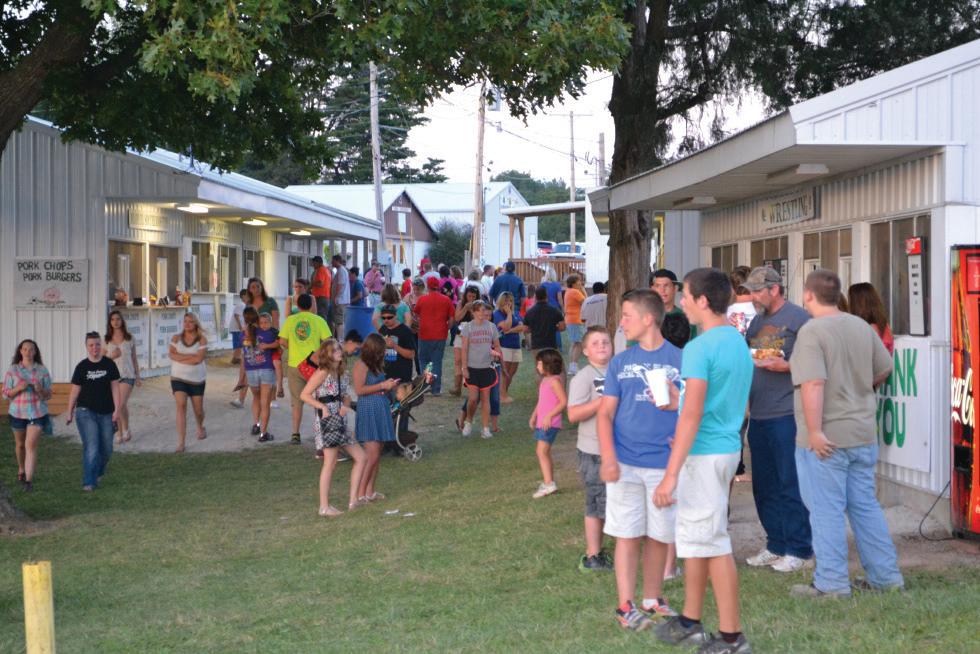





















The Meade County Soccer Boosters Association’s Andy Miller said, “Follow the smell of the grill to find us! We are the last booth on the right closest to the midway. Our sandwiches are famous—we have been serving the same delicious recipe for decades!” The Soccer Boosters use their profits to help defer the team’s traveling expenses, help provide uniforms and equipment and to provide coaching opportunities and training for the athletes.



The Blue River Island Youth Group (Macedonia Action Christian Center) is one of three non-athletic groups that we spoke with that have a food booth at the Fair. Located in Battletown, this Christian Center is committed to strengthening Meade County through Christian love and acceptance to help people during times of adversity and hardship. Michelle Hoskins is the POC for this group, “The reason people should buy from us is our booth is very friendly and outgoing. The food is great and put out quickly. This year we are trying to bring back the funnel cake as well as the funnel cake fries. We also serve all uniformed first responders for free throughout the week. The proceeds raised in our booth are split between our church’s youth group, our food pantry, and the clothing closet we run. Everything we give away to the community we give away for free. The money we make from this week helps that ministry tremendously.” This food booth can be found along the row of food booths right before The Midway.

























The first building on the right as you enter the fairway is manned by the Meade County High School Swim Teams. Rachel Flaherty said that the proceeds from their food sales goes to help the MCHS Swim team to purchase equipment, attend meets, buy uniforms, pay for training trips, and celebrate their success.’ MCHS Swim Coach Kristen Weick said, “for many, our fried Oreos and ribbon fries are a fair week tradition! Swing by the Swim Booth to get your sweet or salty fix. We are always so excited to see our faithful customers that come back for more of our treats year after year. We are just as excited to serve new customers that are coming to us for the first time. A sincere thank you to the









kindness of our community for the consistent support over the years. The money that is raised will help our swimmers in important ways, just as mentioned by Rachel. We are incredibly grateful for the support from everyone in town— it really shows how much our community cares about our young athletes.”








High School Wrestling is like no other sport. It triggers the emotions of athletes and when losses are suffered or there are setbacks, they are often painful and uncomfortable; yet this process teaches individuals how to develop resilience that will last a lifetime. The MCHS Wrestling Booster Club will have their larger food booth set up beside the hog barn and a smaller version set up by the rodeo arena called the Rodeo Booth. Julie Zwiebel, Booster Treasure, asks people to come by to support the Wrestling Team.












Kevin Stith is the POC for the Meade County Cattlemen’s Association. This organization works diligently to host workshops, seminars on cattle management, marking and nutrition. They provide access to sales, auctions for cattle, and cattle related equipment. They also advocate for policies that benefit cattle producers at the local, state, and national levels. This includes working with providing scholarships and education through 4-H and FFA for the youth of Meade County. Their booth can be found near the pavilion eating area across from the MCHS Baseball booth.












Fair Week is the one week out of the year when all dieting commitments are thrown to the four winds and one lives large, sampling all the things that are readily available during this singular thrilling and magical week—whether it be a giant turkey leg or a fried twinkie or a paper boat filled with ribbons of hot greasy potato swirls. In addition to the fellowship of community and family, be sure to also enjoy, with complete abandonment, all the fun and fantastic foods that will be available. Not only are you noshing for culinary enjoyment, you are also supporting local athletes and non-profits.
Bon Appetit!






















7:40 a.m. 1-mile run/walk 8 a.m. 5K






Proceeds will be donated to the MCHS Track and Cross Country teams.




FOR MORE INFORMATION, CALL: 270-422-1734 or visit www.meadexc.com



ENTRY FEE: $15 for one race, if received by June 19, 2024; $20 day of race. Please return all entries to: MCHS Track and Cross Country, c/o Larry Garner, 108 Rolling Trail, Brandenburg, KY 40108.
LOCATION: Meade County Fairgrounds.






COURSE DESCRIPTION: This 5K course begins and ends at the Meade County Fairgrounds. The first 2 miles consist of a continuous gradual downhill before heading back to the finish. There are a few hills in the last mile before finishing at the fairgrounds.
T-shirts awarded to the first 80 entrants.


AWARDS: AGE DIVISIONS: 14 & under, 15-19, 20-24, 25-29, 30-34, 35-39, 40-44, 45-49, 50-55, and 56 and up.



FOR MORE INFORMATION, CALL: 270-422-1734 or visit www.meadexc.com








































SATURDAY,






5:30 p.m. Livestock Barn Sat. July 20






PRIZE MONEY: First place, $25; Second place, $17; Third place, $12; Fourth place, $10; Fifth place, $7. Champion will receive trophy and rosette; Reserve Champion will receive rosette.






SUPERINTENDENT: Cody Haught —270-668-5276


Commercial Division, Angus Division, Hereford/Polled Hereford Division, Aob Division (Other Breeds will include representatives of all breeds, either purebreds or percentage.) A minimum of 8 total head in any one breed other than those listed must be entered to qualify for a separate division. Otherwise, they must show in the Other Breeds Division.

1. Junior Heifer Calves








(Calved Jan. 1-April 30, 2024)
2. Winter Heifer Calves (Calved Nov. 1-Dec. 31, 2023)
3. Senior Heifer Calves (Calved Sept. 1, 2023 -Oct. 31, 2024)

4. Late Summer Yearling Heifers
5. Early Summer Yearling Heifers






(Calved July 1-Aug. 31, 2023)
(Calved May 1-June 30, 2023)
6. Spring Yearling Heifers (Calved Mar. 1-April 30, 2023)






7. Junior Yearling Heifers (Calved Jan. 1-Feb. 28, 2023) 8. Senior Yearling Heifers (Calved Sept. 1-Dec. 31, 2022)
9. Grand Champion Heifer Trophy & Rosette $100 (All first place class winners must be led into ring to compete.)






Grand Reserve Champion Heifer Rosette $50





10. (All first place class winners and second place winner in class that produced Grand Champion Heifer.)

Sponsor: Stith Big D Angus
Sponsor: Stith Big D Angus






(Calved Jan. 1, 2023 - April 30, 2022)
Bull Calves (Calved Nov. 1-Dec. 31, 2023)
13. Senior Bull Calves (Calved Sept. 1-Oct. 31, 2023) 14. Late Summer Yearling Bulls (Calved July 1-Aug. 31, 2023)


16. Spring Yearling Bulls


17. Junior Yearling Bulls
18. Senior Yearling Bulls
19. Two-Year-Old Bulls
20. Other Age Bulls







15. Early Summer Yearling Bulls (Calved May 1-June 30, 2023)
(Calved Mar. 1-April 30, 2023)




(Calved Jan. 1-Feb. 28, 2023)
(Calved Sept. 1-Dec. 31, 2022)




(Calved Mar. 1-Aug. 31, 2022)

21. Grand Champion Bull Trophy & Rosette $50 (All first place class winners must be led into ring to compete.)
22. Reserve Grand Champion Bull




Sponsor: Meade Stock Farm
$25 (All first place class winners and second place winner in class that produced Grand Champion Bull.)Sponsor:















































6 p.m.
Horse Arena
Warm-ups 4 p.m - 5:30 p.m.






Warm-up



$5 ground fee per horse • No gate fee



$1,000 added money • 80% payback
SUPERINTENDENT: Russ Fackler — 270-668-2974







1. Peewee Poles – (Riders 10 yrs. & under)
2. 3-D NPBA



















Classes 1 and 5 – 100% payback plus trophy and ribbons. If you run this class you CANNOT RUN YOUTH.
Classes 2, 3, 4, 7, 8, 9 and 10 will be one second split.














Classes 2 & 4 include a $2 NPBA fee not included in payback.
Classes 7, 8, 9 and 10 include a $2 IBRA fee not included in payback.








Classes 4 and 5 will only have added money with 10 or more entries. Added Money day of show

1. No classes will be added.
884 Hillcrest Dr., Brandenburg, KY 40108 by the Meade County Fair Board.





2. All out-of-state horses shall have an official health certificate not more than 30 days old.

8. The show will be run according to the IBRA and NPBA rules that apply.




3. All horses must have a negative Coggins test performed within 12 months of the show.



4. Once exhibitors are called for their run, the exhibitors have 1 minute to enter the ring, after which the gate will be closed. Any exhibitor not in the ring by that time will not be admitted and will be disqualified. Please cooperate by being on time. Once entering the show ring, the exhibitor has 45 seconds to begin their run.









5. Protest: A protest must be in writing, signed and addressed to the chairman of the show and accompanied by a deposit of $25. It must be received by the chairman by the end of the show. If the protest is sustained, the deposit shall be returned. If not sustained, the deposit shall be forfeited to the Meade County Fair Horse Show.







9. No practice runs allowed between classes. Anyone doing so will be disqualified.
10. Each class entry closes when the preceding class begins. Late entries will be left to the discretion of the superintendents.
11. NO REFUNDS.




12. Knocked over barrel in IBRA classes is a no time. Knocked over pole in NPBA is a no time.
13. Youth Classes – Rider 18 yrs. and under
14. Peewee Classes – Rider 10 yrs. and under

6. The Meade County Fair Horse Show is a member of the Kentucky Association of Fairs and Horse Shows.


15. Announcements day of show take precedence over printed material in catalogs or show bills.

7. The horse show committee will not be held responsible in case of accidents or theft. All precautions will be taken for the protection of riders, and their animals, but no responsibility will be assumed







16. Rider has option to roll time from open; must pay both entry fees. Payback will be 80%.




17. Fair Office subject to close at midnight. In event that this happens any winnings past that point will be mailed or can be picked up at fair office the following week.















7 p.m.
Farm Bureau Community Building








PREREGISTER: Anthony Brown, 270-268-5552

PRIZE: 1st, $300, 2nd, $200, 3rd, $100







SUPERINTENDENT: Anthony Brown — 270-268-5552 • Nancye Lynn • Day of tournament — Fair Office 270-422-2000







BLIND DRAW - if uneven number of people have signed up, after 15 min. and no one else signs up money will be returned.

2. Must be 18 years old or older to participate.



4. Each team will use 4 bags of the same color.




5. Teammates stand across from each other and use the same color bags.
1. Check-in 5:30 - 6:30 p.m. located at the Meade County Farm Bureau Building. Tournament starts at 7 p.m. until finished.
3. The two boards will be 27 feet apart from the front of one board to the front of the other board.

6. All bags should begin at same side of board and with each player rotating each throw.







7. All players must throw from behind foul line or throw will not count! Superintendents will be watching players.
8. Game continues by alternating throws between the two opponent players until all 8 bags have been thrown.
9. The team who wins the round will throw first in the next round.
SCORING
1. 1 point for a bag on the board.



2. 3 points for a bag in the hole.
3. 0 points for a bag that lands off the board.



4. If a bag hits the ground then bounces up onto the board then that bag should be taken off the playing surface before any more bags are thrown.




5. The points cancel each other out. Example: If Team A gets 2 bags on the board and 1 bag in the hole (5 points) and Team B gets 3 bags on the board and 1 bag in the hole (6 points) Team B would get 1 point.


Farm Bureau Ins. • Big O Tires • Abound Credit Union ENTRY FEE: $20.00








6. The game continues until one team reaches 21 points. A time limit may be imposed due to the number of entries.
























CONTRIBUTORS:

















































SATURDAY & SUNDAY
JULY 20 & 21, 2024

July 20








1. All makes & models welcome to display.

2. Featuring Oddballs and Orphans
3. Barrel Train Rides.
4. Lawn Mowers.




5. Related antique farm equipment.
6. Farm demos.
7. Kid’s Play Area.


8. Tractor Ride Saturday.













































































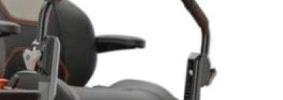


























































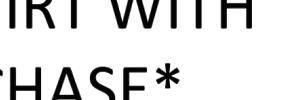



































































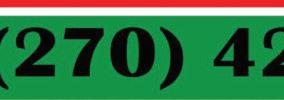






























1. Lead Line Pony - (Riders 8 yrs. & under)


SUPERINTENDENT: Russ Fackler — 270-668-2974
No Entry Fee; Trophy & Ribbons to all





















Classes 2, 5, 7 and 10 Youth Classes – 18 yrs. and under









1. No classes will be added.
2. Class 1 - No entry fee, ribbons and trophies to all.












3. Classes 2-11 – $10 entry fee with payback of $40, $30, $20, $10
4. Pattern will be posted for Showmanship and Horsemanship.

5. All out-of-state horses shall have an official health certificate not more than 30 days old.





















6. All horses must have a negative Coggins test performed within 12 months of the show.


7. Protest: A protest must be in writing, signed and addressed to the chairman of the show and accompanied by a deposit of $25. It must be received by the chairman by the end of the show. If the protest is sustained, the deposit shall be returned. If not sustained, the deposit shall be forfeited to the Meade County Fair Horse Show.














8. The Meade County Fair Horse Show is a member of the Kentucky Association of Fairs and Horse Shows.

9. The horse show committee will not be held responsible in case of accidents or theft. All precautions will be taken for the protection of riders, their animals, but no responsibility will be assumed by the Meade County Fair Board.















11. NO REFUNDS.


12. Announcements

or






10. Late entries will be left to the discretion of the superintendents.








































SUNDAY, JULY 21, 2024
2:30 p.m.
Begins at Meade Olin Park and ends at the fairgrounds










For more information, call:
Joe & Katie Carter — 270-750-0056 • Ashley & Kyle Mattingly — 270-750-0239






Billy & Abby Carter — 270-750-0054 • Brandon & Kaelyn Carter 270-750-0053



TROPHIES WILL BE AWARDED TO:
Best Dressed Horse & Rider; Best Dressed Western Horse & Rider.
$25 awarded to Best Group: best group could be on a float, on foot or horses, etc.





$5 and ribbon to boy with best decorated bicycle.





$5 and ribbon to girl with best decorated bicycle. Ribbons will be given to boys and girls who place 2nd and 3rd in the best decorated bicycle event.











Trophies and prize money awarded as follows: FLOATS - $150 – 1st place; $100 – 2nd place; $75 – 3rd place. BEST HORSE-DRAWN VEHICLE – Trophy & $25




Any type of entry may participate: clowns, floats, horses, farm implements, bands, bicycles, commercial, antique cars, antique tractors, etc.





No three-wheelers, four-wheelers, motorcycles, etc. allowed, except when pulling a float. Floats need to be on the grounds and finished by 1:30 p.m.





NO THROWING CANDY! IT MAY ONLY BE HANDED OUT!



30th Annual Community


















This year’s Gospel Sing Artist will feature “Tim Lovelace”. Tim is the host of “The Music City Show” aired weekly on 5 networks. He has over three decades of world travel to his acclaim. The excitement in his comedy concerts cannot be described, it must be experienced.

Also, there will be some local group performing. If you need more information call Gary Benham 270-828-8447 or Rick Stith 270-668-3078. Tim Lovelace Community Worship










Led by members of area churches Sponsored by the Meade County Ministerial Association



































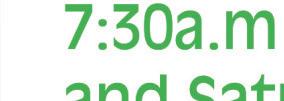
























































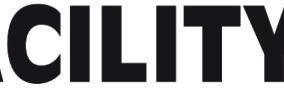

























































































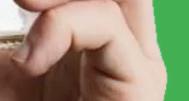
































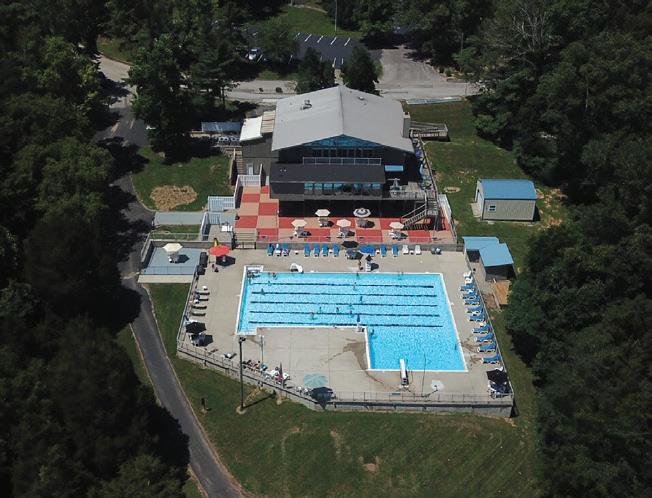













































MONDAY, JULY 22, 2024


Check-in 8:30 a.m.
Judging 9 a.m.
Goat Barn





All classes open to Meade County 4-H members (9-18 years old) and Cloverbuds (5-8 years old). Unless otherwise indicated all classes are: Blue-$4.50; Red-$2.50; White-$1.50 RULES AND REQUIREMENTS




Show Time 11:00 a.m.
This show is only for current Meade County 4-H Poultry Club Members.


1. Five (5) bird limit per exhibitor.



2. All birds subject to testing by Kentucky Department of Agriculture.
3. Birds must be five (5) months of age or older.




1. All rabbits shall be identified by an ear tattoo. Rabbits shall be owned and under continual care of exhibitor.


3. This is a carrier show.


2. All rabbits on check-in date (Monday, July 22, 2024) will be checked for health problems and can be disqualified.

4. Each 4-H exhibitor can show five (5) rabbits.
5. All rabbits will be released following the 4-H Rabbit Show.



The following classes will be accepted:
1. Californian

6. Mixed Breed/Pet Class


2. Wool Breeds
3. All Lop Breeds
4. All other 4 Class Breeds

7. Best 4 Class
8. Best 6 Class


5. All other 6 Class Breeds


9. Best Pet 10.Poster
Showmanship Rules:




4. Birds must be checked in by 10:30 a.m. the day of the show.
5. Exhibitor must stay onsite for the show and remove their bird(s) promptly after the show.



6. All birds shall be owned by and under continual care of the exhibitor.
7. Any bird exhibiting signs of illness will be disqualified.



8. 4-H members MUST attend six (6) meetings during the 20232024 4-H season.


9. Members MUST participate in at least one (1) bird class plus showmanship and either the record book or skill-a-thon competition.


10. All birds will be released following the show.

1. Each exhibitor can show any one of their five (5) rabbits for showmanship.


2. All rabbits must be handled properly (no scuffing or picking up by the ears will be allowed).




1. Each member will use a bantam or standard chicken of their choice for showmanship. This bird does NOT have to be one shown in one of the classes.
2. All birds must be handled properly.

3. Exhibitors must wear proper show attire. Pants or jeans and long sleeves are acceptable. No shorts, short sleeves, open toe shoes or long dangle jewelry. Long hair must be worn back.



3. Members should dress appropriately for showmanship. No shorts, short sleeves, open toe shoes or dangling jewelry and long hair must be pulled back.



CLASSES: AWARDS:
1. Standard/Large Rooster Ribbon



4. Participation awards will be given upon completion.


2. Standard/Large Hen Ribbon
3. Bantam Rooster Ribbon









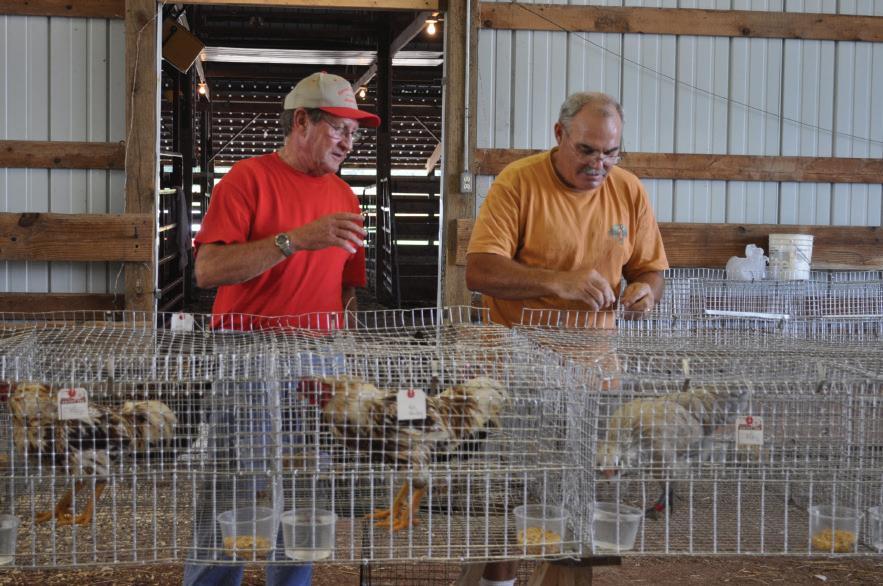











MONDAY, JULY 22,
5 p.m.
Livestock Arena










All classes open to Meade County 4-H/FFA Members only
Superintendent: Patrick Hobbs — 270-268-5955





Premiums: Blue $10, Red $7, White $5
RULES




1. All 4-H/FFA swine must be on the fairgrounds by 8:00 am, Monday, July 22, 2024, and ready for weigh-in at 9:00 am.
2. Every exhibitor is responsible for cleaning stall area. Absolutely no sawdust.
3. There will be a $50 charge to anyone leaving an unclean stall area.





4. Classes will be divided after weigh-in. Swine must weigh 200-285 lbs.






5. The local committee will exercise all reasonable precautions to prevent injuries or losses but will not be responsible for mishaps, injuries, losses or deaths that may befall animals or people during this event.





6. Exhibitors are expected to treat their animals in a manner consistent with good animal husbandry and display proper sportsmanship at all times. Failure to comply may result in disqualification of exhibitor if so recommended by the local show committee. Each local committee shall have the authority to interpret and enforce all rules.



7. All purebred swine showing in purebred market show must have purebred papers.
4-H/FFA Showmanship



8. Gilts exhibiting in the breeding gilt division CANNOT be shown in the Market Hog Show. Market animal can only show in market class.


1. FFA Showmanship (Freshmen & Sophomores) Banner


2. FFA Showmanship (Juniors & Seniors) Banner
3. 4-H Junior Showmanship, age 9-11 Banner
4. 4-H Intermediate Showmanship, age 12-13 Banner




4-H/FFA Swine Club Record Book Contest

5. 4-H Senior Showmanship, age 14-19 Banner
6. 4-H/FFA Grand Showman $50 Cash Contributed by: JC Hilltop Farm
7. 4-H/FFA Reserve Grand Showman


8. Cloverbud exhibitors, age 5-8 (open to Meade County youth only) Rosette




Prize: First $25.00, Second $15.00, Third $10.00

Contributed by: Mark Redmon Highlift Service



1. All Meade County 4-H/FFA members who auction a market hog are REQUIRED to enter.


4-H/FFA Market Hog Show (Barrows and Gilts-Crossbred and purebred classes)

3. Final judging will take place in early fall.

2. Record Books must meet requirements specified by swine club leaders.


Market Hog – Classes will be determined after weigh-in
Top five (5) overall - Market swine will be selected from Division Class Banner


4-H/FFA Premier Exhibitor

4-H/FFA Swine Breeding Gilt Class


Premiums: Lightweight: First $25, Second $20, Third $15, Fourth $10, Fifth $5

Junior $15.00
Intermediate $15.00



$5

Heavyweight: First $25, Second $20, Third $15, Fourth $10, Fifth

1. Breeding gilt classes are open to 4-H/FFA members only.
2. Each exhibitor may show one pig in the class.




Senior $15.00
Champion Premier Exhibitor $25 and Chair


Contributed by: FL Sipes Farms











3. Gilts exhibiting in the breeding gilt division CANNOT be shown in the Market Hog Show.
4. Breeding gilts will be divided into weight classes after weigh-in.





5. An overall grand champion and reserve grand champion will be selected from the weight divisions.

Grand Champion Breeding Gilt Rosette






Reserve Grand Champion Breeding Gilt Rosette























MONDAY, JULY 22, 2024
6 p.m.
Farm Bureau Community Building










DEADLINE FOR ENTRY, JULY 15, 2024 • SPONSOR FEE $40 (cash or money order only)
Winner will be crowned at Meade County Fairgrounds and will competein the state contest for the title of Miss Kentucky County Fair.



2023 Results:

PAGEANT DIRECTOR: Amy Haynes — 270-668-2787
ASSISTANTS: Maggie Love — 270-422-3597 • Bridget Love — 270-668-5370





Miss Meade County: Brooklyn Mattingly
First Runner Up: Raelyn Wilson




A contestant must have reached her 16th birthday and cannot have reached her 22nd birthday by October 31st of the year when the local contest is held. (Birth Certificate may be required)



Contestants must be residents of Meade County no less than one year prior to the Meade County Fair. (Proof of residency may be required) Contestants must be a natural-born female, and must be single.(Never married, never had a marriage annulled, and never had any children.) Birth Certificate may be required.





Winner must be able to attend opening day ceremonies at the Kentucky State Fair to assist with the state level Little Miss & Master Pageant in August






Winner must be willing to participate in award presentation events as needed throughout the entire week of the 2024 Meade County Fair. Judging will be on the basis of poise, personality, posture, beauty, general appearance, and stage presentation.Interview is 20%, One-Piece swimsuit is 40%, and evening gown is 40%.



A Miss Congeniality will be selected by the contestants, and a Humanitarian Award will be given to the contestant who provides the most donations for a local charity/cause.





A People’s Choice Award will be selected by an audience vote. (25 cents each) The winner will represent Meade Co. in the Miss Kentucky County Fair Pageant in January 2025 at the Galt House in Louisville, Ky. *a.) Contestant will be required to consult with both the pageant committee and/or a panel of individuals in regard to wardrobe, make-up, hair, etc....prior to their purchase /changes for the January pageant.This will allow both the contestant and the Meade County Fair to be well represented at State level.





*b.) The committee will also provide the opportunity for pre-pageant interviews and a complete dress rehearsal prior to the event.


The winner will receive roses and a crown, along with: $100.00 Cash / $150.00 towards her wardrobe for the state pageant. / $250.00 scholarship to be awarded upon enrollment in college. (No more than 5 years from crowning.)




Other Awards:1st Runner-Up - $75.00, ribbon / 2nd Runner-Up - $50.00, ribbon / 3rd Runner-Up - $25.00, ribbon / Miss Congeniality - $25.00, ribbon / People’s Choice Award – ribbon / Humanitarian Award - ribbon



Second Runner Up: Cyia Robertson
Miss Congeniality: Mia Nesmith, People’s Choice: Molly Matthews










In the event that the winner has not, or does not, meet the above stated rules, the first runner-up will then represent Meade County in the State Pageant. 13. Once an individual has held the title of “Miss Meade County Fair”, she will not be eligible to compete in the future for the same title.














6 p.m. Farm Bureau Community Building
















SPONSOR FEE $50 (cash or money order only)




PAGEANT DIRECTOR: Amy Haynes — 270-668-2787
ASSISTANTS: Meg Haynes — 270-668-7835 • Bridget Love — 270-668-5370








1. Contest will be held on Monday July 22, 2024 during the Miss Meade County Fair Pageant. Contestants prior to the pageant, (proof may be required).
2. Contestants must be a natural-born female, 22 years of age or older, with or without children, and married or unmarried. Only the first contestants will be eligible to compete. Pre-registration will be available. (Birth Certificate may be required)
3. Contestants will be judged on the basis of poise, personality, posture, beauty, general appearance and stage presentation. Each contestant will have a 3-minute interview where they will wear an outfit of their choice. Contestants will also be judged in an evening gown competition to be held during the Miss Meade County Fair Pageant. Interview = 40 percent/ Evening Gown = 60 percent.

4. Contestants will pay an entry fee of $50.00 when registering.
5. Contestants will have to pay entry into the Fairgrounds ($15.00 per person) if gates are open upon arrival.

6. Winner will receive a crown, sash, flowers, and a $150.00 cash prize. First runner-up will receive $50.00 and an award, Second runner-up will receive an award.

7. Winner may be asked to participate in events throughout fair week, and will be allowed to represent her title in the Fair parade the following year.

8. There will be an optional “Most Photogenic” competition:
a. $5.00 entry
b. 5x7 or 8x10 color or black and white photo accepted

c. Will be judged immediately following interview
d. Winner will receive an award at the awards presentation at the conclusion of the evening gown competition.

9. Once registered, anyone not abiding by the rules, or bringing negative attention to the Meade County Fair, will be disqualified and will not receive a refund.

10. The winner will represent Meade County in the Ms./Mrs.Kentucky County Fair Pageant in January 2025 at the Galt House in Louisville, Ky. In the state pageant both a Ms. Kentucky County Fair and a Mrs. Kentucky Fair winner will be crowned according to marital status.

11. In the event that the winner has not, or does not, meet the above stated rules, the first runner-up will then respresent Meade County in the State Pageant.

12. Once an individual has held the title of “Ms. Meade County Fair”, she will not be eligible to compete in the future for the same title.












MONDAY, JULY 22, 2024
7 p.m. Horse Arena
884 Hillcrest Dr., Brandenburg, KY 40108









Entry Fees and Premiums:

SUPERINTENDENT: Russ Fackler — 270-668-2974





Classes #1 and #2 – no entry fee, trophies and ribbons to all. All other classes – $10 entry fee, payback – $40, $30, $20, $10.
Negative Coggins and health certificates required.





Classes may be added, changed or eliminated at the discretion and show superintendent.
20. Hackney Pony Open


1. Lead Line – Any breed, Rider under age 8
2. Tiny Tot Halter – Assisted by adult, handler under age 8, (No stallions)




21. Three Gaited Open
22. Roaster Pony to Bike


3. Open Halter – Any breed except miniatures
4. Miniature Halter – Weanlings & yearlings
5. Miniature Halter – Stallions, age 2 and over




23. Miniature Horse Youth Pleasure Driving – Age 17 & under
24. Roaster Horse to Bike


6. Miniature Halter – Geldings, age 2 and over
7. Miniature Halter – Mares, age 2 and over
8. Miniature Halter – Open - any age and sex




25. Five Gaited Open
26. Open Costume Class


9. Miniature Halter – Shown by youth, age 17 & under
10. Miniature Halter – Spotted or Multicolored
11. Open Showmanship – Any breed



12. Youth Showmanship – Any breed, age 17& under
13. Open Walk and Favorite Gait
14. Youth Walk and Favorite Gait – Age 17 & under


15. Show Pleasure Open
16. Harness Pony Open




17. Old Timers Country Pleasure – Walk and favorite gait, Rider over age 50
18. Fine Harness Open


19. Miniature Horse Open Pleasure Driving









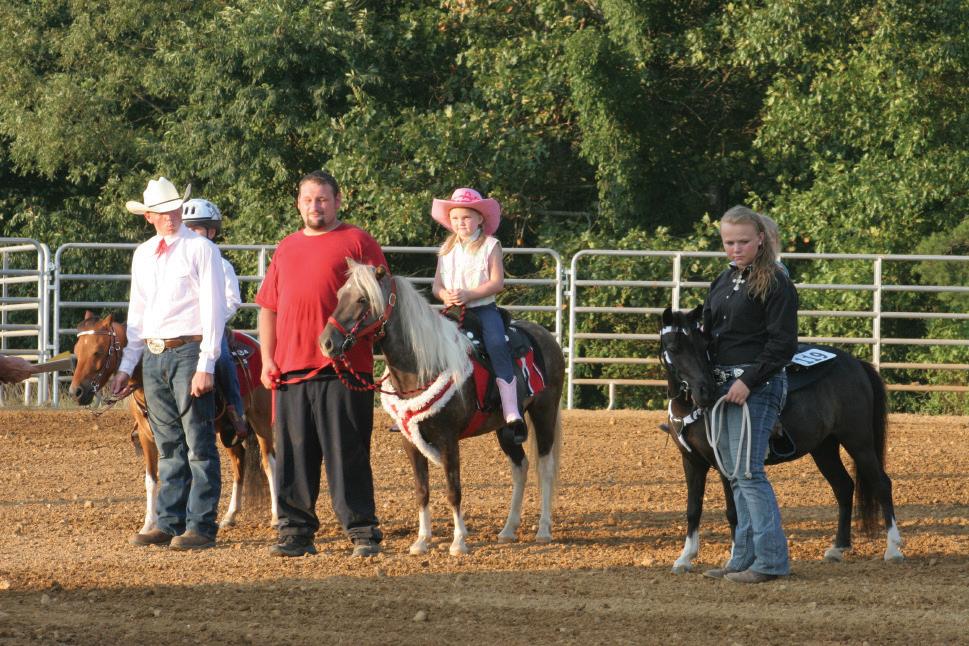


































































































































































































































































































































































































MONDAY, JULY 22, 2024
7:30 p.m. Main Arena







Lawn Mower Derby






$30 Entry Fee Trophy


PROMOTER: John Peck 859-393-8693

SUPERINTENDENTS: Chuck Haynes, 270-828-5154 and Kevin Compton, 270-422-3186



ALL PRIZE MONEY GUARANTEED!
Big Car Street Stock


Kids Power Wheels







$50 Entry Fee
1st. $1,200 + Trophy (King of Meade County)


2nd. $500 + Trophy

3rd. $200 + Trophy Maddog: $300 + Trophy



ALL TOP DOG RULES APPLY!


Sponsored by Meade County Fair Board



10 p.m. Main Arena








$10 Entry

All Kids ReceiveTrophy
Mon. July 22








1st: $5,000 2nd: $1,000 • 3rd: $1,000 •4th: $1,000 $8,000 Cash Giveaway















1. Money given away Monday, July 22, approximately 10 p.m. at the Meade County Fairgrounds. Winner MUST be present to win.






2. The winner will be determined in a random drawing conducted by the members of the Fair Board. By participating, entrants accept and agree to be bound by these rules, and the decision of the fair board members is final.
3. Must have matching ticket stub to win. No advance tickets. Winner will be called by name and number from the ticket stub. Tickets must be signed to be valid. One ticket per paid admission. Entrant must pay regular gate admission to receive ticket.





4. The Meade County Fair Board and members of their immediate household are ineligible.





5. Subject to all local, state and federal regulations. Taxes on prize are the responsibility of the winner.





6. The only ticket drop box available will be at the Meade County Fairgrounds on Monday, July 22, from 6 to 9:30 p.m.





























SUPERINTENDENT: Stephanie Parker — 270-863-2055 or email: sparker@bbtel.com to sign up

22 act. Can be single or group acts.
2. Act must not be over four minutes long.





1. Entries must be emailed to sparker@bbtel.com and sent no later than July 15. Complete rules given at registration.




3. Any type of clean talent admitted as follows: twirling, dancing, vocal, instrumental, pantomime, acrobat, comedy act, variety
4. There will be three divisions: Division I – ages 9 and under, Division II – ages 10 through 14, Division III – ages 15 through 20.



5. Acts will be limited in each division.





6. The age limit is 20 years and under, and contestants must be a resident of Meade County. Contest is for amateurs only.

7. The winner in each division will receive a trophy. Second and third prize winners will receive ribbons. The overall champion will receive a trophy.
9. Any previous grand champion will not be eligible to enter.







8. The overall champion will compete in the state contest at the Kentucky State Fair and must be between 13-20 years of age.













Vocal: Shall consist of a performance by a vocalist(s). An instrumental accompaniment by the performer or others is allowed, but must assume the pure character of an accompaniment. The test shall be whether the performance would stand alone if accompaniment was removed. No voice, voices, record or tape with vocal utterance may be used for accompaniment. This includes recorded live voices and voices that are produced and recorded synthetically (i.e. synthesizers or digitally sampled).





Instrumental Solo or Band: Shall consist of a solo instrumental performance without vocal utterance or a band. In instrumental solo, the only accompaniment allowed is a live or taped acoustical piano. If the instrument is piano, no accompaniment is allowed. In the use of electronic keyboard, the contestant must create all sound live.





Dance Solo and Ensemble Categories: Shall consist of a performance by a dancer or dancers. Accompanists are permitted, but must not assume visual importance. Acrobatics or gymnastics will be judged in another category. Vocal performance will not be judged.


Acrobatic/Gymnastic Solo or Group: Shall consist of a solo or group performance. At least one-third of the performance must be acrobatics or gymnastics, but no more than two-thirds should be acrobatic or gymnastic movements. This should be a choreographed performance.










Variety: Shall consist of a performance by one or more persons. This category is intended to provide a proper showcase for those acts not listed in any other category, ex.: ventriloquist, juggler, comedian. (A vocalist or vocal group accompanying themselves would not normally meet this test.) Assignment to this category is at the discretion of the State Fair.




Shall consist of a performance by one or more persons including both song and dance. At least one-third of the performance must be Performers who fit the description of another category may not appear in the Song and Dance category.

















































































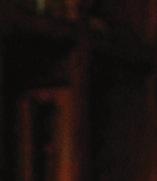













































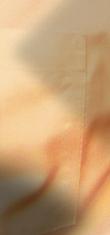




















































Senator Steve Meredith is hard at work, problem-solving pressing, conservative issues in the Kentucky








A Christian husband, father and grandfather, Steve Meredith fights for our future generations.









For real results, follow Steve’s legislative record as he defends our values and champions better options for families in Breckinridge, Butler, Grayson, Meade, and Ohio Counties.


Paid for by Steve Meredith for State Senate State Senate. our future generations.
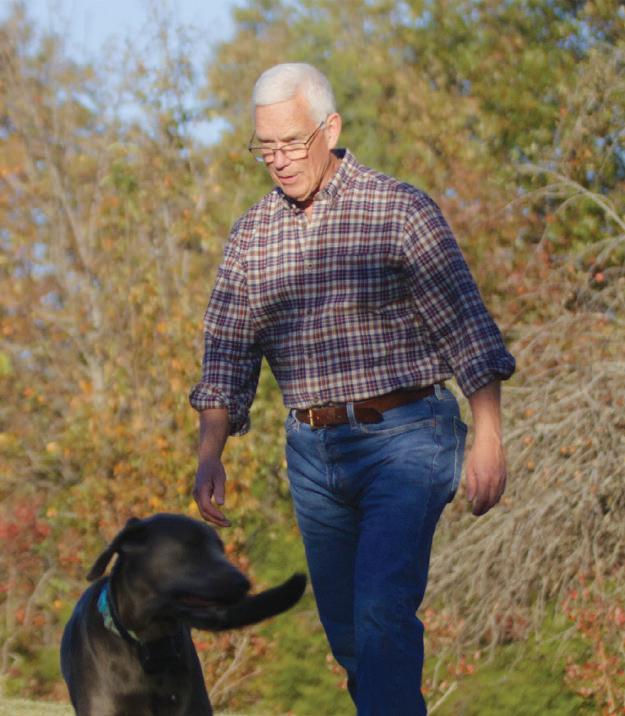





























































































TUESDAY, JULY 23, 2024
10 a.m. - 1 p.m. For all special needs participants and caregivers.










































































































TUESDAY, JULY 23, 2024
4:30 p.m.
Livestock Barn








All classes open to Meade County 4-H/FFA Members only Unless otherwise indicated all classes are: Market Lambs-Blue $10, Red $7, White $5

SUPERINTENDENTS: Angie Argabright, 270-668-4402 and Dana Moore, 270-945-4035





1. All 4-H and FFA lambs must be on the fairgrounds by 10:00 a.m., Tuesday, July 23, 2024, and ready for weigh-in at 10:00 am.


2. Market Lamb classes will be broken down after final weigh-in.



3. This show is open to 4-H and FFA members engaged in the Meade County lamb project.


4. Exhibitors may enter purebred and grade ewe and wether lambs. Induced cryptorchids, short scrotum lambs and ram lambs may not be shown.

5. All lambs must be accompanied by a certificate of veterinary examination.
6. All lambs must be owned by member and tagged at earlier tag-in date.
7. Lambs will be shown by weight. Weight ranges 50 lbs. or above.






9. Bedding must be furnished by the exhibitor. NO Sawdust.



8. Lambs must be docked and clean castrated, and the animal must be slick above the knee and hock (1/4 inch or less).


10. All lambs to be sold in the Meade County Fair 4-H/FFA Youth Auction must meet the Meade County Fair Youth Auction consignor regulations.





11. The local committee will exercise all reasonable precautions to prevent injuries or losses, but will not be responsible for mishaps, injuries, losses or deaths that may befall animals or people during this event.

12. Exhibitors are expected to treat their animals in a manner consistent with good animal husbandry and display proper sportsmanship at all times. Four on the floor is expected. Failure to comply may result in disqualification of exhibitor if recommended by the local show committee. Each local committee shall have the authority to interpret and enforce all rules.









MARKET LAMB SHOW


4-H/FFA Market Lamb Show
Market Lambs – Class broken after weigh-in


FFA Showmanship


Top five (5) overall
Senior Showmanship (Juniors, Seniors and FFA members under 22) Banner


4-H/FFA Grand Champion Market Lamb
4-H/FFA Reserve Grand Champion Market Lamb


4-H Showmanship



Junior Showmanship (Freshmen and Sophomores) Banner

4-H/FFA 3rd Overall Market Lamb
4-H/FFA 4th Overall Market Lamb
4-H/FFA 5th Overall Market Lamb


Senior Showmanship (14 to 18) Banner
Intermediate Showmanship (12-13) Banner



Junior Showmanship (9-11) Banner
Showmanship Grand Showman
Contributed by: Outdoor Specialties


Showmanship Reserve Grand Champion

Contributed by: Meade County Kids Academy 4-H/FFA Sheep Club Premier Exhibitor




Contributed by: Doe Run Federa Credit Union
$100.00

Grand Champion Premier Exhibitor









4-H Cloverbud Showmanship (5-8 Meade County Youth Only) Rosette
Contributed by: Bruce & Angie Argabright
Grand Champion Premier Exhibitor $25
Contributed by: Doe Run Federal Credit Union


4-H/FFA Sheep Club Record Book Contest
Prize: 1st $50; 2nd $25; 3rd $15; 4th $10


Contributed by: Ray’s Ford





1. All Meade County 4-H/FFA members who auction a market lamb are required to enter.
2. Record books must meet requirements specified by sheep club leader.


3. Final judging will take place early fall.












Following 4-H/FFA Sheep
Check in by 3:30 p.m. All shows in Livestock Barn








SUPERINTENDENTS: Angie Argabright — 270-668-4402 • Dana Moore — 270-945-4035






PREMIUMS: First - $12, Second - $10, Third - $8, Fourth - $5 and Fifth - $5.

1. Health papers are required.
2. Animals must be on the grounds by 3:30 p.m. July 23, 2024.








Tue. July 23

4. Exhibitors must pay admission to the grounds.




3. The Meade County Fair Board will not be responsible for loss of animals or equipment in case of fire, theft or any other reason.
5. Exhibitors are required to clean up stall and shearing areas. A $50 fee will be charged for unclean stalls.


6. Bedding must be furnished by the exhibitor, NO Sawdust




7. All first and second place class winners must be lead into ring to compete








Novice Showmanship Champion Banner
Novice Grand Champion Banner





Contributed by: Dana Moore and Angie Argabright







Market Lambs – Class broken after weigh-in
Grand Champion Market Lamb
Reserve Grand Champion Market Lamb



$50
$25





Contributed by: Bruce and Angie Argabright






PREMIUMS: Lightweight: First - $12, Second - $10, Third - $8, Fourth - $5 and Fifth - $5







Heavyweight: First - $12, Second - $10, Third - $8, Fourth - $5 and Fifth - $5

1. Breeding shoop classes are open





2. Each exhibitor may show one lamb in the class.





3. Ewes exhibiting in the Breeding Sheep division CAN NOT be shown in the Market Lamb Show.
4. Breeding sheep will be divided into weight classes after weigh-in.




5. An Overall Grand Champion will be selected from the weight division.
Grand Champion Breeding Ewe






$50








Reserve Grand Champion Breeding Ewe
Contributed by: Meade County Kids Academy





$25



























TUESDAY, JULY 23,
5 p.m. Immediately following 4-H/FFA Sheep Show Livestock Arena




23




All classes open to Meade County 4-H/FFA Members only PREMIUMS: Blue $10, Red $7, White $5 RULES

SUPERINTENDENT: Stephanie Lee — 270-668-9323 • Misty Benham — 270-945-7645


1. Exhibitors must abide by the general rules for the fair and livestock.




2. All 4-H and FFA Goats must be on the fairgrounds by 10:00 am, Tuesday, July 23, 2024, and ready for weigh-in at 11:00 am.


3. Goats must be stalled in showbarn (not on trailer) by 11:00 am day of show.



4. This show is open to 4-H and FFA members engaged in the Meade County goat project.


5. Animals must have an approved health certificate. Any OBVIOUSLY UNHEALTHY animal may result in the entire herd’s disqualification from the show, subject to the ruling of the show committee and/or the official veterinarians.
6. Goats shown must be tipped to at least ½ inch or disbudded, regardless of child’s age.
7. Age of animals will be computed from July 23, 2024.






8. Goats will be shown by weight. Weight ranges 35 lbs. or above.
9. Entries in the Market Goat and Commercial Doe Division must still have their milk teeth.
10. Show management reserves the right to cancel, combine or split classes as necessary.



11. Exhibitors are responsible for bringing their own feed/water buckets.




12. Females cannot be entered in both breeding and marketing classes.



13. Goats shown in showmanship must be tagged in the person’s name that is showing unless they are a Cloverbud.

14. The local committee will exercise all reasonable precautions to prevent injuries or losses, but will not be responsible for mishaps, injuries, losses or deaths.






MARKET GOAT SHOW




15. Exhibitors are expected to treat their animals in a manner consistent with good animal husbandry and display proper sportsmanship at all times. Four on the floor is expected. Failure to comply may result in disqualification of exhibitor if recommended by the local show committee. Each local committee shall have the authority to interpret and enforce all rules.
4-H/FFA Market Wether or Doe
1. Lightweight



4-H/FFA Showmanship
FFA Showmanship
Senior Showmanship (Juniors, Senior)



2. Middleweight
3. Heavyweight

Top five (5) overall Banner


Junior Showmanship (Freshmen and Sophomores)
4-H Showmanship


Senior Showmanship (14 to 19)
Intermediate Showmanship (12-13)
Junior Showmanship (9-11)


4-H/FFA Grand Showman
Contributed by: Dean Lee, CFM


4-H/FFA Reserve Grand Showman







4-H/FFA Grand Champion Market Goat Banner
Contributed by: Meade County Bank



$100


4-H/FFA Goat Club Premier Exhibitor


4-H/FFA Dairy Goat


4-H Cloverbud Showmanship (5-8 Meade County Youth Only)Rosette

Contributed by: Meade - Breck Goat Producers

4-H/FFA Goat Club Record Book Contest


0-under 3 months
3 month to under 6 months
6 months to under 9 months


9 months to under 12 months


Prize: 1st $25; 2nd $15; 3rd $10
Contributed by: Dean Lee, CFM


$50
4-H/FFA Reserve Grand Champion Market Goat Banner Contributed by: Meade-Breck Goat Producers




1. All Meade County 4-H/FFA members who auction a market goat are required to enter.


4-H/FFA Grand Champion Dairy Goat $50 Rosette
Contributed my Meade-Breck Goat Producers


2. Record books must meet requirements specified by goat club leader.
3. Final judging will take place early fall.







4-H/FFA Reserve Grand Champion Dairy Goat Rosette













TUESDAY, JULY 23,








SUPERINTENDENTS: Stephanie Lee — 270-668-9323 & Alicia Lee — 270-668-2015


PREMIUMS: First $12, Second $10, Third $8, Fourth $5 and Fifth $5



RULES



1. Full-blood purebred and percentage animals, but registration papers must be presented upon arrival at the show for verification
2. Breeding animals for the open show can be brought in between noon and 3 p.m., commercial does & market and goats will be weighed in between 1 p.m. and 3 p.m. No late entries.
3. Show will start once 4-H/FFA Market show is over.



4. If animal is shown in the youth market class it CANNOT be shown in the open class.



5. Exhibitors must abide by the general rules for the fair and livestock.




Tue. July 23




6. Animals must have an approved health certificate. Any OBVIOUSLY UNHEALTHY animal may result in the entire herd’s disqualification, subject to the ruling of the show committee and/or the official veterinarians.
7. Show management reserves the right to cancel, combine, or split classes as necessary.
8. Exhibitors are responsible for bringing their own feed/water buckets.






9. The local committee will exercise all reasonable precautions to prevent injuries or losses, but will not be responsible for mishaps, injuries, losses or deaths during this event.





10. Exhibitors are expected to treat their goats in a manner consistent with good animal husbandry. Failure to comply may result in disqualification of exhibitor if recommended by the local show committee. Each local committee shall have the authority to interpret and enforce all rules.








11. Registration papers must be presented when entering full-blood/purebred classes. All full-blood purebred and percentage goats must be registered in the name of the exhibitor only. Animals registered in farm names or anyone else’s name will not be accepted. The original registration certificate is required for all animals 6 months of age or older. All Boer goats must be registered with an approved Boer goat association. Animals that are under 6 months and are entered on pending applications must show proof that the application has been submitted to the approved Boer goat association for processing. These must be shown to the show secretary at check in. No copies of the registered or stamped applications will be accepted. Faxed copies will be accepted.





0-under 3 months
Commercial Doe Class – Classes to be broken after weigh-in
OPEN DAIRY GOAT CLASS


3 month to under 6 months
6 months to under 9 months


9 months to under 12 months
12 months to under 24 months
24 months to under 36 months
36 months to older



12. 6 months to under 9 months


13. 9 months to under 12 months



PERCENTAGE FEMALE CLASS
1. 0-under 3 months


2. 3 months to under 6 months
3. 6 months to under 9 months
4. 9 months to under 12 months


5. 12 months to under 16 months
6. 16 months to under 20 months


7. 20 months to under 24

Junior Grand Champion / Junior Reserve Champion
14. 12 months to under 16 months


15. 16 months to under 20 months
16. 20 months to under 24 months


Yearling Grand Champion / Yearling Reserve Champion


17. 24 months to under 36 months
18. 36 months to 48 months

Junior Grand Champion / Junior Reserve Champion

Senior Grand Champion / Senior Reserve Champion


19. 0 to under 3 months

Yearling Grand Champion / Yearling Reserve Champion
8. 24 months to under 36 months


9. 36 months to 48 months




Overall Champion and Reserve Champion FB/PB Does FULL-BLOOD/PUREBRED BUCKS

20. 3 months to under 6 months
21. 6 months to under 9 months
22. 9 months to under 12 months

Senior Grand Champion / Senior Reserve Champion
Overall Grand Champion and Reserve Champion Percentage Does FULL-BLOOD/ PUREBRED FEMALES
10. 0 to under 3 months
11. 3 months to under 6 months








Junior Grand Champion / Junior Reserve Champion
23. 12 months to under 16 months
24. 16 months to under 20 months




25. 20 months to under 24 months


Yearling Grand Champion / Yearling Reserve Champion
26. 24 months to under 36 months




27. 36 months to 48 months
Senior Grand Champion / Senior Reserve Champion




Overall Grand Champion and Reserve Champion















4 p.m.
Farm Bureau Community







PAGEANT DIRECTORS:




Pam Medley - 730 Coleman Rd, Vine Grove Ky 40175 • 270-668-9714
Tiffany Medley - at the Fitness Room in Flaherty, Ky • 270-980-0914 or 270-945-1731







Deadline for entry is July 17. A text or email will be sent to you confirming your registration after entry fee and registration is received Form and entry fee MUST be turned in to Pam Medley or Tiffany Medley no later than July 17th in order for the contestant to be registered. NO entries will be accepted after this date.




PRIZES: Winner – Crown, flowers and plaque; First runner-up – Flowers and plaque; Second runner-up – Flowers and plaque. Third runner up – Flowers and plaque.


1. Must be a resident of Meade County for at least one year.


2. Must have reached 2nd birthday and cannot have reached their 3rd birthday by date of the pageant.


3. Contestants must be prepared to show a birth certificate if questioned.
4. Contestants will be judged on beauty, personality and grooming (a pageant dress is NOT required but can be worn).

5. Contestants will only compete in dress attire (no interviews).









6. Each contestant must obtain a $15 sponsor fee to enter, check made payable to: MEADE CO. FAIR

7. All registered contestants must arrive at the Farm Bureau Bldg. No later than 3:15 to check in and pick up their number and practice on stage.


8. The stage will be in a “7” shape and have three X’s. Contestants will stop at each X and look at the judges and then go off at the end of the runway.

9. Everyone must pay for a regular fair admission at the gate.

2023 RESULTS: Pee Wee Miss: Bella Freeman First Runner-Up - Lottie Richardson Second Runner-Up - Blake Brown Third Runner-Up Lilly Gumm











PAGEANT DIRECTORS:






Pam Medley - 730 Coleman Rd, Vine Grove Ky 40175 • 270-668-9714
Tiffany Medley - at the Fitness Room in Flaherty, Ky • 270-980-0914 or 270-945-1731








Deadline for entry is July 18th. A text or email will be sent to you confirming your registration after entry fee and registration is received Form and entry fee MUST be turned in to Pam Medley or Tiffany Medley no later than July 18th in order for the contestant to be registered. NO entries will be accepted after this date.



PRIZES: Winner – Crown, flowers and plaque; First runner-up – Flowers and plaque; Second runner-up – Flowers and plaque; Third runner-up – Flowers and plaque.


1. Must be a resident of Meade County for at least one year.



2. Must have reached 3rd birthday and cannot have reached their 5th birthday by date of the pageant.




3. Contestants must be prepared to show a birth certificate if questioned.
4. Contestants will be judged on beauty, personality and grooming (a pageant dress is NOT required but can be worn).



7. All registered contestants must arrive at the Farm Bureau Bldg. no later than 3:15 on July 23rd., to pick up their number, order pictures if they desire, and practice walking across stage, if they so desire, before the start of the pageant.


5. Contestants will only compete in dress attire (no interviews).





8. The stage will be in a “7” shape and have three X’s. Contestants will stop at each X and look at the judges and then go off at the end of the runway.
6. Each contestant must obtain a $15 sponsor fee to enter, made payable








9. Everyone must pay for a regular fair admission at the gate.












Fill out this Emcee sheet below exactly as you want the Emcee to introduce and tell about you. Detach and mail with entry fee to: Pam Medley 730 Colman Road, Vine Grove, KY 40175
Peewee Miss Pageant
Precious Miss Pageant


Full Name:

Address:

Phone:


Parents:

Email:











Favorite Food:








Hobbies/Activities:






Favorite TV Show:




Sponsor(S):





























































































6 p.m.
Farm Bureau Community Building










SUPERINTENDENT: Don McMahan — 270-828-4140
ENTRY FEE: $20 and a new deck of cards




LIMITED TO THE FIRST 32 TEAMS


PRIZES: Double elimination, 95% payback guaranteed – 1st, 60%, 2nd, 25%, 3rd, 10%, 4th, 5%.



2. Nine cards are dealt to each player with the last four cards face down in nest. Dealer must offer a cut before dealing.


1. Deck consists of 40 cards – 5 through 14. made by pointing to the bid amount with the bidder’s finger, not the color block. Color blocks are not to be touched until the bidder calls his trumps.



3. The highest bid is 100; lowest bid is 65. Dealer must take the bid at 65 if no other player bids.




4. Highest bidder must call his trump color before looking at the nest.
5. Bidder must hold all count cards (5, 10, 14) in his hand. If unable to discard without discarding a count card, the PENALTY is 100 points up for the opposing team and 100 points down for the bidder.







6. Bidder must turn four discards down when ready to play unless discarding trumps which must be turned face up. PENALTY is automatic set: opponents get what they make.

7. In the event of a misdeal, (dealing too many cards to any one player and after any player has looked at his cards), the dealer must deal again. No redeal due to the value of the cards.
8. The player sitting to the left of the bidder makes the first lead.







18. Teams, win or lose, must change tables after each game.

— BRING NEW DECK OF CARDS — CONTRIBUTORS
Adkisson Overhead Door • Bim’s Trucking and Ready Mix





9. In the event of a player reneging (not following suit when he does have a card of the color led) if the play can be straightened out before the next play with no harm to either side, no penalty applies.






10. If either team reneges, the PENALTY is 100 points up for the opposing team and 100 points back for the team that reneged.
11. All tricks should be stacked separately; therefore, if either team is accused of reneging, the cards played to that point are set aside (no looking at this time). The hand is played out. The cards in question are taken off the stack one trick at a time and looked at by all players concerned. If a renege did occur, the penalty in # 10 applies.




12. Cheating in any form – bidding out of turn, signals, bottom dealing, talking (that’s my trick, throw on, etc.) or anything to harm the opponents, PENALTY is loss of game.




13. If both teams reach 300 or more in the same hand, the bidding team wins.






14. No looking at caught tricks after the first card of the next play is made.
15. No person other than the four players at the table may touch the cards.



16. Playing out of turn by showing one’s cards (ex. your partner catches a trick, but his or her partner leads or a player thinks he has the rest of the tricks and throws his cards down on the table). PENALTY: Loss of 100 points, opponents up 100.
















17. When playing with a color and bid number board, the bid is to be














7 p.m. Horse Arena









SUPERINTENDENT: Quentin Dodson — 270-945-2208




23





Eliminations: 7 p.m. with registration and practice starting 2 hours prior (track permitting)



FB: KOI Drag Racing • www.koidragracing.com • 859-576-7380, 859-351-9417


Day of event Call Quinten Dodson 270-945-2208


Classes are $10 entry fee, with 100% payback. Diesel classes are $20 entry fee, with 100% payback



Kids Classes, Quads, Dirt Bikes

Modified Classes, Open Classes, SXS Classes








Diesel, Gas 2-Wheel Drive, 4-Wheel Drive Buggies, Semis










7:30 p.m. Main Arena








SUPERINTENDENTS:


Jason Allen — 270-668-3017 • Kevin Mills — 270-945-4533 • Fred L. Sipes — 270-668-2783 • Day of Pull — 270-422-2000


Light Limited Super Stocks Tractors Hot Farm Tractors


CLASSES

Pro-Stock 4wd Trucks
Diesel Trucks 4x4



Light Limited Pro Stock Trucks
CONTRIBUTORS



EQUIPMENT PROVIDED BY:


StoneGate Realty • Ray’s Ford •Rivertown Spirits
Save-Rite Pharmacy • Dowell’s Hardware


Compression Fabrication Machine C & S Pumping









Boyd Caterpillar
Hobdy-Dye-Read, Hardinsburg




Wright Implement Co. Hardinsburg

Jacobi Sales Inc. of Elizabethtown and Palmyra
Rent an Emmert • Lincoln Trail Powers of Past Club


Phillips Brothers Construction – Larry Phillips

Caster Mow’n Service • Ford Lawn Service
F.L. Sipes Farms • United Rentals




Trophies sponsored by the Sipes family: Fred L. Sipes and Melinda Banks
Scales will open for weigh-in at 4:30 p.m. • Tech man's decision will be final.






Laser measurements by Smith Engineering & Land Surveys











































































































































































































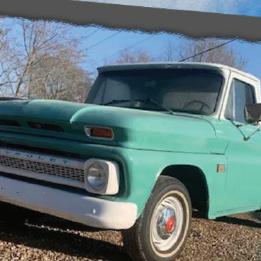
































































































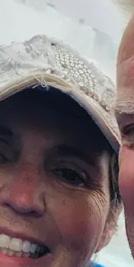



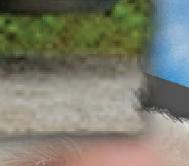





























SUPERINTENDENTS: Laura Gayle Stith, 270-668-4996


All classes open to Meade County 4-H/FFA Members only (will follow 4-H/FFA Club Rules) Unless otherwise indicated all classes are: Blue $15, Red $10, White $7


1. Using coloring agents to alter the natural color of an animal is not allowed.








2. Market Beef animals must be owned by exhibitor, be 100% beef blood, weigh a minimum of 900 lbs. Must be tagged at official validation site by the initial weigh-in date. If any Market Beef animal is under the weight limits, that Market Beef animal will be disqualified from the youth auction but not from showing. The maximum weight for auction price per pound will be 1,450 lbs


3. Market Heifers and Market Steers will show in the same weight classes.





4. All 4-H/FFA beef must be on the fairgrounds by 1:00 pm, Tuesday, July 23, 2024, and ready for weigh-in at 2:00 pm.






5. Bedding for animals will be bagged bedding, NO sawdust allowed. You will be responsible for cleaning up your animals’ bedding. All bedding must be removed after the sale. If you do not clean your pen, you will be assessed a $50.00 fee per tie that will be deducted from your auction proceeds.






6. The local committee will exercise all reasonable precautions to prevent injuries or losses but will not be responsible for mishaps, injuries, losses or deaths that may befall animals or people during this event.
7. Exhibitors are expected to treat their animals in a manner consistent with good animal husbandry and display proper sportsmanship at all times. Failure to comply may result in disqualification of exhibitor if so recommended by the local show committee. Each local committee shall have the authority to interpret and enforce all rules.



4-H/FFA Showmanship Classes



8. Announcements made day of the show overrides fair catalog.

1. FFA Showmanship (Freshmen & Sophomores)$25/Banner



4-H/FFA Premier Exhibitor



3. 4-H Junior Showmanship, age 9-11


2. FFA Showmanship (Juniors & Seniors)
5. 4-H Senior Showmanship, age 14-19
$25/Banner
$25/Banner




4. 4-H Intermediate Showmanship, age 12-13


6. Grand FFA Showman
$25/Banner
$25/Banner
Contributed by: Don Hayes Angus Farm and Meade Stock Farm


Contributed by: Laura Stith


7. Grand 4-H Showman


Contributed by: Dennis Farmer in memory of Harry Mills
8. Supreme 4-H/FFA Showman
$50
$50


4-H/FFA Beef Herdsman Award
Judging will take place Tuesday evening (TBD)
Contributed by: Laura Stith/Glenn Redmon


Contributed by: Dennis Farmer in memory of Harry Mills
Contributed by: Dennis Farmer in memory of Harry Mills


4-H/FFA Market Beef Classes
1. Lightweight

3. Heavyweight


$100

4-H/FFA Beef Club Record Book Contest
Prize: First $50.00, Second $25.00, Third $10.00



2. Middleweight

Contributed by: Meade County Cattlemen’s Association


1. All Meade County 4-H/FFA members who auction a market beef in the beef show are REQUIRED to enter.


Top Five (5) overall Banner
4-H/FFA Grand Champion Market Beef

$70 Cash/Banner

2. Record Books must meet requirements specified by beef club leaders.


Contributed by: Jamie & Jean Barger, Barger Farms
4-H/FFA Reserve Grand Champion Market Beef $30 Cash/Banner
Contributed by: Jamie & Jean Barger, Barger Farms




3.Final judging will take place in early fall.



1. Best Meade County Market Beef $200 Cash/Banner
(1/2 to Champion, remainder divided to other entries)
Contributed by: Judy D. Jackson and Chad & Lucy Vessels





























SUPERINTENDENT: Cody Haught



All classes open to Meade County 4-H/FFA Members only. Unless otherwise indicated all classes are: Blue





Breed classes are: Commercial, Angus, Hereford, Shorthorn, %AOB and AOB Divisions


Champion Heifer




1. Junior Heifer Calf
2. Winter Heifer Calf

3. Senior Heifer Calf


All breed champions will compete for Grand and Reserve Grand Champion
5. Early Summer Yearling Heifer
6. Spring Yearling Heifers



4. Late Summer Yearling Heifer

Rosette

7. Junior Yearling Heifers
8. Senior Yearling Heifers
Champion Meade County Bred and Owned Heifer $100 Cash


(all first place winners must be led into ring to compete)
Reserve Champion Heifer


Rosette
(all first place winners and second place in class that produced champion)

Grand Champion Heifer Trophy & $100 Cash
Contributed by: Meade County Bank



Reserve Grand Champion Heifer Trophy & $50 Cash
Contributed by: Meade County Bank
9. Cow-Calf Pair Trophy/Rosette



10. Junior Bull Calves
11. Senior Bull Calves


Contributed by: Mills Triple A Angus, Meade Stock Farm, Stith’s Big D Angus and Oak Ridge Angus, Kenny & Becky Haught
Reserve Champion Meade County Bred and Owned Heifer$75 Cash



Contributed by: Mills Triple A Angus, Meade Stock Farm, Stith’s Big D Angus and Oak Ridge Angus, Kenny & Becky Haught

(Cow at any age with nursing calf at side)


13. Junior Yearling Bulls


14. Senior Yearling Bulls
15. Two Year Old Bulls
16. Other Age Bulls

Wed. July 24




Grand Champion Bull

12. Summer Yearling Bulls
(all first place winners must be led into ring to compete)


Trophy/Rosette
Reserve Grand Champion Bull Rosette


(all first place class winners and second place in class that produced Grand Champion Bull)







Champion Bred & Owned Bull
(must be bred, born and owned by exhibitor)






Reserve Champion Bred & Owned Bull





youth show








Steers must be weighed upon arrival at the fairgrounds to see which class they will be entered in.


1. Heifer/Steers - Lightweight
2. Heifer/Steers - Mediumweight 3. Heifer/Steers - Heavyweight










Champion Market Animal Trophy & Rosette
(All first place winners in classes.)

Reserve Champion Market Animal Rosette $25 (All first place class winners and second place winner in class that produced Champion Steer.)


















WEDNESDAY, JULY 24, 2024
Anyone who pays general admission fee gets $1.00 off. Compliments of Meade County Farm Bureau.

















Noon Main Arena





SUPERINTENDENT: Gery Whelan




July 24



Ages 6 and under:
Boy-Girl Division:


PRIZES: First $3, Second $2, Third $1 • AGE GROUPS: Age groups and events are subject to change.



35-yard dash; 3-legged race; basketball shooting; softball throw.


Ages 11-13:
50-yard dash; 3-legged race; basketball shooting; softball throw. Ages 14-21:



Ages 7-10:
50-yard dash; 3-legged race; basketball shooting; softball throw.







Ages 22 and over:




75-yard dash; 3-legged race; basketball shooting; softball throw.
75-yard dash; 3-legged race; basketball shooting; softball throw.
Contributor: Monument Chemical








Register for the contest by calling the Meade County Extension office at 270-422-4958 no later than Tuesday, July 23 so set up can be arranged based on the number of entries.







Adult Prizes: 1st place: $75 gift card; 2nd place: $50 gift card; 3rd place: $25 gift card
Youth Prizes: 1st place: $40 gift card; 2nd place: $25 gift card; 3rd place: King Arthur Tote Bag
RULES:
1. The contest is open to all ages.


ENTRY FORM FOR THE KING ARTHUR BAKING CONTEST 12:15 p.m. Home and Garden Building






2. Contestants must submit 3 frosted cupcakes on a disposal plate or in a container.
3. Must provide a legible recipe, with the entry, preferably typed.



Name:______________________________________________
Telephone Number:___________________________



4. Must use King Arthur flour and bring the opened bag or UPC code from the bag with the entry.
5. An entry form must also accompany the entry.



Mailing Address:______________________________________ ____ Youth (18 and under) ____ Adult (19 and Above)


7. Entries will be judged based on
6. Failure to follow the rules may result in disqualification.
a. Taste 50 points b.Texture 40 points











c. Creativity and overall appearance 10 points Total: 100 points














1 p.m.
Livestock Arena








Round Robin Champion Showman

Show order: Cattle, Swine, Sheep, Goats



SUPERINTENDENT: Laura Stith — 270-668-4996


they received in the Round Robin Competition removed from their overall Round Robin Competition score. The one with the highest

Buckle & Banner
Contributed by: Butler Farms in Memory of Brian Butler RULES


1) The overall champion showman of each species will compete for the Round Robin Competition at the Meade County Fair.



remaining point total will be declared the Round Robin Champion Showman.






2) Exhibitors will be required to show all species in the Round Robin Competition.


5) In the event a showman is the overall champion showman in multiple species, they will choose which species they will represent in the Round Robin Competition. The reserve champion from species the individual chose not to represent will then be that species representative in the Round Robin Competition.




3) The judge will score each showman using .25 point increments between zero (0) and ten (10) in each species. The winner will be announced at the auction


4) In the event of a tie, the champion will determined as follows: The showmen tied will have the score from their representative species that



















6) An exhibitor may only win the Round Robin Award one time per his/her career.






7) The exhibitor may only show their species they represent. In the event they have multiple species, they CANNOT show that animal species upon entering the contest.


























































































WEDNESDAY, JULY 24, 2024
5 p.m. Livestock Arena













MEADE COUNTY FAIR 4-H/FFA YOUTH AUCTION COMMITTEE
Kenny Haught, Doug Banks, Fred L. Sipes, Laura Stith, Stephanie Lee, Angie Argabright, Dana Moore and Patrick Hobbs.




ADVISORS:
David Pace, Deana K. Reed, Noel Pack and Andy Mills



YOUTH AUCTION SUPERINTENDENT: Christy Pike











1. Market animals must be owned by the 4-H or FFA member and tagged with RFID tag. In the event of a lost tag, exhibitor must contact their FFA Advisor or Extension Office to receive instructions on re-tagging.

2. 4-H and FFA members can only sell through their senior year in high school. Each 4-H or FFA member can only sell one market animal per year.





3. Market animals must meet weight requirements as listed below upon arrival at the Meade County Fair.



a. Swine - 200-285 lbs., Market Beef - 900-1450 lbs., Lambs - 50 lbs. min., Goats - 35 lbs. min.
4. All Market animals will be grain fed and ready for slaughter.




5. Market animals must be on the fairgrounds at the specified times and remain on the fairgrounds until conclusion of the youth auction.

a. Swine - Mon., July 22 on grounds by 8:00 am
b. Lambs – Tues., July 23 on grounds by 10:00 am
c. Goats – Tues., July 23 on grounds by 10:00 am



Weigh-in - 9:00 am
Weigh-in - 10:00 am

Weigh-in - 11:00 am



d. Market Beef – Tues., July 23 on grounds by 1:00 pm





Weigh-in - 2:00 pm


6. The Grand Champion and Reserve Grand Champion animals will be required to be displayedwithin one hour after the completion of the show. (Optional-On Monday evening, the Champion/Reserve Champion hogs can remain in the livestock facility but must be in Champion pens by 6:00 pm Tuesday evening). All Champion animals leaving the fairgrounds must be in their respective pens between 6:00 pm - 11:00 pm They must stay in their respective Grand Champion and Reserve Grand Champion pens during this time (except for daily animal care) or forfeit their championship, banners, auction money and premiums. All Champion animals must be provided with feed and water daily by the exhibitor.








7. If an exhibitor is in BOTH 4-H and FFA, he/she must show in the program area (FFA/4-H) that is identified at the tagging (ex. if your form is signed by an FFA advisor, you show FFA).







8. Each market animal that sells must show in its respective show. Example: market hogs must show in market hog show, etc.
9. Each market animal will have a base selling price relative to its weight, and the price of the market animal at a stockyard on July 24, 2024. A representative from the stockyard will determine all base prices. The Auction Committee does not guarantee any reimbursement or responsibility of the base price.







10. Sale order will be as follows: 1st-Grand Champion, 2nd-Reserve Grand Champion, remaining market animals will draw for sale order. A selling fee will be charged to help pay for advertising. The fees are as follows: Swine 3%, Lambs 5%, Beef 2%, Goats 5%.




11. Showsuperintendents are responsible for overseeing the loading of market animal after the sale.

12. There will be a $50.00 charge per pen/tie to anyone leaving an unclean stall area. This will be deducted from the individual’s auction proceeds.






13. Any disputes or final decisions concerning the sale will be addressed and settled by the Meade County Fair 4-H/FFA Youth Auction Committee.









THERE IS NO GUARANTEE ALL ANIMALS WILL BE SOLD





14. Auction check must be cashed by December 31, 2024, or it will be forfeited back to the Meade County Fair 4-H/FFA Youth Auction Committee account.


















1. The sale is open to the public








2. Market animals will sell by the pound as printed on sale bill Each market animal will have a base or minimum starting bid. 3. Grand Champion of each species will be sold to highest bidder. Sale price of all other market animals shall not exceed price given WEDNESDAY, JULY 24,














4. Grand and Reserve Grand Champion animals will be placed on display within one hour after completion of the show and will remain on the Fairgrounds daily between 6:00 pm – 11:00 pm. (Optional-On Monday evening, the Champion/Reserve Champion hogs can remain in the livestock facility but must be in Champion pens by 6:00 pm Tuesday evening)


5. All market animals will be grain fed and ready for slaughter.
6. Buyer will be required to sign purchase acknowledgment for each animal purchased.





Wed. July 24 for their respective Grand Champion. In the event the Grand Champion does not sell, the Reserve Grand Champion will set the ceiling price.



7. Any announcement made from the auction box on sale date will take precedence over material printed in the catalog.
8. There will be a registration table located outside the auction barn next to the auction trailer.

9. If you are participating in a group purchase and know ahead of time, to help with book keeping, please pick up ONE buyer number before the auction listing your group.





10. Consignor will retain ownership/possession of animal at the conclusion of the auction.


11. Monetary donations will be split three ways – Meade County Fair 4-H/FFA Youth Auction Committee, FFA and 4-H Youth Development.




12. Buyer will not take possession of animal and will only be responsible for premium over market price.




13. Single buyers can pay night of auction. Multi-buyers will be billed.
14. Make checks payable to: Meade County Fair 4-H/FFA Youth Auction.




15. Any disputes or final decisions concerning the sale will be addressed and settled by the Meade County Fair 4-H/FFA Youth Auction Committee.











6 p.m. Main Arena












SUPERINTENDENTS: Fran Thompson — 270-828-8008 • Karen Stull — 270-668-1762 Register in arena at 5:30 p.m. or call to preregister. First 12 teams to sign up will compete. This contest will be postponed if raining or if the ring is muddy.











CONTRIBUTORS: Jeff Greer Insurance • Meade County Chiropratic • El camino’s

1. Team (age 18 or over) consists of a person to operate a golf cart and teammate to ride in a trailer behind the golf cart giving verbal instructions.







2. All drivers will be blindfolded. Teams will travel through a course with time penalties for mishaps. Winners will be determined by best time overall.















































































































































































































THURSDAY, JULY 25, 2024
Enter from 8:30 a.m. to noon Livestock Arena



SUPERINTENDENTS:






PICKUP ENTRIES: Thursday night, 8 - 9 p.m.;Friday, 8 - 10 a.m. AWARDS: Trophies, Plaques & Ribbons

RULES: 1. Chickens WILL BE TESTED by Dept. of Agriculture
2.
3. Cages will be provided












4. Entries can be FOR SALE with sign on cage & contact info.

5. If hot weather, we recommend frozen water bottle put in cage.


















CONTRIBUTORS: Alec Stone: Stone Law Office Hardesty Farm, Payneville



























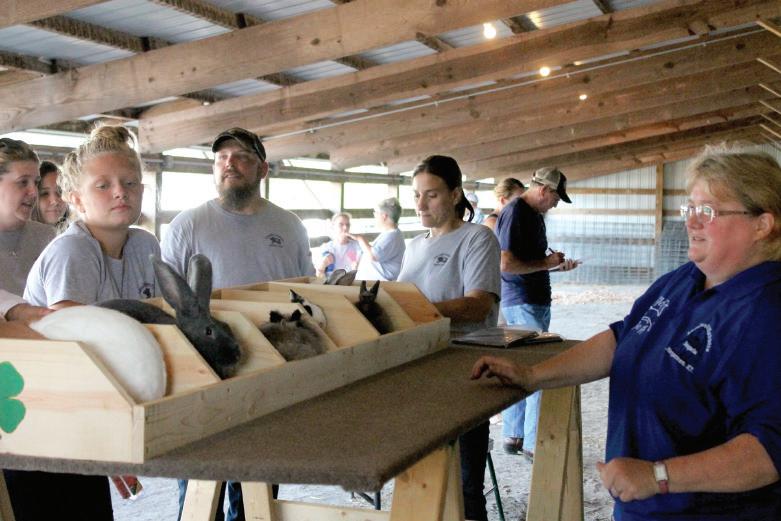











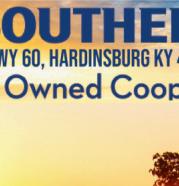














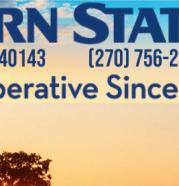















Sat. July 20
Sun. July 21

Mon. July 22
Tue. July 23
July 24




Thur. July 25
Fri. July 26










5:30 p.m.
Farm Bureau Community Building










PAGEANT DIRECTORS: Clarissa Lucas — 270-945-9694 • Danielle Anderson — 270-547-8552

Deadline for entry is July 9, 2024. You MUST call ahead to register for this pageant. We will not accept any contestants after the deadline. Entry fee for this pageant is $35 (cash only). Forms can be picked up at WesBanco in Brandenburg.







1. Contestants must be residents of Meade County no less than one year prior to the Meade County Fair 2. Contestants must attend a Meade County School.



3. Contestants must have reached their 8th birthday by July 1, and cannot have reached their 13th birthday by Oct. 31.

4. Contestants will compete in personal interview and formal dress.
6. Contestants must be a natural-born female.





5. Contestants will be judged on beauty, poise, posture, personality, self-confidence and stage presentation.



7. The winner will represent Meade County in the Miss Pre-Teen Kentucky County Fair Pageant.



8. In the event the winner has not met the above stated rules, the first runner-up will then represent Meade County in the state pageant.
















PRIZES: Winner – Crown, trophy and flowers, $100 toward wardrobe for state pageant. First runner-up – Trophy and flowers;




















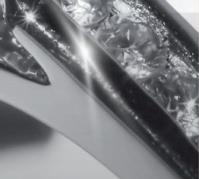
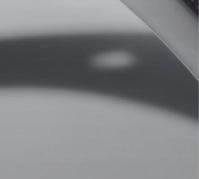









THURSDAY, JULY 25,









PAGEANT DIRECTORS: Clarissa Lucas — 270-945-9694 • Danielle Anderson — 270-547-8552






Deadline for entry is July 9, 2024. You MUST call ahead to register for this pageant. Registrants will NOT be accepted if they do not call to register by the deadline. Entry fee for this pageant is $40 (CASH ONLY) Forms can be picked up at WesBanco in Brandenburg.









1. A contestant must have reached her 13th birthday by Oct. 31, and cannot have reached her 16th birthday by Oct. 31 of the year the local contest is held.


2. Contestants must be a resident of Meade County no less than one year prior to the Meade County Fair.
3. Contestants must be single. (Never married, never had a marriage annulled, and never had any children.)




4. Contestant must attend a Meade County School.



5. Contestants will compete in casual wear, personal interview and formal dress.

6. Judging will be based on poise, posture, beauty, general appearance and stage presentation.


7. A Miss Congeniality will be selected by the contestants.




8. The winner will represent Meade County in the Miss Teen Kentucky County Fair Pageant.






PRIZES: Winner – Crown, trophy and flowers, $150 cash toward wardrobe for state pageant. First runner-up – $100 cash, flowers and trophy; Second runner-up – $75 cash, flowers and trophy; Third runner-up – $50 cash, flowers and trophy; Miss Congeniality – $25 cash, flowers and trophy.




9. In the event the winner has not met the above stated rules, the first runner-up will represent Meade County in the state pageant.












































THURSDAY, JULY 25, 2024
6:30 p.m. Main Arena




1. NO HANDS.





SUPERINTENDENT: Fair Office — 270-422-2000
CONTRIBUTOR: Tim Curran


2. 15 adults (17 and above) and 15 youths (16 and under) entry limit.
3. Must be preregistered by July 25, at the Meade County Fair office.








4. Winners will be determined by the event judges, and whoever eats the most watermelon in 2 minutes.












SUPERINTENDENTS: Russ Fackler — 270-668-2974 • J.W. Greenwell — 270-668-6903 • Todd Ray — 270-832-2751




All teams will be weighed at fairgrounds on same scale.
















Weights may be carreid over from previous Bluegrass Horse Pull according to the Bluegrass Horse Pull Rules







Pull will be judged according to Bluegrass Horse Pull Rules. Fairboard reserves the right to call off or postpone due to inclement weather.




JUDGE’S DECISION WILL BE FINAL.
















7:30 p.m. Main Arena




Sponsored by Meade County Fair Board










Kids Power Wheels
$10 Entry


All Kids Receive Trophy
Call to sign up and details on POWER WHEELS!






PROMOTER: John Peck — 859-393-8693
ALL PRIZE MONEY GUARANTEED!


SUPERINTENDENTS: Chuck Haynes — 270-828-5154 and Kevin Compton — 270-422-3186



Any Year Big Car
Semi Stock/Motor Swap


Mini Car Stock Street Class
$50 Entry Fee


$50 Entry Fee

1st. $1,500 + Trophy (King of Meade County)

2nd. $500 + Trophy
3rd. $200 + Trophy


$200 + Maddog Trophy
PLEASE FOLLOW THE RULES. IF YOU HAVE ANY QUESTIONS CALL FOR CLARIFICATION OR YOU WILL BE DISQUALIFIED!


1st. $1,000 + Trophy
2nd. $500 + Trophy
3rd. $300 + Trophy


$200 + 3’ Maddog Trophy (Bubba Thompson Award)



TOP DOG PROMOTIONS 2024 RULES

Big Car Semi Stock Motor Swap Class!
TopDog Season Rules NO 03 and ups at all!


Big Car Semi Stock/Motor Swap Class - 1980-2002 (Unless show states any year)



1. DO NOT PLAY GREY AREAS. YOU WILL BE LOADED UP!








7. You may run electric fan, after market gas and brake pedal. NO, it CANNOT be fastened to, or add strength to, anything. If it does, it’s out! Pedal set ups can’t be used as a wedge to the frame box!
8. Batteries must be moved to the passenger’s side floorboard. The battery box cannot strengthen the car in any way. NO more than 2 batteries.

2. All glass, chrome molding, hood latches, gas tanks, and rear seats must be removed before cars arrive at the fairgrounds. NO GLASS ALLOWED!






9. No welding on frames or body seams. This will be checked. No plated frames. Nothing can be added to the body or frame that isn’t from the factory unless it is listed in these rules. DO NOT PAINT FRAMES!

3. Stock type hood must be used. Hoods must be open for inspection. Hoods can be secured in 6 places. Wired ONLY! 3/4”. All thread can be used in the front mount. 3” x 3” plate on hood NOT welded. No more than a 3” spacer in front mount which can be welded.




4. Seat belt, helmet and eye protection must always be worn.





5. Gas tanks must be relocated behind driver’s seat, securely fastened and covered. Any visible leaking fuel will result in automatic disqualification. However, it cannot be bolted to strengthen the car. You CAN have a 28” gas tank protector, but it can’t be made from anything larger than 2 1/2” x 2 1/2” square tubing! That means 1 piece of tubing across the back of tanks 28” wide. Yes, it can touch the sheet metal. Anything else larger will be cut out! It CANNOT be welded or bolted to the backseat area anywhere! NO FLAT PLATE or anything else may be used. This is more for safety than strength!










10. Cutting the ends off bumpers and fenders for clearance is permitted. 11. All cars must sit level within 5” with no car sitting lower than 16” from the bottom of the bumpers or higher than 21” from the bottom of the bumpers.



12. Sunroofs must be covered, no exceptions. Any type of fan must be covered.




13. Factory condensers only. They may be wired in, not welded.













14. You may have a 4 bar cage. Max material used 4” x 4”, 2” x 6”. It CANNOT have down legs to the frame or floorboard. Dash bar must be at least 6” from the steel bell and not reinforced in any way! Side bars can’t go past the firewall and the back of the side bars must stop 6 inches before the back door seam. No #9 wire can be ran off the cage to anything. The gussets for the corners of the cage can ONLY be out of 2’ x 2’ tubing 6 inches long nothing bigger! If you run a center bar it cannot have gussets ran across to side bar. If you need to mount something to cage, mount it to center bar. You can have a FULL DRIVER’S DOOR PLATE welded on and overlap the driver’s door seam by 4 inches and stitch welded every 4 inches! DO NOT OVER DO THIS RULE!





15. You must use factory body bolts and bushings and they must remain stock. ONE broken body bolt can be fixed with approval. YOU CAN CHANGE THE 4 BODY BOLTS IN THE BOX AREA TO 7/1612MM and USE THE FACTORY RUBBER MOUNT! Yes, you CAN add 4 washers to the bottom of the 4 body bolts and 4 SEPA-
6. Radiators must stay in original location. They may be wired on all four corners. NO ADDED PROTECTORS that mount to the core support. Only thing you can use is the type that goes around radiator itself that’s free floating and it’s to be strapped in by ratchet straps. Radiator cage mounts follow the same guidelines! They have to be free floating and strapped by ratchet style straps. They cannot be mounted any other way! Thur. July 25



























RATE washers for the top side. THOSE ONLY! NO car body swaps.

16. Motor and transmission swaps are allowed. You can run shifter. You can weld in motor mounts of choice. With bottom cradle, it can only have front plate against the front of block! You CAN run a slider shaft with aftermarket yokes! You cannot change the transmission tail shaft!







NO PROTECTORS AT ALL ANYWHERE! YOU CAN ONLY HAVE CRADLE FOR MOTOR MOUNT PURPOSES. NO CHAINS ON, OR AROUND, MOTOR! YOU CAN ONLY RUN A PULLEY PROTECTOR IF YOU ARE NOT RUNNING A SWAY BAR! Any cross member is okay. Nothing larger than 2” x 2” with mounts no longer than 4 inches. New mounts cannot overlap or connect to factory mounts. If overdone, you won’t run. Cross member must be ran and mounted straight across, and mount in line, with the cross member. This is to hold the transmission, not add strength to anything. If ran to any other part of the frame it will not pass. DO NOT GET CLOSE TO THE BOX!














THE SAME AS STOCK VIC. NOT ON THE EYE OR IN IT! DO NOT PUSH THAT RULE! *You CANNOT cut Crown Vic front frame rails back.

25. NO WELDING except bumpers and motor mounts. Back frame rails can be notched or dimpled but NO welding of frames or cutting off! DO NOT PAINT FRAMES!


26. Roll over bars are okay. Must be straight up and down and connect to the TOP of the back bar only.




17. No distributor protectors are allowed. No transmission protectors and nothing aftermarket. ONLY STOCK TRANS WITH STEEL BELL HOUSING ARE PERMITTED! NO MIDPLATE! NO STEEL TAIL! NO TRANS BRACES! Trans or bell cannot be reinforced in anyway.






27. ALL FRONT SUSPENSION MUST STAY FACTORY! THAT GOES FOR A-ARMS, BALL JOINTS, AND ANYTHING ELSE ON THE CAR DO NOT RUIN THIS CLASS BY BUYING ALL NEW AND UPGRADING. IF YOU DO THAT... JUST STAY HOME! NO OLD STYLE A-ARMS ON BUBBLE VICS OR MERCS! FOLLOW THE RULE! YES 1990 - 1997 LINCOLN’S CAN HAVE BOX STYLE A-ARMS. (Some came factory with them). *2022 UPDATE! You can have aftermarket Tie Rods Everything else remains the same! Abuse it you lose it! NO replacement or upgraded parts. This was covered in the original rules above. Replacement parts are an upgrade. Only exception is you can bolt the sway bar on the lower A-arm and no it can’t be welded. It must mount factory to frame with nothing added.







18. Aftermarket steering columns ARE allowed! They CANNOT add strength to the car in any way.
19. Transmission coolers are allowed but when mounted CANNOT strengthen the car!





20. Car must have suspension travel in the front! You can change springs but must have suspension travel. Chains can be used around rear end but must go straight up to spring pocket. Chains cannot go around frame anywhere. NO all thread shocks.












28. Doors must be wired or chained only in 6 places. 3 strands of wire in each spot. NO welding of washers on the body. Wire CANNOT go around frame.

29. Any tire and any wheel. If you run a foam filled tire and it comes apart you will be disqualified for safety reasons.


30. NO RUST REPAIR ON BODY! Very minimal rust repair on frame and it has to be preapproved!

21. Any year factory bumpers which can be welded are allowed with factory bumper shocks to that car only, or none. They can be collapsed and welded. Front bumpers can be welded on. Bumper shocks can’t be welded through the holes on the side of frame. DEC or SMW bumpers are allowed. Loaded factory bumpers are allowed BUT it must be a bumper! Loaded means loading inside bumper only! Nothing outside like “homemade pointys”! NO HOMEMADE SHARP BUMPERS. Back bumpers can be any stock bumper. It can be welded on with no added metal. NO #9 wire to bumpers! THE FRAME RAIL CANNOT BE SLID INSIDE OF BUMPER. Any year cars can weld bumper shock cups.










31. Front window can have 2 flat bars 3” wide can’t go past the bottom of windshield area and 3” on roof! *Fire wall can be cut. NO Back window bars!




32. ALL CARS CAN HAVE ONLY 2 - 3” x 5” PLATES 1/4 THICK PERIOD! No cutting plates into pieces!
33. Pre-Ran cars can have a total of 4 - 4” x 4” 1/4 thick plates where bent or broke! Those along with the #33 rule plates. (6 total)


34. No leaf sprung cars and No 03 and up cars!




22. You can run any factory car 5 lug rear end with A brace across the back ONLY on 1980 - 1997 cars! It cannot reinforce anything else! NO PINION BRAKES! Upper and lower control arms on rear end can be reinforced if they are shortened or lengthened on the sides only. No solid control arms. On 1998 - 2002 cars must run the Factory rear end to the car they are running! Rear ends must be mounted factory with factory components. Rear end can have a brace on the tubes only and NOT through or over the center section. Brace cannot be used for any other purpose. No pinion Brakes! No extra Bracing on Control arms.
Can Not change A-arms!













35. LAST RULE DO NOT DO ANYTHING NOT LISTED ABOVE. DO NOT TELL ME YOU DID SOMETHING BECAUSE IT DOESN’T STATE ABOVE THAT YOU CAN OR CAN’T! ALWAYS CALL FIRST! After the car is inspected and a flag is out on it there are no refunds. We are not responsible for accidents or injuries! Rules may be clarified and rewritten at any time. ALL JUDGES DECISIONS ARE FINAL. Always come to shows ready to run heats if needed! WE RESERVE THE RIGHT TO REFUSE ANY ENTRY AT ANY TIME FOR ANY OR NO REASON!


If you have any questions please call John Peck — 859-393-8693



MINI CAR STREET STOCK CLASS RULES! #TopDog Season Rules!

23. Trunk lids must have a 15” x 15” inspection hole in the center of the trunk. Trunk must stay in factory location. TRUNK LIDS CAN BE CREASED! 6 SPOTS OF WIRE ON THE TRUNK, 3 STRANDS EACH SPOT! YES, trunks can be half trunked and folded down at a 90 degree angle. Rear quarters from the back door seam back to taillights can be creased but must remain upright. Pillars can be creased! NO OTHER BODY PANEL CANE BE CREASED!

1. Wheelbase must not exceed 109” on front wheel drives or 105” on rear wheel drives cars.




2. NO shortening “stubbing” of frames or cradles front or back. NO moving or switching cradles. No moving of axles to shorten wheelbase. W-BODY cars that have the small crush piece that hooks to the front bumper can be removed.


3. Must be 4 or 6 cylinder engines. NO V8s. NO MOTOR SWAPS! Match motor to car. Ford to Ford, Chevy to Chevy, etc.





24. NO PITCHING, NO CREASING OF FRAMES, FACTORY! DO NOT MANIPULATE THE FRAME IN ANY WAY! *YOU CAN CUT A LINCOLN OR MERCURY FRONT FRAME BACK TO










4. NO LEAFING MINI CARS. Ex.: (No adding of extra leafs to existing leafs. Must run Factory leafs to the car you are running. No coil to leaf spring conversions). Leaf Sprung cars must run leafs on factory side of rear end and NO straight leafs! All suspension components must stay factory to the car you are running including number of factory leaf spring clamps. Coil springs can be changed. Factory




















struts to the car you are running can be welded solid and mounted factory. No added metal or anything to add strength. NO HOMEMADE STRUTS! Front Wheel Drive Cars can add a 2” x 2” x 2” piece of square tubing can be welded behind the strut to help it from laying over. (Don’t abuse this rule). Or it could cause you to cut it all the way out! No all-thread shocks or chained suspensions. No 4-wheel drive vehicles.








5. NO AMCs OF ANY KIND AND NO FULL FRAMED CARS! NO PT Cruisers!
6. Stock gas tank can be removed. Gas tanks must be relocated behind driver’s seat, securely fastened and covered. Any visible leaking fuel will result in automatic disqualification.


7. All glass, chrome molding, hood latches, gas tanks, and rear seats must be removed before cars arrive at the fairgrounds. NO GLASS!












18. We will be looking in frames from factory holes. If your frame does not have them, we will make our own!
19. You can use aftermarket steering column, factory tie rods only and not to be reinforced. Front sway bar must be factory to your car and not formed for strength. It cannot be welded or used for strength in anyway. It has to be mounted factory.





20. Transmission coolers or oil coolers are allowed. No transmission protectors at all.



8. Stock type hood must be used. Hoods must be open for inspection. Hoods can be secured in 6 places with wire only 3 strand each spot and a 12” inspection hole. You may use 1/2” all thread only in core support with 3” max spacer from top of frame to core support but this will count as 2 of your 6 places! The factory rubber bushing between the sub-frame and frame must remain no other spacer. NO WELDING!


FOR W-Bodies only you CANNOT run all-thread all the way through the sub-frame, frame, and hood! You can run a 3/4” bolt through the sub frame and top of frame and then a 3/4” bolt through the core support and hood. No all thread through the frame rails or bumpers shocks (bottom to the top) on any rear wheel drive car front or back. *2022 UPDATE! NO CAR CAN HAVE THE SUB FRAME/CRADLE WELDED TO THE FRAME! NO WELDING OR SHORTENING ON THE SUBFRAME and NO CONNECTING THE TWO WITH PLATES, WIRE or CHAIN.








21. Any year factory car bumpers which can be welded are allowed. Loaded factory bumpers are okay. Must be inside bumper only! If it’s a homemade bumper it CANNOT have a sharp point! Nothing that’s more than a 5 inch rounded nose over a 30” span. If we think the bumper is too much or unsafe it will not run! It’s always safer to call first! NO welding a small/short piece of tubing in the center of a tube style bumper. THE BUMPER CAN NOT HAVE A SHARP POINT! IT WILL NEED TO BE ROLLED OR ROUNDED! NO BUMPER TALLER THAN 8 INCHES AT ANY SPOT! Bumper shocks not to exceed 10 inches, they will be measured from back of bumper where the shocks are mounted/bolted/welded! No sliding frame rails inside of the bumpers. NO, YOU CANNOT USE A SHOCK THAT IS NOT FACTORY TO THAT CAR. YOU CAN USE A PIECE OF 2” x 2” PIPE OR TUBING! EVEN ON FACTORY SHOCKS THEY CAN ONLY BE WELDED THE FIRST 10”. NO EXCEPTIONS AND NO YOU CAN’T BOLT THEM EITHER. YOU CAN MAKE THE BUMPER SHOCKS SHORTER BUT NOT LONGER!















9. Seat belt, helmet and eye protection must be worn always.
10. Radiators must stay in original location and can be wired on all four corners. You may run electric fan. Factory condensers only and they may be wired in, not welded. NO added protectors of any kind.





11. Batteries must be moved to the passenger’s side floorboard. The battery box cannot strengthen car in any way!

12. NO welding on frames or inner body seams. NO illegally plated frames. The Frames or subframes can NOT be hammered or shaped in anyway. DO NOT PAINT THE FRAME OR FRAME SEAMS or CRADLE!





Thur. July 25
22. Doors and trunk can be welded 6” on and 6” off all the way around. Trunk must stay in original position (NOT SLIDE FRONTWARDS OR BACKWARDS). The body of the car can be creased but the rear quarter panels must stay upright, and trunk needs to have a 12” inspection hole. (SAFETY) YOU CAN have a 12” wide 1/4 thick DRIVER’S DOOR plate and lap 3” over the door seams. Stitch welded 6” on 6” off. No Sedagons!


13. Cutting the ends off bumpers for clearance is okay. Bumpers cannot be wider than car. No sharp edges!








23. NO WELDING except bumpers and motor mounts.


14. Sunroof must be covered or at least have wire in them.
15. 4” x 4” Floating cage is permitted! It cannot touch the tunnel or floor. Cage must be at least 5” from floor sheet metal at all times! The back bar can’t be any further back than 12” from driver’s seat. NO kickers of any kind off the cage to anything. Center bar is okay but no kickers or anything. Cage is for SAFETY and NOT for strength of car. You can have a 5” Long gusset in each corner of the cage ran from bar to bar. Total of 4! Gas tank holder can touch sheet metal by 2” x 2” tubing only NO KICKERS! GAS TANK CAN HAVE PROTECTION BEHIND IT THAT CONFORMS WITH THE TANK! NOTHING OVERBOARD.






24. Do not do anything to your car to strengthen it in anyway other than what’s in the rules. YOU will be loaded!
25. All other car components not mentioned must remain factory and stock to the car you are running.



26. NO rust repair on body or frame... DON’T ASK!

27. Do NOT do something to the car that’s not listed above then try to tell me “the rules didn’t state that you couldn’t do it”. If you plan to do that... Please stay home!





28. Any tire and any wheel. If a solid filled tire starts to come apart you will be disqualified for safety reasons.


29. Yes, you can run a roll over bar. It must go straight up and over the roof, welded to the top side of your cage only. It CANNOT go to your frame or floor pan. It cannot be bolted or welded to the roof of your car. Roll over bars are for safety, not for strength.


It can’t be welded or bolted to anything on the back side. More for safety than strength. Must conform to tank. * NO BACK WINDOW BARS!
16. No Protectors at all unless stated in the rules! NO ENGINE CRADLES! No engine chains.








30. Pre-ran cars can have 4 - 4” x 4” plates 1/4” thick where the frame is bent or broken. No more than those 4! Pre ran cars can also fix rear suspension, but you must call for details.


17. NO motor swaps. Ford to Ford and Chevy to Chevy! Volvo need to stay factory Volvo. Yes, you can run a Ford 2.3 in Ford cars only. Only diesel motors in factory diesel cars! Factory car rear ends and the Rear end itself can have a back brace... (NO BRACING) FROM REAR END. ALL CONNECTED USING FACTORY PARTS TO THE CAR YOU ARE RUNNING. Slip shafts are allowed.




31. UPDATE *Mini Car Street Stock* You can hang the battery off the front bar ONLY or in the front floorboard. NO gusset from the battery box to the side door bar! All other rules have to be followed.








32. We reserve the right to deny or disqualify any entry or driver at any time. Rules can be clarified at any time! After the car has been inspected and flagged there will be no refunds. We are not responsible for any accidents or injuries. ALL JUDGES DECISIONS ARE FINAL! Always be prepared to run heats at any show!





If you have any questions please call John Peck — 859-393-8693








































Nucor Steel Brandenburg is now casting and rolling in our new state-of-the-art facility. We are proud to produce the most advanced steel plate anywhere in North America right here in Meade County!









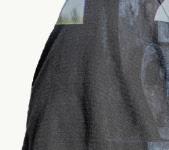













































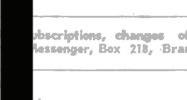


























































































































































































































































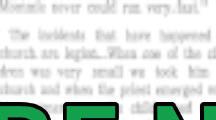




























































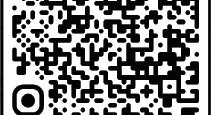


































































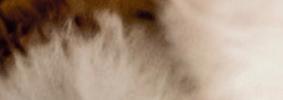


























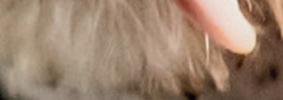
































































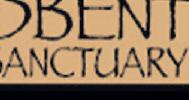




































































July 27 Fri. July 26




























Main Arena SATURDAY, JULY 27,
9 a.m.









PRIZES: First $3, Second $2, Third $1. No registration necessary.


SUPERINTENDENTS: Bridgette Brown Scheible — 270-668-5399 • Rachael Brown — 270-945-9900

Exhibitor 12 years and under
1. Child's cat – any age
2. Child's dog – any age




3. Child's pet – other than cat or dog – any age DOGS
4. Puppy – under 6 months
5. Dog – 20 lbs. and under



9. Cat – any age


10. Pet other than cat or dog – any age



6. Dog – over 20 lbs.




7. Sporting Dog – breeds widely known for hunting, etc.


8. Working Dog – breeds widely known for herding, pulling, etc.



















10 a.m.
Farm Bureau Community Building












1. Boy – 0 to 5 months
2. Girl – 0 to 5 months
3. Boy – 6 to 11 months


4. Girl – 6 to 11 months


PRIZES: Trophy given for first, second and third places.


SUPERINTENDENTS: Bridget Love — 270-668-5370 • Morgan Hines — 270-668-5571

5. Boy – 12 to 17 months
6. Girl – 12 to 17 months
7. Boy – 18 to 23 months


8. Girl – 18 to 23 months



1. Children and at least one parent must reside in Meade County.
2. Children will be judged on sight, on apparent good health, charm and personality.




3. All children must register with superintendent between 8:30 a.m. and 9:45 a.m. on date of contest.


4. Birth certificate REQUIRED for registration!
5. Parents must have children in place for judging at 10 a.m.



6. There is no dress code – children can wear whatever makes them happy!








7. There is a $5 entry fee per child - CASH ONLY! Pay at registration.













SATURDAY, JULY 27,
Registration 10:30 a.m. Starts 11 a.m.
Fred Sipes Barn




1. 3 Year old girls and boys for fun





SUPERINTENDENTS: Susan Stewart — 270-668-2252



2. Girls Ages 4-12 - Sanctioned classes
3. Boys Ages 4-12 - Sanctioned classes


4. Adult 13-14 - Nonsanctioned classes

5. Adult 15-17 - Nonsanctioned classes
6. Adult 18-20 - Nonsanctioned classes
7. Adult 21-49 - Nonsanctioned classes





8. Adult 50-Plus - Nonsanctioned classes
1. If you do the state championship pull it will be the same as above without the 3 year old for fun class.









3. Adult classes are not sanctioned.







Noon
In the show barn
2. Top 3 of the first pull will advance to the state championship along with outsiders that have won the right to pull at the state level at other sanctioned pull.






CONTRIBUTOR: Uhl Truck Sales/Trivista Company, Palmyra, IN — 812-364-6101 Sat. July 27




2-Wheel Stock



SUPERINTENDENT: Greg Shoulders — 502-548-0363








2-Wheel Modified Open Modified
First through fifth place in each class will receive a trophy.

1. Each contestant must furnish their own pulling vehicle.
2. Each contestant must supply and wear a helmet.


3. Draw for pull positions.


4. (1) 12-volt or (2) 6-volt batteries in stock class.


5. (2) 12-volt batteries in modified classes (24 volts).
6. Plastic Stock gears only in all classes


7. Only battery-powered vehicles allowed.

8. Tire grooving legal. No screws or metal in tires. No rubber tires.


9. All vehicles need to have a hitch and must not be higher than 13 inches and have a 1/4 hole to hook to sled.
10. Weights are permitted in all classes.


11. All weights must be secured.
12. Enter at your own risk.



13. Superintendent has final decision on all rules.




























SATURDAY, JULY 27,







SUPERINTENDENTS: Matt Fackler — 270-668-7447



M.J. Popham — 270-547-9510
Each entry must have a back number associated to the entry. Failure to due so will result in a disqualification and no refund will be given.









2. All entries shall have current negative Coggins test and out-of-state entries shall have current 30-day health papers.
3. Show superintendents and judge reserve the right to interpret rules to ensure fairness to all entrants.





4. Class 9 shall be judged on the entrants’ ability to show the animal and not on the animal itself.
5. Anyone under the age of 18 must have parents’ permission to compete.



6. Protest: A protest must be in writing, signed and addressed to the chairman of the show and accompanied by a deposit of $25. It must be received by the chairman by the end of the show. If the protest is sustained, the deposit shall be returned. If not sustained, the deposit shall be forfeited to the Meade County Fair Horse Show.





7. The horse show committee will not be held responsible in case of accidents or theft. All precautions will be taken for the protection of riders, and their animals, but no responsibility will be assumed by the Meade County Fair Board.

8. NO REFUNDS.



9. Announcements day of show take precedence over printed material on catalogs or show bills. PAYBACK & RIBBONS: First $40, second $30,third $20, fourth $10.
































































































































CONTRIBUTORS:
1. Contestants must be residents of Meade County.
2. Contestants must enter as a couple.
3. Contestants must have reached their 3rd birthday and cannot have reached their 5th birthday.
4. Contestants will compete in denim shorts, tennis shoes, socks and T-shirt. (T-shirts will be provided.)
5. Professional models are not eligible. Also no modeling routine can be performed while on stage.

First











BRANDENBURG • River Ridge Plaza 632 Bypass Rd • (Next to Doc’s BBQ & Walgreens) 270-998-1051 Check GreatClips.com for business hours.










7 p.m. Farm Bureau Community Building









PAGEANT DIRECTORS: Anita Hobbs, 270-422-4108 • Becky Deaton, 270-234-7827




CONTRIBUTORS: Darla's Hair Studio • Hobbs Electric • Meade County Pediatrics
RULES



The contest is limited to 25 couples. $40 Entry Fee For A Couple DEADLINE: June 17, 2024

1. Contestants must be residents of Meade County Contestants must have reached their 5th birthday and cannot have reached their 8th birthday by midnight of June 30, 2024.
2. Contestants will be judged as a couple at all times except for the onstage question.
3. ABSOLUTELY NO MAKEUP you will be deducted or possibly disqualified.
4. No models or modeling routines, turns, or posed will be allowed.
5. There will be an onstage question for each child (age appropriate question).
6. They will be judged on their responses to questions.
7. Parents/Guardians will NOT be allowed behind stage at any time during the contest.
8. Contestants will wear and be judged in age appropriate attire in the pageant.
PRIZES:
Winners – Crown, trophy, sash and $25 cash each
First runners-up – Trophy and ribbon
Second runners-up – Trophy and ribbon
Third runners-up – Trophy and ribbon
Fourth runners-up – Trophy and ribbon People’s Choice – Trophy

2023 Results:
Little Mr. and Miss Meade County Fair: Chandler Hurt & Jep Pike.
First Runner-Up: Nora Darnall & Cruz Norris
Second Runner-Up: Ava Knott & Benton Miller
Third Runner-Up: Belle Lawson & Sawyer Vronman
Fourth Runner-Up and People’s Choice: Kylee Sanders & William Sadler

















































































































































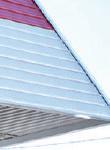








































































































































































































































































SUPERINTENDENT: Carroll Fackler


COORDINATOR: Jennifer Bridge, Extension Agent for Family and Consumer Sciences Education – Meade County, 270-422-4958







1. Entries will be accepted between 7:30 a.m. and 12:30 p.m. on Monday, July 22. Doors will be closed at 12:30. No exceptions. Judging will be on Monday afternoon.






2. No entry should leave the Fruits and Vegetables Department until 1:30 p.m., Sunday, July 28. If entry is removed before this time, it will not receive a premium even if the entry placed in top three of class. All entries must be picked up between 1:30 p.m. - 2:30 p.m. on Sunday, July 28.

3. No individual may have more than one entry in each class.
4. Item must be homegrown by individual.










5. Exhibits are judged on quality. In order to keep all entries uniform, a small or large plate will be provided for all entries other than ‘Display’ Entries. Entries including the word ‘Display’ are judged not only on quality but also on variety, creativity, visual appeal, etc. Displays shoul2 be self-contained in a basket, tray, crate, etc; the outer measurements cannot exceed 18” X 24” (inches).


6. No entries containing glass will be accepted.





7. Judging will be done by qualified out of county judges, and they will have the right to disqualify an entry if not of quality to be judged or does not meet category criteria.


8. Providing address labels will be extremely helpful and speed up registration.




All categories will receive: 1st $8; 2nd $6; 3rd $4, unless otherwise indicated. Two Grand Champion ribbons will be given. (One for Fruits and one for Vegetables).






In recognition of the late Minnie Lee Richardson’s dedication to the Meade County Fair and the Fruit and Vegetables Department, an award has been created. The Minnie Lee Richardson Outstanding Entry will be determined by the department judges and will be awarded on creativity, appearance, and quality.



2. Most unusual, shaped vegetable
3. Beans – Bush, 1 dozen
4. Beans – Pole, 1 dozen


5. Cabbage – 1 head (green)
6. Cabbage – 1 head (red)
7. Best large cabbage – any variety


8. Cantaloupe – 1 best large variety
9. Cantaloupe – 1 best small variety
10. Cucumbers – 3, small for pickling


11. Cucumbers – 3, for slicing
12. Cushaw
13. Eggplant – 1


14. Okra – 6 pods
15. Onions – 6, white


16. Onions – 6, red
17. Garlic – 3 bulbs
18. Banana Pepper, sweet, 3


19. Banana Pepper, hot, 3
20. Bell Peppers – green, large type, 3
21. Bell Peppers – yellow, 3


22. Bell Peppers—red, 3
23. Peppers – (hot) string of 15-20
24. Peppers – Jalapeno, 3


25. Peppers – any other variety, 3

1. Vegetable or Fruit Critter - Odd shaped vegetable or fruit that resembles an animal. Simple embellishments allowed.









29. Potatoes – sweet, any variety, 3
30. Potatoes – largest, any variety, 3


31. Pumpkin – pie, small variety, best
32. Pumpkin – any variety, best
33. Pumpkin – largest




34. Rhubarb – red or green variety, 1 bunch of 4
35. Squash – Zucchini, 3
36. Squash – Butternut, 3


37. Squash – Crookneck, 3
38. Squash – Straightneck, 3
39. Largest Zucchini, 1


40. Squash – any other variety, 3
41. Sweet Corn – white, 3 ears in husk
42. Sweet Corn – yellow, 3 ears in husk


43. Sweet Corn - Bi-color, 3 ears in husk
44. Cherry Tomatoes – 6


45. Tomatoes – red, best large variety, 3
46. Tomatoes – yellow, best large variety, 3
47. Tomatoes – pink, best large variety, 3


48. Tomatoes – any other variety, 3





49. Tomatoes – green, best variety, suitable for fried or other dishes, 3



50. Tomatoes – collection of 4 different kinds
51. Tomatoes - Roma, 3
52. Grape tomatoes, 6


27. Potatoes – Red Pontiac, 3


28. Potatoes – Kennebec, 3





26. Collection of Peppers, any variety, 4 or more different kinds

53. Watermelon – Any variety
54. Watermelon – largest, any variety





55. Vegetable Display – 6 or more different vegetables. (Display should be self-contained, no larger than 18”X24”



















(inches) and must fit easily on display shelf)
56. Collection of herbs (seasoning) 4 or more
57. Best looking sunflower (head)


58. Apples – any variety, 3
59. Blackberries – 1 pint Tame
60. Blackberries – 1 pint Wild


61. Berries, any other variety, 1 pint
62. Peaches – Any variety, 3
63. Pears – Any variety, 3


64. Grapes, any variety, 3 bunches
65. Plums, any variety, 3

Special Displays: (Category will receive: 1st $10; 2nd $7; 3rd $4)


66. Display of fruit, 4 or more different kinds. (Display should be self-contained, no larger than 18”X24” (inches) and must fit easily on display shelf)





67. Nature’s Bounty Display paws, persimmons, plums, pecans, nuts, fruits, vegetables etc. Minimum of 6 different varieties. (Display should be self-contained, no larger than 18”X24” (inches) and must fit easily on display shelf)
68. Gourds
69. Loofa or dish rag gourd
70. Dipper gourd




71. Birdhouse gourd (Gourds will be judged on cleanliness, maturity, length, and circumference. Must be previous season’s gourds).
















































































All entries must have been grown and/or harvested between July 20, 2023 and July 20, 2024. Entries will be accepted Monday, July 22 between 8:00 a.m. and 12:30 p.m. Entries may be picked up Sunday, July 28, between 1:00 p.m. and 2:00 p.m.



Items 1-15: Blue ribbon, $5; red ribbon, $3; white ribbon, $2; Items 16-17: Blue ribbon, $6; red ribbon, $4; white ribbon, $3;


CORN



1. 10 ears yellow corn
2. 10 ears white corn




8. Alfalfa, 10 lbs.
9. Alfalfa/Grass, 10 lbs.


AGRICULTURE PRODUCTS


17. Agriculture products display

3. Single ear white corn
4. Single ear yellow corn
5. Yellow or white shelled, 1 qt.


WHEAT
6. Winter wheat, 1 qt.


SOYBEAN
7. Soybeans, 1 qt.




























10. Timothy, 10 lbs.
11. Fescue, 10 lbs.
12. Orchardgrass, 10 lbs.


13. Lespedeza/Grass, 10 lbs.
14. Red Clover/Grass, 10 lbs.
15. White Clover/Grass, 10 lbs.

TOBACCO






16. 1 stick, 5 plants tobacco




















































































Home & Garden Exhibit Hall








SUPERINTENDENT: Pat Carlson


COORDINATOR: Jennifer Bridge, Extension Agent for Family and Consumer Sciences Education Meade County — 270-422-4958







1. Entries will be accepted between 7:30 a.m. and 12:30 p.m. on Monday, July 22. Doors will be closed at 12:30 p.m. No exceptions. Judging will be on Monday afternoon.






2. No entry should leave the Flower Department until 1:30 p.m., Sunday, July 28. If an entry is removed before this time, it will not receive a premium even if the entry placed in top three of class. All entries must be picked up between 1:30 p.m. - 2:30 p.m. on Sunday, July 28. Claim tickets must be presented to workers prior to pick-up.

3. No individual may have more than one entry in each class.






4. Judging will be done by qualified out of county judges, and they will have the right to disqualify an entry if not of quality to be judged or does not meet category criteria.
5. Items must be displayed in a vase tall enough to support entry.



6. Proper container and arrangement of categories 20-27 are considered when judging.




7. The miniature category should be no higher than 3” in height including vase.
8. Plants that are unusually large or heavy MUST BE HANDLED BY THE ENTRANT.




In recognition of Virgie K. Taylor’s dedication to the Meade County Fair and the Plants and Flowers Department, an award has been created. The Virgie K. Taylor Outstanding Entry will be determined by the department judges and will be awarded as Most Creative Entry.







1. Roses, container of 1-3
2. Arrangement of roses


3. Zinnias, container of 6
4. Marigolds, container of 6


5. Collection of 5 or more herbs
6. Dahlias, large container of 3
7. Dahlias, small container of 3


8. Gladioli, container of 3
9. Flowering Begonia
10. Flowering Geranium
11. Foliage plant


12. Flowering houseplant
13. Miscellaneous plant
14. African Violet
15. Cacti
16. Jade Plant





All categories will receive: 1st, $8; 2nd, $6; 3rd, $4. One Grand Champion ribbon will be given.
31. Most unusual plant or flower
32. Terrarium




33. Combo planter, 3 or more variety
34. Hosta Leaves – 1-3 in vase




35. Fairy Garden - (must contain at least one fairy and one live plant)(must fit on our display shelves)
Children’s Corner (12 and under)


36. Plant




17. Arrangement of garden flowers (kitchen)
18. Arrangement of garden flowers (dining table arrangement)
19. Arrangement of garden flowers (living room)



20. Arrangement of silk flowers
21. Succulent plant
22. Miscellaneous arrangement of fresh flowers



23. Daylilies, 5 stems per container, no filler
24. Ornamental daylily, 3 per container, no filler, no Resurrection lilies



25. Lily, any kind, not mentioned, 3 per container, no filler
26. Coleus, any variety


27. Hanging basket (flowering)
28. Hanging basket (nonflowering)
29. Sunflowers – any size or variety


30. Miscellaneous flowers




























SUPERINTENDENT: Heather Yeager
COORDINATOR: Jennifer Bridge, Extension Agent for Family & Consumer







Please NOTE time changes when building is open and closed.







1. All entries must be handmade and be owned or made by the exhibitor unless entering in vintage category; must be made within last four (4) years.

2. Entries will be accepted in the Home Economics section of the Home & Garden Exhibit Hall between 7:30 a.m. and 12:30 p.m. on Monday, July 22 Doors will close at 12:30 p.m. Judging will take place on Monday at 1:30p.m. The building is closed to the public during judging.






3. Viewing hours will be Monday 6:00p.m. until 9:00p.m., Tuesday 11-Noon for Special Needs Day and 5:00p.m. until 9:00p.m. in the evening, Wednesday 3:00p.m. until 9:00p.m, Thursday and Friday 5:00p.m. until 9:00p.m., Saturday, 5:00p.m. until 9:00p.m.






4. Exhibitors MUST remove articles from this department on Sunday, July 28 between 1:30p.m. and 2:30 p.m.Any article removed before this time will not receive a premium.

5. No individual may have more than one entry in each category.





6. Previous blue-ribbon articles cannot be entered again. Items not receiving a blue ribbon can be entered 3 times maximum.

7. All entries must be clean and prepared for exhibit




8. Miscellaneous categories are only for those entries that cannot be entered in other listed categories.

9. All entries must be labeled. Canned goods will be accepted in clear standard canning jars with metal rings (Mason, Kerr, Ball, etc… not mayonnaise or other jars used for other purposes) and must have exhibitor’s initials on the bottom of the jar and made within the last two (2) years. No commercial lids on canned items.





10. If there is more than one article (i.e. sets, pairs) in any exhibit, they should be fastened together securely.







11. The management will not be responsible for any article exhibited, but due care will be given to the handling of the articles and attendants will be furnished to give reasonable protection to exhibit at all times.
12. Judging will be conducted by out of town judges whose decision will be final. Judges will have the right to disqualify an entry if not of quality to be judged.







13. Grand Champion ribbons will be given to twelve (12) Home Economics entries: 1-Cooking, 1-Canning, 1-Quilts, 1-Crocheted/Knitted, 1-Clothing, 1-Handicrafts, 1-Textile Art/Basketry, 1-Christmas, 1-Men’s Corner, 1-Hobbies, 1-Children’s Corner, 1-Teen Corner. No prize money will be given for Grand Champion winners.




14. A special ribbon award titled “The Charlotte Lawson Creative Writing Award” will be given to an outstanding entry in the Writer’s Corner. A special ribbon awarded titled The Minnie Richardson Award” will be given to an outstanding entry in Fruits and Vegetables Corner. No prize money will be given.



15. All pictures must be framed and have finished back suitable and safe for hanging.
16. A collection must consist of three (3) or more items.






17. Bringing address labels will help speed up check-in process.

All categories will receive: 1st, $8; 2nd, $6; 3rd, $4, unless otherwise indicated.




Breads


COOKING - Display food on 6-inch or less plate


12. ¼ Pound cake
13. ¼ Coffee cake


1. Plate of 3 biscuits
2. Plate of 3 corn sticks or corn muffins

3. Plate of 3 muffins

4. Plate of 3 yeast rolls
5. Plate of 3 cinnamon rolls


6. ½ loaf of zucchini bread
7. ½ loaf of banana bread
8. ½ loaf of yeast bread


9. ½ loaf of sour dough bread




14. ¼ Layer Cake, iced
15. ¼ Low-fat/Sugar-free cake


16. Plate of 3 cupcakes, frosted
17. ¼ Miscellaneous cake
Cookies


18. Plate of 3 brownies
19. Plate of 3 oatmeal cookies
20. Plate of 3 sugar cookies




10. ½ loaf of quick bread, not mentioned
Cakes (no refrigerated types and no cream cheese frosting)


11. ¼ Jam cake, iced






21. Plate of 3 chocolate chip cookies


22. Plate of 3 miscellaneous cookies (all one kind)
Candy


23. Jar of at least 10 pieces hard candy





















24. Plate of 3 pieces of peanut butter fudge
25. Plate of 3 pieces of chocolate fudge


74. Cucumber pickles

26. Plate of 3 pieces miscellaneous candy (all one kind)
Pies and Cobbler
27. ¼ Apple pie
28. ¼ Cherry pie
29. ¼ Peach pie



30. ¼ Blackberry pie


31. ¼ Other fruit pie
32. ¼ Pecan Pie
33. ¼ Fruit cobbler, in disposable bowl




34. ¼ Miscellaneous pie (cream pies will not be accepted)
Teen’s Cooking: (Ages 13-17)
35. Plate of 3 biscuits


36. Plate of 3 yeast rolls
37. ½ loaf of quick bread
38. ¼ layered cake, iced


39. Plate of 3 cupcakes, frosted
40. Plate of 3 brownies
41. Plate 3 oatmeal cookies


42. Plate of 3 chocolate chip cookies



43. Plate of 3 pieces of peanut butter fudge

75. Bread and butter pickles

76. Dill pickles
77. Beet pickles



78. Pickled vegetables
79. Pickled peppers


80. Miscellaneous pickles
81. Cucumber relish

82. Corn relish
83. Salsa

84. Miscellaneous relish Sauces (Quarts or pints)
85. Barbeque sauce





86. Spaghetti sauce
87. Ketchup




44. Plate of 3 miscellaneous cookies (all one kind)
Children’s Cooking: (Ages 12 and under)
45. ½ loaf of quick bread


46. Plate of 3 cupcakes, frosted
47. Plate of 3 brownies
48. Plate of 3 oatmeal cookies


49. Plate of 3 chocolate chip cookies
50. Plate of 3 peanut butter cookies
51. Plate of 3 no-bake cookies


52. Plate of 3 pieces of candy
Professional Bakers
54. Best bread
55. Best cake

56. Best cookie
57. Best candy



58. Best pie or cobbler
59. Best decorated cookie


88. Miscellaneous sauce
Canned Protein (Quarts or pints)






53. Plate of 3 miscellaneous cookies (all one kind)



CANNING (Either quarts, pints or half pints)
Fruits (Quarts or Pints)
60. Peaches
61. Apples
62. Cherries

63. Pears
64. Applesauce
65. Blackberries



66. Miscellaneous fruits


Vegetables (Quarts or pints)
67. Green beans
68. Corn
69. Tomatoes
70. Tomato juice

71. Sauerkraut
72. Soup mixture



73. Miscellaneous vegetable


Pickles or relish (Quarts or pints)



89. Meat or Poultry (specify type)
90. Fish or Seafood (specify type)

Jellies, preserves and jams (Pints or half pints)
91. Apple jelly
92. Grape jelly

93. Blackberry jelly
94. Citrus jelly
95. Pepper jelly







96. Flower or Herb jelly
97. Sugar-free jelly
98. Miscellaneous Jelly



100. Peach preserves



99. Strawberry preserves
101. Sugar-free preserves



102. Miscellaneous Preserves
103. Strawberry jam
104. Blackberry Jam

105. Sugar-free jam


106. Miscellaneous Jam
107. Fruit butter



108. Honey without comb
109. Honey with comb
Dehydrated Foods



110. Meat jerky, 6 strips, named
111. Any vegetable, 1 cup, named
112. Herb, ¼ cup, specify type





113. Salsa
Teen’s Canning (Ages 13-17)
114. Jellies, preserves and jams



115. Miscellaneous relish
Children’s Canning (Ages 12 and under)
116. 1 canned vegetable

117. 1 canned fruit



118. 1 miscellaneous canning





119. Appliquéd quilts
120. Hand embroidered


QUILTS (Add tag to identify who pieced and quilted)

121. Machine embroidered
122. Hand pieced machine quilted
123. Machine pieced, machine quilted




124. Machine pieced, hand quilted













125. Hand pieced, hand quilted




181. Apron – full


126. Most creative quilt
127. Baby quilt, machine pieced, machine quilted


128. Baby quilt, hand pieced, hand quilted


182. Apron - half
183. Purse or tote
184. Costume


129. Baby quilt, mixed techniques
130. Vintage quilts (20 years or older) in good condition




131. Mixed, Pieced and Appliqué
132. Quilt from kit
133. First time quilt (Ages 17 and under)



134. First time quilt (Ages 18 and over)
135. Group quilt
136. Senior adult (Ages 65 and over) quilt



137. Theme quilt
138. Lap quilt
139. T-shirt quilt



140. Miniature pieced quilt, 18” or less, must quilt block
141. Pieced quilt tops, un-quilted
142. Miscellaneous quilt



143. Miscellaneous coverlet (not quilted) Crocheted Goods
144. Granny square afghan (no larger than 60” x 72”)



145. Crocheted afghan (no larger than 60” x 72”)
146. Baby crocheted afghan (no larger than 45” x 60”)
147. Sweater for infant (Ages 0-3)


148. Sweater for child (Ages 4-12)
149. Crocheted baby booties or shoes
150. Crocheted baby hat/bonnet




151. Table runner (up to 72” in length)
152. Doily
153. Scarf



154. Cape, shawl, shrug, stole or poncho
155. Crocheted doll clothes


156. Crocheted item (Ages 13-17)
157. Miscellaneous crochet clothing




158. Miscellaneous crochet (other than mentioned) Knitted Goods
159. Baby afghan (no larger than 45” x 60”)
160. Adult sweaters


161. Baby sweater (Ages 0-3)
162. Sweater for child, (Ages 4-12)
163. Baby booties or shoes


164. Baby Hat/Bonnet
165. Scarf & hat or scarf & mittens



166. Cape, shawl, poncho, shrug or stole

167. Scarf only
168. Mittens or gloves
169. Knitted item (Ages 13-17)


170. Miscellaneous knitted item CLOTHING and TEXTILES
171. Adult sports clothing


172. Adult casual clothing
173. Adult special occasion


174. Adult clothing miscellaneous




175. Children’s clothing, special occasion
176. Children’s clothing, casual


185. Vintage dress-up clothing (non-commercial, over 25 years)
186. Miscellaneous clothing
Machine Embroidered


187. Wearable clothing
188. Tablecloth or runner
189. Wall hanging


190. Pillows/Pillowcases
191. Towels


192. Miscellaneous item



Wearable Textile Arts (May use purchased items to decorate)



193. Decorated shirt, cross-stitched, applique, painted, etc.
194. Decorated jacket made from sweatshirt
195. Decorated denim garment


196. Decorated tote or purse
Handicrafts
197. Decorative towels


198. Embroidered pillowcase (bring 1)
199. Miscellaneous pillowcase (bring 1)
200. Pin cushion





201. Handmade doll
202. Handmade animal
203. Placemat


204. Potholders/Hot Dish Mat
205. Tablecloth

206. Table runner (up to 90” long)
207. Hand towel

208. Kitchen tea or dish towel
209. Dish cloth


210. Recycled handicraft
211. Decorative painted handicraft


212. Miscellaneous handicraft
213. Grapevine items





214. Handmade holiday wreaths (other than Christmas)


215. Handmade door or wall decorations other than holiday
216. Handmade jewelry, original design (placed in box or bag)
217. Handmade jewelry, beaded design (placed in box or bag)



218. Handmade jewelry, mixed media (placed in box or bag)
219. Recyclable wearable or accessory
220. Painted gourd


221. Non-painted technique gourd
222. Decorated gourd
223. Nature crafts




224. Decorated hats (Derby, etc.)
225. Tatted items
226. Handmade Rug


227. Felted handicraft
228. Miscellaneous wood item
Baskets


229. Basket made from natural materials
230. Decorated basket





177. Children’s clothing, miscellaneous
178. Accessory
179. Vest


180. Handmade Doll Clothing








231. Miscellaneous basket
Wall Hanging (equipped to hang)
232. Quilted pieced wall hanging


233. Quilted non-pieced wall hanging














234. Hand embroidered wall hanging


284. Walking sticks




235. Miniature wall hanging, 24” maximum per side or maximum of 96” around outside edge
236. Miscellaneous wall hanging Pillows


285. Wood carving
286. Wall hanging




237. Quilted pillow


238. Pieced quilted pillow
239. Baby pillow
240. Needlecraft


241. Miscellaneous pillow Stitchery
242. Swedish Weaving
243. Hardanger


244. Miscellaneous cross-stitched article
245. Miscellaneous stitchery Needlework Pictures (framed)



287. Tabletop item
288. Leather
289. Miscellaneous item




TEEN’S CORNER (Ages 13-17)
290. Fabric garment
291. Handmade jewelry




292. Best creative hobby
293. Models
294. Scrapbook




295. Scrapbook pages (3-5 attached)
296. Legos creation (kit)
297. Legos creations (no kit)



246. Up to and including 14-count cross-stitchery
247. 16- to 32- count framed cross stitchery


248. Sampler stitchery
249. Miscellaneous stitchery framed Christmas


250. Crocheted Christmas item
251. Cross-stitched Christmas decoration
252. Christmas door decoration


253. Christmas table decoration
254. Christmas wreath
255. Cross-stitched Christmas ornament


256. Ceramic Christmas ornament
257. Plastic canvas ornament
258. Plaster Christmas ornament


259. Miscellaneous Christmas ornament
260. Christmas stockings, any kind


298. Woodcraft item
299. Miscellaneous handicraft
CHILDREN’S CORNER (12 and under)


300. Fabric item
301. Fabric garment
302. Wood item






303. Embellished clothing
304. Handmade jewelry (Ages 5 and under)
305. Handmade jewelry (Ages 6-12)


306. Plaster craft


308. Model


261. Christmas quilted wall hanging
262. Christmas wall decoration
263. Ceramic item


265. Best handmade creative hobby



307. Best creative hobby


309. Children’s crafts (Ages 5 and under)
310. Children’s crafts (Ages 6 -12)



311. Scrapbook pages (3-5 attached)

312. Best collective hobby (3 items)
313. Legos creation (kit - Ages 5 and under)

264. Miscellaneous handmade Christmas item Hobbies (Adult)



314. Legos creation (no kit - Ages 5 and under)
315. Legos creation, (kit - Ages 6-12)
316. Legos creation (no kit - Ages 6-12)




317. Recycled Handicrafts (Ages 7 and under)
318. Recycled Handicrafts (Ages 8 to 12)
319. Miscellaneous item



266. Scrapbook pages (3-5 pages attached)
267. Handmade Book
268. Handmade Card
269. Leathercraft


270. Miscellaneous woodcraft




271. Miscellaneous hobby WRITER’S CORNER (no item should be larger than 8 1/2 x 11 (regular size paper) – framed items will not be accepted)
272. Original poems, adult




King Arthur Baking Contest - Wednesday, July 24 with judging at 12:15 p.m. and will be broadcast via Facebook Live. The focus will be cupcakes. You may pick up entry forms at the Meade County Extension office.





273. Original poems (young adult (Ages 13-21)
274. Original poems, children (Ages 12 and under)
275. Original short story, adult



276. Original short story, young adult (Ages 13-21)
277. Original short story, children (Ages 12 and under)
278. Memoir - adults



279. Letter to Santa, children (Ages 12 and under) MEN’S CORNER


280. Large (over 24”) wood item
281. Small (24” and under) wood item
282. Miscellaneous woodcraft item


283. Home furnishings (not wooden)

































SUPERINTENDENT: Jennifer Bridge — 270-422-4958



COORDINATOR: Jennifer Bridge, Extension Agent for Family Consumer Sciences Education Meade County — 270-422-4958



1. All entries must be original and done by exhibitor. Works must have been completed in last two years.




2. In the ADULT categories, all oils must be framed, all other pictures in that category must be matted, mounted or framed. If entry is non-framed, use only one mat.




3. All pictures in the ADULT category must be ready for hanging with wire, string or built-in-hanger. If the frame has two hangers, use wire or string to connect.






4. No artist may have more than ONE entry in each individual category. Artists who have derived $500 or more income in the past year from the sale of any artwork may enter only in the professional category.





5. JUNIOR ARTISTS (ages 8-12) and BUDDING ARTISTS (ages 7 and under) may frame only oil paintings. All other artwork will be mounted, matted, NOT FRAMED nor painted on FRAMED CANVAS. Use only one mat.
6. Due to limited space available for showing, all artwork, except oils, are limited to no larger than 24” x 24” finished work, including frame.




7. Once an article has received a blue ribbon, that article cannot be entered again.



8. The department has the right to refuse any article in any category that does not meet the above criteria.

9. Entries will be accepted 7:30 a.m. to 12:30 p.m., Monday, July 22. Doors will be closed at 12:30 p.m. No exceptions. Judging will be on Monday afternoon.





10. Exhibitors MUST remove articles from this department on Sunday, July 28, from 1:30 p.m. to 2:30 p.m.

11. ANY ARTICLE REMOVED BEFORE THIS TIME WILL NOT RECEIVE A PREMIUM, EVEN IF IT PLACED IN THE TOP THREE OF ITS CATEGORY!


12. Judging will be done by qualified judges, whose decisions will be final.
All categories will receive: First, $8, Blue ribbon; Second $6, Red ribbon Third, $4, White ribbon.

ADULT ARTISTS
1. Oil Painting


2. Acrylic painting
3. Watercolor painting


4. Miscellaneous painting
5. Portrait, any medium
6. Drawing pastels, charcoal


7. Drawing pen, ink, marker
8. Drawing pencil, colored pencil
9. Sculpture /Pottery
10. 3-D object


11. Hand painted china
12. Stained glass


13. Miniature painting (10” x 10” or less)
14. Photography of human - B&W


15. Photography of humanColor
16. Photography of other – B&W


17. Photography of other – Color
18. Photography of animals - B&W


19. Photography of animals - Color
20. Multiple pictures in one frame (24”x24” limit)


21.Computer generated or assisted design
22. Calligraphy (art of fine writing)











YOUNG ADULT ARTISTS (ages 13-15)
23. Oil painting
24. Acrylic painting


25. Watercolor painting
26. Miscellaneous painting
27. Drawing pastels, charcoal


28. Drawing pen, ink, marker
29. Drawing - pencil, colored pencil
30. Sculpture/Pottery
31. 3-D object






YOUNG ADULT ARTISTS (ages 16-18)
46. Oil painting
47. Acrylic painting


48. Watercolor painting
49. Miscellaneous painting
50. Drawing - pastels, charcoal


51. Drawing - pen, ink, marker
52. Drawing - pencil, colored pencil
53. Sculpture/Pottery


32. Mixed media
33. Photography of human – B&W


34. Photography of human – Color
35. Photography of other – B&W\
36. Photography of other - Color


37. Photography of animals - B&W
38. Photography of animalsColor


39. Computer generated or assisted design
40. Sand art


41. Mechanical drawing (drafting)
42. Calligraphy (art of fine writing)
43. Collage

54. 3-D object
55. Mixed media

56. Photography of human – B&W


57. Photography of human – Color
58. Photography of other – B&W
59. Photography of other - Color


60. Photography of animals - B&W
61. Photography of animals - Color


62. Computer generated or assisted design
63. Sand art


64. Mechanical drawing (drafting)
65. Calligraphy (art of fine writing)


44. Print Making
45. Tempera Paint






66. Miscellaneous (does not fit any other category)
67. Collage
68. Print Making














69. Oil painting

JUNIOR ARTISTS (age 8-12) (no framed pictures)
70. Acrylic painting

71. Watercolor painting
72. Drawing - crayon


73. Drawing - pen, ink, marker

74. Drawing - pencil, colored pencil
75. Mixed media
76. Sculpture/Pottery

77. 3-D object
78. Collage



79. Photography of human – B&W
80. Photography of human – Color
81. Photography of other – B&W


82. Photography of other – Color
83. Photography of animals - B&W
84. Photography of animals - Color

86. Sand art
87. Tempera Paint
88. Print Making


85. Computer generated or assisted design

BUDDING ARTISTS (ages 7 & under) (no framed pictures)


89. Watercolor painting
90. Tempera paint
91. Drawing - crayon


















92. Drawing - pen, ink, marker




93. Drawing - pencil, colored pencil
94. Mixed agenda
95. Collage

96. Sculpture/Pottery
97. 3-D object


98. Color book art

99. Photography of human – B&W
100. Photography of human – Color


101. Photography of other – B&W
102. Photography of other – Color
103. Photography of animals - B&W


104. Photography of animals - Color
105. Computer generated or assisted design


106. Miscellaneous PROFESSIONAL ARTISTS
I. Oil painting

II. Acrylic painting

III. Watercolor painting
IV. Mixed medium


V. Portrait - any medium
VI. Charcoal/pastel drawing
VII. Photography - B&W


VIII. Photography - Color
IX. Miscellaneous entry
X. Pencil drawing















































































































SUPERINTENDENT: Noel Pack CHAIRPERSON: Mary Brooke Stith COMMITTEE: John Banks and Leena Knott







A. FFA members who are in good standing and who are doing approved experience program work under supervision of the teacher of agriculture are eligible to exhibit.




B. Exhibitors in this department will be required to submit to the superintendent of the department the record book on the project completed to date.


D. Only members of the FFA in Meade County are eligible to enter in this department.
E. All exhibits must be a part of the member’s program.




C. Exhibitors in the FFA Department are required to abide by the General Rules and Regulations of the fair.


TOBACCO:

HAY (10 lbs.)

F. Exhibits must be entered by 12 p.m., July 22, and picked up between 1:30 - 2:30 p.m., July 28.

VEGETABLES: (Plate of 5)

18. Sweet Corn


1. Stick, five (5) plants
2. Potted plant
CORN:
3. Single ear

4. Ten ears


6. Alfalfa
7. Mixed
8. Red clover

5. One quart, shelled




SMALL GRAIN:
9. Wheat























10. Soybeans














11. Cucumbers
12. Bell peppers

13. Banana Peppers
14. Squash
15. Zucchini

16. Green Beans
17. Tomatoes









19. Salsa
20. Potatoes



FLOWERING HANGING BASKETS
AG MECHANICS






















AGRISCIENCE FAIR PROJECTS


















































SUPERINTENDENT: Deana K. Reed, County Extension Agent for 4-H Youth Development
ADVISORY COMMITTEE: Meade County 4-H Council members




Premiums: Blue-$4.50, Red-$2.50, White $1.50





1. Project entry day @ 4-H Exhibit Hall at the Meade County Fairgrounds: Thursday, July 18 from 3:00 – 5:30 p.m.


3. Entries will only be accepted for the 4-H classes listed below.



2. Exhibits must be picked up from 1:00 p.m. to 2:00 p.m. on Sunday, July 28. All exhibits that are not picked up will be returned to the Extension Office and held for one week.




4. Cloverbud eligible projects are designated in each project division below.



5. All entries must be made by the 4-H member exhibiting, made in the current project year (September 1, 2023 – July 1, 2024) and according to category/project requirements.



Unique Rules or Instructions:
a. NOT a Cloverbud eligible project.







b. A member may enter up to three classes within their age division in the Sewing Division. (This means: a member’s name may appear up to three times in the junior age division or the senior age division but cannot appear in both age divisions on the county’s Sewing Division invoice sheet.)

6. Judging will be done on the Danish System. Premiums will not exceed the amounts shown above. (This is not a minimum guarantee, but a maximum).


c. Item must meet all requirements for the class: otherwise, the entry will be disqualified.


e. The decision of the judges is final.




repeat a level more than one year. The curriculum includes instructions for making “practice” items; the practice items do not fit in classes in the Clothing Division.


d. Items entered must have been completed by the exhibitor within the current program year

e. Items must be “handmade”; no ready-to-wear/factory made items will be accepted for judging.


f. Articles of clothing for “Clothing Option” classes are to be made by and constructed for the 4-H member to wear. Doll clothing does not meet the requirement for Clothing Option classes.









Unit I – Let’s Learn to Sew: Beginner skills; See Publication: http:// www.ca.uky.edu/agc/pubs/4jd/4jd01pb/4jd01pb.pdf , pages 3-20 and 55-56.


L-790A Unit I Clothing Option: Shorts, pants, or skirt with casing waistline (elastic and/or drawstring). Garment must be made from woven fabric and include the following: straight machine stitching, appropriate visible seam finish, and machine stitched hem.



g. Send NO additional accessories or undergarment with any sewing entry unless it was constructed as a part of the project.
h. Specific number of items: In classes where there is to be a specified number of articles exhibited and the entry contains more, the judges will be instructed to have the agent who submits the article(s) make the decision on which item(s) are to be judged. In those cases where the situation was not discovered before entry was made, the article(s) to be judged will be left to the discretion of the judges.





L-790B Unit I Non Clothing Option: Apron OR Carrier Bag (i.e. drawstring backpack, shoulder bag, tote bag or laundry bag). The bag must include some type of handle. Item must be made from woven fabric and include the following: straight machine stitching, appropriate visible seam finish, and a casing. Machine stitched hem on apron is acceptable. Practice projects (travel kit and tissue holder) are not to be entered.








Unit II – Let’s Get to the Bottom: Beginner skills; See Publication: http://www.ca.uky.edu/agc/pubs/4jd/4jd01pb/4jd01pb.pdf , pages 21-38 and 55-56.


i. Complete outfit: The definition of a “complete outfit” is an item or items that cover the top and bottom of the body. To be considered a top, a jacket or robe, it must include a front or back closure. Open front tops that require an under shirt do not count as a complete outfit unless the under shirt is also constructed by the member.

Additional Documentation Required:



L-791 Unit II Clothing Option: Skirt, shorts or pants. Exhibit must be made from woven fabric and include the following: enclosed seams, appropriate seam finish, interfacing, zipper, and a facing or waistband.





L-792 Unit II Non Clothing Option: Bag with zipper (i.e. tote bag/purse, garment bag, sling-type bag or duffle/gym bag). Exhibit must be made from woven fabric and include the following: enclosed seams, appropriate seam finish, interfacing, and zipper. Practice projects (book cover, zippered travel bag) are not to be entered.

a. Documentation is required only in Junior Unit VI non-clothing option, Up Cycle Jr & Sr, and Smart Clothing Jr & Sr projects.




i. Documentation may be handwritten or printed by computer on 8.5” X 11” paper.








ii. Insert documentation into folder or plastic sheet protector. Attach it to the item using a safety pin or binder clip. Junior Division for 4-H’ers Ages 9-13 Junior members may complete the projects in any order and may



Unit III – Top It Off: Beginner skills; See Publication: http://www. ca.uky.edu/agc/pubs/4jd/4jd01pb/4jd01pb.pdf , pages 39-52 and 55-56.
L-793 Unit III Clothing Option: Shirt, simple jacket, one piece dress with no waistline, cape with a hood or collar, bathrobe, or vest with lining or facing. Garment must be made from woven fabric and include the following: buttons and buttonholes. A simple lining, trim, collar, and sleeves may be included but are not required.







L-794 Unit III Non-Clothing Option: Backpack or sports bag with lining or facing, applied trim, and button/buttonhole closure. Practice projects (hanger cover, pillowcase with button closure, gift bag) are not to be entered.


Unit IV – Stretch Your Knit Skills: Beginner skills; See Publication: http://www.ca.uky.edu/agc/pubs/4jd/4jd01pb/4jd01pb.pdf , pages 45-48












and 55-56.















L-795 Unit IV Stretch Your Knit Skills: 1- or 2-piece complete outfit made from knit fabric; such as a dress, top and bottom, pajamas, or nightshirt. All garment pieces must be made from knit fabric with a limited amount of one-way stretch; rib knit may be included for neckband and arm/leg band trim only.






Unit V – Moving on Up: Intermediate skills; See publication: http://4-h. ca.uky.edu/sites/4-h.ca.uky.edu/files/junior unit_v_moving_on_up.pdf



L-796 Unit V Moving on Up: one-piece complete outfit made from woven fabric, such as a dress, coveralls, or jumpsuit. Item must include at least a zipper and/or buttons and buttonholes. A waistline simple lining, trim, collar, and sleeves may be included but are not required. Unit VI – Put it All Together; See Publication: http://www.ca.uky.edu/ agc/pubs/4jd/4jd01pb/4jd01pb.pdf , pages 49-56


















L-797 Unit VI Put It All Together Clothing Option: 2 or 3 piece complete coordinating outfit; such as athletic wear, dress with jacket or coat, swimwear with cover-up, jacket or shirt with slacks/ skirt. At least one piece must include sleeves and a collar/hood. No simple casings. Fabric choice may be woven, knit or a combinationof the two.


Unit: Up Cycle It!—for youth ages 9-13 with advanced sewing skills; See publication: https://4-h.ca.uky.edu/sites/4-h.ca.uky.edu/files/upcycle_project_jr_and_sr.pdf




L-799A Up Cycle It! Junior clothing option-item sewn from repurposed garments or household fabric goods and documentation folder. Recycled fabric is to be the major component of the item. Documentation required include: your name, your county, unit, class entered, a “before” photo of all repurposed items used; source of the fabric or garment; how the design was created; and any design drawings that were used in the creation. Place documentation in a folder or plastic sheet protector. “Deconstructed” t-shirts which do not include sewing skills do not fit this class. Items for the home do NOT fit this class. Items which do not include sewing as a major means of reconstruction are not eligible for this class. See publication.




L-798 Unit VI Put It All Together Non Clothing Option: Download a pattern from site of your choice for tote bag, purse, luggage, etc. Be creative with your design. Required elements: Pockets, functional zipper and creative stitchery or applied trim to personalize your bag. If bag is not lined, the seam allowances must be finished with a bound seam finish. Optional elements: lining, button(s), hook and loop tape, or snap(s). In the documentation include: your name, your county, the name of the unit, class entered, cost and the design source.













































L-799B Upcycle It! Non-clothing option: accessories sewn from repurposed garments or household fabric goods and documentation folder. Such as: tote bag, hat, luggage, purse, etc. Documentation required, include: your name, your county, unit, class entered, a “before” photo of all repurposed items used; source of the fabric/garment; how the design was created; and any design drawings that were used in the creation. Items for the home do not fit this class. Place documentation in a folder or plastic sheet protector. Senior Division for 4-Hers, age 14-18 Senior members may complete the projects in any order and may repeat a level more than one year.





Unit: Let’s be Casual- for ages 14-18. (See publication: http://4-h.ca.uky. edu/sites/4-h.ca.uky.edu/files/senior_unit_1_a_lets_be_casual.pdf)

L-800 Let’s Be Casual - Clothing Option: 1- or 2-piece complete outfit made from knit or woven fabric such as a dress, top and bottom, romper, simple pajamas, or robe.







































































L-801 Let’s be Casual - Non-Clothing Option: 2 coordinating fabric accessories from the following: apron, oven or BBQ mitt, wallet, garment bag, purse, backpack, or duffel bag.



Unit: Dress it Up- for ages 14-18. (See publication: https://4-h.ca.uky.edu/ sites/4-h.ca.uky.edu/files/senior_unit_1_b_dress_it_up_0.pdf)


for one of the following activities:

L-802 Dress It Up - 1 or 2 piece complete “dressy” outfit, such as a dress, suit, pantsuit, sport coat and slacks. Fabric choice may be woven, knit or a combination of the two.




• Holiday, theater, cosplay, or historic costume
• Riding apparel

Unit: Match it Up - for ages 14-18. See publication: https://4-h.ca.uky.edu/ sites/4-h.ca.uky.edu/files/senior_unit 1_c_mathc_it_up.pdf)



• Uniform for medical profession, cheerleader, dancer, etc.

L-803 Match It Up--Clothing Option: Choose at least one item from each group to make a complete 3 or 4 piece coordinated outfit:
• Shorts, pants, or skirt
• Top, blouse, shirt

• Vest, jacket, sweater










L-806 Creative Expression-Non-Clothing Option: Select one of the following and construct a:
• Fabric doll or animal with a wardrobe of two outfits



At least one piece is required to have regulation set in sleeves. Fabric choice may be woven, knit or a combination of the two. An accessory item may be included as the fourth piece.


• Creative accessories such as; gauntlets, tote, hat, purse, etc.
• Machine appliquéd specialty flag or decorative banner (minimum size 24 inches x 24 inches)




Unit: Leisure Time- for ages 14-18 with advanced skills. (See publication: https://4-h.ca.uky.edu/sites/4-h.ca.uky.edu/files/senior_unit_2_a_leisure_time_1.pdf)


L-804 Match It Up-Non-Clothing Option: 3 or 4 piece coordinating sport/ luggage/travel or fashion accessories set. Ideas include but are not limited to, a wallet, purse, device carrier, backpack, duffel bag, gym bag or bag for bike or vehicle. Among the items chosen, the set must include the use of applied trim, pockets and at least one zipper.
Unit: Creative Expressions- for ages 14-18. (See publication: https://4-h. ca.uky.edu/sites/4-h.ca.uky.edu/files/senior_unit_1_d_creative_expressions. pdf)




















L-807 Leisure Time-Clothing Option: 2 or 3 piece complete outfit. Choose from the following:




• Athletic wear such as yoga, cycling wear, warm-up suit, bathing suit and cover-up, tennis wear, etc.
• Pajamas and robe (must use specialty fabric such as terry cloth, flannel, fleece, nylon tricot)


L-805 Creative Expression-Clothing Option: Construct a complete outfit


• Raincoat and hat or rain suit

Unit: Formal Affair- for youth ages 14-18 with advanced skills. (See publication: https://4-h.ca.uky.edu/sites/4-h.ca.uky.edu/files/senior_unit _2_b_formal_affair_2.pdf





L-808 Formal Affair-1 or 2 piece complete outfit, such as a prom dress, bridesmaid dress, or tuxedo. Fabric choice may be woven, knit or a combination of the two.













































Unit: Up Cycle It!-for youth ages 14-18 with advanced sewing skills;



























































See publication: https://4h.ca.uky.edu/sites/4-h.ca.uky.edu/files/upcycle_project_jr_and_sr.pdf

L-809A Up Cycle It! Senior Clothing option-item sewn from repurposed garments or household fabric goods and documentation folder. Recycled fabric is to be the major component of the item. Documentation required, include: your name, your county, unit, class entered, a “before” photo of all repurposed items used; source of the fabric or garment; how the design was created; and any design drawings that were used in the creation. Place documentation in a folder or plastic sheet protector. “Deconstructed” t-shirts which do not include sewing as a major means of reconstruction are not eligible for this class. See publication.
















stitches: Such as: hat, belt, scarf, pair of mittens, pillow, sweater, vest, shawl or baby blanket, doily (made from bedspread (0) weight thread) or set of 5 different ornaments (made from bedspread (0) weight thread using intermediate skills/stitches). Include one or more pattern stitches—shell, arch, diamond, bobble, snapdragon, popcorn, cross, puff, cluster, or seed/ granite. Can include one or more colors. The scarf must be at least 24” long.

L-809B Upcycle It! Senior Non-clothing option: accessories sewn from repurposed garments or household fabric goods and documentation folder. Such as; tote bag, hat, luggage, purse, etc. Items for the home do NOT fit this class. Documentation required, include: your name, your county, unit, class entered, a “before” photo of all repurposed items used; source of the fabric/garment; how the design was created; and any design drawings that were used in the creation. Place documentation in a folder or plastic sheet protector.
Unit: Outerwear-for youth ages 14-18






L-818 Crochet Item using intermediate skills for shaping and fitting multiple pieces together: Items must include increase and decrease. Such as stuffed toys or pair of slippers.



L-819 Item or pair of items using advanced crochet skills: include one or more of the following advanced skills: beadwork, filet crochet creating plaids, geometric designs, or checks; making novelty crochet articles.


L-810 Outerwear: Construct an outerwear garment such as coat, jacket, cape, vest, parka, rainwear, etc. Must include zipper and/or button/buttonhole. Must include hood, collar or facing.
DIVISION 2 – 4-H


1. Number of Entries Permitted:






L-820 Item or pair of items using advanced crochet skills to create your own design: Original designs must include a copy of directions, notes and diagrams used to create the item(s). Suggested items include multi-colored hat, purse, collar (made with bedspread-weight cotton thread), sweater, jacket, Afghan or coat.



a. Member may enter ONE class per category (categories are crochet, knitting, tatting, embroidery, and quilting) in the Needlework Division.





All embroidery projects are to be a “finished” item (for example: the stitchery is framed or made into an item such as a pillow, wall hanging, potholder, eyeglass holder, etc.) The stitchery can be created on a purchased item, such as a pillowcase, clothing, tote bag, purse, bib, or dishtowel. Items may be made from purchased kits that meet the individual project guidelines. The sizes mentioned in the classes below (such as 5” X 7”) relate to the amount of stitching, not the size of thefabric, frame, or finished item.
One type of embroidery stitch:





2. General Rules:
a. NOT a Cloverbud eligible project.





L-821 Red work: Embroidery item made with a single color of floss such as “Red work,” using red floss. Must use the stem stitch and have an embroidered area equivalent to 3 x 3 inches or larger.




b. Item must meet the requirements for the class; otherwise, the entry may be disqualified.
c. Items entered must have been completed by the exhibitor within the current program year
d. The decision of the judges is final.
3. Unique Rules or Instructions:






L-822 Stamped Cross Stitch: Cross stitched design stamped (printed/ drawn) on plain woven fabric and have an embroidered area equivalent to 3 x 3 inches or 2” x 16” border or larger.
Multiple Types of Embroidery Stitches:



4. Additional Documentation Required:




a. Items must be “handmade” by the 4-H member. Items knitted with a knitting machine or loom are not permitted.

L-823 Stamped Embroidery: Embroidery design printed/drawn on plain woven fabric or felt. Must include three or more of the following different stitches (stem/outline, lazy daisy, running, straight, French knot, satin, blanket, chain, or back stitch). May use more than one color of floss. Must have an embroidered area equivalent to 3 x 3 inches or larger.




a. If the pattern/instructions are not from the Kentucky 4-H Needlework Notebook, a copy of the pattern must be submitted with the exhibit. Label the pattern with entrant’s name and attach to exhibit. Attach to item with a safety pin or binder clip.
CROCHET








L-813 Small Crochet Item(s) made of medium (4) weight yarn: Must include rows of single, half double and/or double crochet stitches, Such as: scarf, purse, belt, hat, pillow, two wash cloths (made from cotton yarn), or pair of slippers. The scarf must be at least 24” long.




L-814 Large CrochetItem(s) made of medium (4) weight yarn: Must include rows of single, half double and/or double crochet stitches. Such as: Afghan, shawl, or vest.




L-824 Free Embroidery: Embroidery design used to embellish a base fabric without the design being drawn on the fabric. Must include three or more of the following different stitches (stem/outline, lazy daisy, running, straight, French knot, satin, blanket, chain, or back stitch). May use more than one color of floss. Must have an embroidered area equivalent to 3 x 3 inches or larger. Embroidery may embellish design lines on the item.



Charted embroidery using Large Cross or Snowflake stitches:

L-815 Crochet Item made entirely with novelty yarn: Novelty yarn is any yarn other than medium (4) worsted weight yarn. Do not use standard medium (4) weight yarn. Must include rows of single, half double, and/or double crochet stitches: Such as: scarf, purse, belt, hat, pillow, pair of slippers, Afghan, shawl, or vest. The scarf must be at least 24” long.




L-825 Cross Stitch on Gingham: Embroider area equivalent to 5 x 7 inches or larger.

L-826 Counted Cross Stitch on 11 Count Aida Cloth: Must have an embroidered area equivalent to 5 x 7 inches or larger.



L-827 Chicken Scratch on gingham: Chicken Scratch (also known as Snowflake embroidery) on gingham fabric. Must have an embroidered area equivalent to 5 x 7 inches or larger.
Punch Needle



L-828: Punch Needle: Embroidered area equivalent to 6 x 6 inches or larger. Charted Embroidery Using Specialty Cloth:




L-816 Crochet Item made using the Granny Square technique: May use any weight yarn; may use a single or multiple colors of yarn. Such as: purse, shawl, Afghan, or hat.


L-830 Counted cross stitch on14 Count Aida Cloth: Must have an embroidered area equivalent to 5 x 7 inches or larger.







L-817Crochet Item(s) made using intermediate skills/pattern crochet


L-831 Counted Cross Stitch using Waste Canvas: Must have an embroidered area equivalent to








5 x 7 inches or larger.










L-832 Huck Embroidery: Huck embroidery on huck towel/toweling creating a minimum 2-inch wide border design or created on even-weave fabric such as Aida cloth. Embroidered area equivalent to 3 x 3 inches or larger. Such as bookmark, mug rug.




L-833 Swedish Weaving: Swedish weavingon monk’s cloth creating a minimum of 6-inch-wide border design. Embroidery Using Advanced Skills:






L-834 Ribbon Embroidery Using Silk Ribbon for 5 or More Embroidery Stitches: Design may also include use of embroidery floss in addition to the silk ribbon.





L-835 Counted Cross Stitch on 18 or 22 Count Even Weave or Aida Cloth: Must have an embroidered area equivalent to 5 x 7 inches or larger.
L-836 Needlework of any kind not included in any other category: Purchased embroidery kit or original design on fabric accepted. Embroidered area equivalent to 5 x 5 inches or larger. Such as needlepoint, crewel work, Candlewicking, etc.








L-838 Knitted Item Created using Self-Striping or Variegated Yarn(s): Use some yarn other than single color medium (4) worsted weight yarn. Such as a purse, scarf, hat, leg warmers, fingerless mittens, etc.


L-839 Larger/simple knitted item(s): Items such as a pair of mittens; pair of slippers, shawl; or lap/baby blanket. May use yarn other than worsted weight yarn. Multiple colors and at least one pattern stitch may be used in addition to garter stitch, stockinette stitch, and/or ribbing stitch.







L-840 Knitted project focused on Shape-Garment of Fashion Accessory: Exhibit one item or a pair of items using pick up stitches, and/or knitting in the round. Item must include increase and/or decrease. May use yarns other than medium (4) worsted weight yarn. May include simple color changes (stripes or duplicate stitch). Ideas such as: gloves, hat, mittens, socks, skirt, sweater, or vest.


The objective is for youth to learn the skills involved in hand knitting with needles. Therefore, items made ona knitting loom or knitting machine are NOT to be entered and will not be judged.




L-841 Knitted project focused on Shape-Stuffed Toy: Exhibit one item using pick up stitches, and/or knitting in the round. Item must include increase or decrease. May use yarns other than medium (4) worsted weight yarn. May include simple color changes (stripes or duplicate stitch).

L-837 Small/simple knitted item(s): Items such as a hat, small pillow, purse, scarf, belt, or two wash cloths (no larger than 10” x 10”). Use medium (4) worsted weight yarn. Wash cloths should be made from worsted weight 100% cotton yarn. Items are limited to those that include garter stitch, stockinette stitch, and/or ribbing stitch.















L-843 Knitted project focused on Color Design: Exhibit one item or a pair of items using charted designs or design your own. Charted designs may include color changes such as Fair Isle, Intarsia, and/or Mosaic knitting. All entries must include a copy of directions, notes, and any diagrams used to create the item. Ideas such as: throw pillow, Afghan (minimum size 45-x 60-inches), shawl, holiday stocking, purse, pair of socks, sweater, etc.
















































L-844 Knitted project focused on Textural Design: Exhibit one item or pair of items using charted designs or design your own. Charted designs must include multiple pattern stitches such as Aran Isle knitting or lace knit-











































ting. Knitting with beads is also acceptable. All entries must include a copy of directions, notes, and any diagrams used to create the item. Ideas such as: throw pillow, Afghan (minimum size 45-x 60-inches), shawl, holiday stocking, purse, pair of socks, sweater.






Perimeter not to exceed 132”. Quilting lines can be up to 8” apart. Suitable for beginners.




All projects are to follow these guidelines/requirements:







1. Quilt must contain 3 layers: top (hand or machine stitched,) batting, backing.
2. If edge finish is not described in the class description the following are accepted options:

L-846 Wall Hanging: Begin with a square or rectangle piece of focus fabric or printed panel. Add at least 2 borders to the center block/panel. Add fabric loops for hanging. Finish with stitch and turn. Quilting can be stitch-in-theditch or echo quilting. Perimeter not to exceed 132”. Suitable for beginners. Hanging sleeve or tabs are required.





• Stitched and turned- Backing is placed right sides together with top, stitched and turned. The opening is sewn closed. No binding needed.

L-847 Four Patch Runner: Hand or machine piece 3 four patch blocks. Each four-patch must include at least two 6-inch square patchwork units made with square and/or rectangle pieces (ex. four patch, rail fence.) No triangle pieces. The finished quilt should measure 12” x 36”. Stitch and turn or self-binding suggested. Suitable for advanced beginner.


• Applied binding- Separate binding applied with mitered corners.


• Self-Binding-Backing is brought to the front, folded, and stitched to the quilt.
• Decorative stitched edge- optional for Class #851, #856 and #858 only.




• Hand tack
• Hand quilt



3. Quilting – minimum 4” apart, unless otherwise indicated in class description using the following methods:

L-848 Quilt-As-You-Go Quilt: Create a quilt using any quilt-as-you-go method. Add rows to the edge so that face fabric, batting and backing are attached to the previous piece. There is no additional quilting needed. Applied binding with mitered corners. Perimeter should not exceed 144”. Suitable for the advanced beginner


• Use domestic sewing machine quilt
• No long arm or hooped embroidery quilting accepted




L-849 Small Patchwork Quilt: Sew four 12” square blocks or nine 9” square blocks with sashing and/or borders. Triangle pieces and/or machine applique’ are required. Hand or machine quilt. Applied binding with mitered corners. Finished quilt not to exceed 36” x 36 “.




4. Size is listed by class with measurements of perimeter (total outer edge measurement.) Ex. 120” = 30” square or 25” x 35” rectangle – or any other combination of 120”. Can be smaller or larger as noted in class information.





5. Hanging sleeve or tabs are optional except in #846.

L-845 Strip/String Quilt: Use strips of varying widths to make 4-blocks, sewn together for the top. Stitched and turned or self-binding suggested.









































L-850 Dimensional Pieces, Miniature Scale or Landscape Design Quilt: Create a quilt using dimensional pieces, miniature scale, or landscape design techniques. May include fused fabric, dimensional additions, hand or machine applique, free motion quilting and/or decorative edge finish. Finished quilt not to exceed a maximum of 100 inches perimeter.




L-851 Squares or Strips Precut: Sew a top using squares and/or strips.























































Pre-cuts acceptable. Applied binding with mitered corners. Perimeter not to exceed 200 inches.




L-852 Appliqué: Pillow with appliqué: Hand applique design on a minimum of 4 blocks. Applique can be raw edge or turned edge. Sashing and border required. Quilting required. Perimeter not to exceed 120 inches. Applied binding with mitered corners.





sentence journaling caption. One or two paragraphs of narrative explaining the project or activity should be included on the scrapbook pages. Clearly indicate pages to be judged. Additional pages beyond those required by the project will not be reviewed.




L-853 Foundation Paper Pieced Quilt: Use foundation paper piecing techniques for the quilt top. Applied binding with mitered corners. Perimeter maximum 200”.







L-854 English Paper Piecing: One-inch hexagons (7 total) sewn together by English Paper Piecing method to create 2 individual coasters using the stitched and turned method. The finished size is approximately 5” diameter. Optional: hexagon motif can be appliqued onto a larger fabric piece and be finished with batting and backing. Self-binding or attached binding is acceptable. Small amount of quilting is acceptable.










8. The Leadership Project should contain the following:
a) 2 or more photos on each page;



L-855 Non-traditional Fabrics Quilt: Sew a pieced top using non-traditional materials such as t-shirts, ties, bandanas, or denim. T-shirts must have interfacing and sashing separating each block. Cotton fabric or fleece may be used for backing. Quilting must be done by the 4-H’er and be appropriate for the design. Perimeter must be larger than 200”.


b) Each photo should be explained with captions (see #7) c) 1-2 paragraphs of narrative (see #7) on one of the pages; d) No additional pages of narrative are needed




9. Photos can be taken by the 4-H’er or another person. The pictures should clearly address the Leadership or Communication project that is selected. Pictures may be cropped as desired.


L-856 Original Design Quilt: Quilt top created by the 4-H’er. Must submit original design with the quilt and an explanation of the techniques used in the quilt. Quilting must be done by the 4-Her and be appropriate for the design. Applied binding with mitered corners or decorative edge finish appropriate for the design. Perimeter minimum 144”.


DIVISON 3 – 4-H LEADERSHIP
1. Exhibits MUST correspond to:




10. Pages will be scored on: the organization of project (easy to follow and relevant to a Leadership Project), neatness, narrative content, caption content, photo content, and overall effectiveness of the project.

11. A class champion will be selected for each individual class. A grand champion will be selected from the Leadership entries.



12. Entries that do not meet the established criteria may not be judged.


L-857 Crazy Quilt Patchwork: Blocks constructed of irregularly shaped fabric pieces (can be specialty fabrics) embellished with a combination of ribbon work, specialty thread, embroidery stitches, and/or beadwork creating a finished crazy quilt design. The design can be created by hand or machine. Border is optional. Hand tacking is suggested quilting method. Applied binding with mitered corners or decorative edge finish accepted. Minimum perimeter size 48” but not to exceed perimeter of 160”.




L-927 Junior Level - 2 pages based on an activity, program or project from the 4-H Leadership Curriculum. (i.e., club, activity, project, event).




L-928 Senior Level - 4 pages based on an activity, program or project from the 4-H Leadership Curriculum or program. (i.e., club, activity, project, event)




L-929 4-H Club Scrapbook – Using pictures and captions tell about your 4-H Clubs year focusing on leadership, communications and community service activities. (No limit on page numbers)

a. Any project or activity from the Leadership (4-H Step Up to Leadership and Unlock Your Leadership Potential) and/or Communications project books.





b. Only pages relevant to project are needed. Additional pages are allowed but will not be considered by the judges.








1. See General Rules applying to all 4-H exhibitors and general rules applying to 4-H exhibits listed previously in this catalog.


c. The 4-H ID card (4LO-11SO) should be securely attached to the outside lower right corner of the outside cover. Inside, clearly indicate the pages that are to be judged. If the pages to be judged are not clearly marked, then the last 2-4 pages of the book will be reviewed.
d. THIS IS NOT A GENERAL SCRAPBOOKING CATEGORY the scrapbook format is a method of recording the Leadership experiences of youth who participate in these project areas. State Fair projects that do not demonstrate a clearly stated correspondence to a Leadership activity will not be considered for judging or will receive a white ribbon.




2. All classes are from Portfolio Pathways (Section A) and Sketchbook Crossroads (Section B) 4-H Core Curriculum except for Trends and Heritage Crafts.

3. Cloverbud: Any member aged 5-8 (at COUNTY LEVEL ONLY).
Junior: Any member aged 9-13.
Senior: Any member aged 14-19.







4. Seniors must submit an artist statement. Also, juniors who submit a heritage art item must also fill out an artist statement. See the attached artist statement worksheet. This can be attached to the back of the item.

2. One exhibit per county per class. Exhibits that do not meet the established criteria will not be considered for judging.





3. An exhibitor is limited to one set of record pages in each division for a total of three (3) entries.
4. Exhibit must be in an 8 ½” x 11” or 12” by 12” notebook or scrapbook format. Format will allow a Leadership or Communication Portfolio to be developed and kept over multiple years.


1. Each Exhibitor may enter only two (2) classes per sections A, B, and C per year. This is a maximum of 6 per year.


2. All items must have been made since the last State Fair.

3. Some classes have specific size requirements, for all others, the maximum size is 30”x 30”
4. Frames with glass are not permitted.




5. Subject matter must be “family friendly” in context.

Painting



5. Counties are limited to one (1) entry in the Club Scrapbook division.
6. Refer to the class entry to determine the required number of pages.
7. Photos should clearly address the theme or activity corresponding to the selected leadership project. Each photo should be explained with a 2-3





L-727b Senior Acrylic: (pg.12) same as Junior.

L-727a Junior Acrylic: (pg.12) Using acrylic paint to create a painting.

L-728a Junior Watercolor: (pg.14) Using watercolors and a variety of techniques to complete a painting on watercolor paper.
L-728b Senior Watercolor: (pg. 14) same as Junior.




L-729a Junior Abstract: (pg.18) Using acrylic paints experiment with abstract designs to complete a painting.
L-729b Senior Abstract: (pg. 18) same as Junior








L-730a Junior Sand Painting: (pg.20) On sanded plywood or particle board.

















Explore painting with colored sand mixed with glue.
L-730b Senior Sand Painting: (pg.20) same as Junior.



L-731a Junior Self Portrait: (pg.22) Use a medium of your choice. Complete a self- portrait using any drawing or painting technique.
block on paper.

L-740b Senior Linoleum Print: same as Junior Graphic Design




L-731b Senior Self Portrait: (pg. 22) same as Junior.

L-732a Junior Human Action: (pg.24) Using acrylic or watercolor paints, capture humans in action using vivid colors, lines, and texture when painting.




L-732b Senior Human Action: (pg.24) same as Junior.

L-733a Junior Oil Painting: (pg. 26) Using oils on canvas or canvas board. Experiment with different techniques of laying oil to canvas to create a finished painting.



L-733b Senior Oil Painting: (pg. 26) same as Junior.


L-743a Junior 5 Color Design: (pg.62-63) Create (2) two 8”x 10”in. landscapes. 5 color designs are identical except for (1) one color. Change (1) one color to create a second design. Use paint, paper or computer graphics program. Mount on a matt board.







L-734b Senior Oil Pastel: same as Junior.
Printing



L-734a Junior Oil Pastel: Using Oil pastels on canvas or canvas board, create a finished work of art.


L-736a Junior Blueprint Paper Print: (pg.40) On blueprint paper create a sun print; at least 5 ½ x 8 ½ in. using cyanotype or Light or sun sensitive paper.
L-743b Senior 5 Color Design: same as Junior L-744a Junior Computer Drawing: (pg.70) Explore the use of computer tools and techniques to doodle, draw and replicate images. Print out each design showing the use of various tools.

L-744b Senior Computer Drawing: same as Junior. Section B: Sketchbook Crossroads Drawing



L-745a Junior Black Pencil Drawing: (pg.12) Draw using a black pencil.


L-736b Senior Blueprint Paper Print: same as Junior.

L-738a Junior Wax Resist Print: (pg.44) Create intricate designs for printing using a wax resist method.


L-745b Senior Black Pencil Drawing: same as Junior
L-746a Junior Two Point Perspective: (pg. 16) on sketch paper, draw a two-point perspective that has a point at each end of a horizontal segment.



L-738b Senior Wax Resist Print: same as Junior.

L-739a them onto a wood block, and print using a stamp pad. Entry must include print and stamp.

L-739b
L-740a














L-746b Senior Two Point Perspective: same as Junior.

L-747a Junior Circular Shape Object: (pg.18) Draw a circle then draw a Junior Pen and Ink: (pg.22) Sketch animals or other objects using




































pen and ink. No markers.
L-749b Senior Pen and Ink: same as Junior



L-750a Junior Hand Lettering: (pg. 24) on 8 ½ by 11 paper, rewrite a quote, poem or pledge using Calligraphy. Make sure to include the author on the piece.
L-750b Senior Hand Lettering: Same as Junior








L-751b Senior Cartooning: same as Junior.
Fiber Arts



L-751a Junior Cartooning: (pg.27) Cartooning is a simple process of making line drawings show sequential motion. Create your own cartoon character showing motion. Must create at least three blocks.
L-752a Junior Felted Wool Applique: (pg31) Felt wool to create a design. Applique design to a felted wool item.




L-763e Junior Jewelry – One piece of jewelry created by youth (Jewelry quality only). No kits or pony beads allowed.
L-763f Senior Jewelry – One set (at least two items) of jewelry created by youth (Jewelry quality only). No kits or pony beads allowed. No elastic material is used to string beads. Examples: earring(s) and necklace or bracelet and necklace, etc.






L-752b Senior Felted Wool Applique: same as Junior.
L-753a Junior Cotton Linter Bowl: (pg. 34) Experiment with cotton linter using molds and shaping the linter to form bowls. Enhance the cotton with colored pencils, threads, floss and dried flowers to make a unique creation.


L-753b Senior Cotton Linter Bowl: same as Junior.

L-754b Senior Batik Fabric: same as Junior.



L-763g Junior Leather Craft - Item made from leather. May or may not be tooled. Kits allowed.
L-763h Senior Leather Craft - same as above. No kits allowed. Heritage Arts





According to various sources, heritage can refer to practices or characteristics that are passed down through the years, from one generation to the next. Kentucky 4-H believes in celebrating one’s heritage through recognition of art that may be representative of one’s culture. Examples may include: baskets, brooms, wood carvings, metal art, mini barn quilts, etc.

L-754a Junior Batik Fabric: (pg.37) Using natural fiber fabric. Create a unique fiber artwork using dyes and the wax resist method.





L-764a Junior Heritage Arts
L-764b Senior Heritage Arts

L-755a Junior Lap Loom Woven Item: (pg.40) Set up a lap Loom. Using several colors or types of yarn create a woven item of your choice.




L-755b Senior Lap Loom Woven Item: same as Junior Sculpting


L-757a Junior Clay: (pg.55) Create an item from clay either self-hardening or firing required.
L-757b Senior Clay: same as Junior.


L-758b Senior Clay Bust: same as Junior.




To be completed by Seniors for every/each piece of art. To be completed be Juniors submitting a Heritage Art Piece.

L-758a Junior Clay Bust: (pg.57) Sculpt a head with facial features out of clay.
L-759b Senior Mask: same as Junior.



L-759a Junior Mask: (pg.61) Create a mask using clay emphasizing unique form and texture to portray feelings.
L-760a Senior Cardboard Sculpture: (pg. 65) Create a piece of textured relief sculpture using corrugated cardboard stacked and glued together. Sculpt with an Exacto Knife.


L-761b Senior Wire Sculpture: same as Junior.



Name:__________________________________________________
County:_________________________________________________




Title of



Class:___________________________________________________




L-760b Senior Cardboard Sculpture; same as Junior
L-761a Junior Wire Sculpture: (pg.67) Using wire and other materials (nylon cloth, beads, etc.) to create a freestanding sculpture.




Materials Used:_______________________________________________



L762a Junior Plaster of Paris Carving: (pg. 69) Using a Plaster of Paris block, carve a form.
L762b Senior Plaster of Paris Carving; same as Junior Art Trends and Heritage Arts




Trends





Explanation of where you got your inspirations or ideas from in creating this work._____________________________________________________




This section will highlight the latest trends in art while honoring our heritage. Documentation of the Heritage Arts Classes in the artist statement is REQUIRED for both Junior and Senior Classes! If required documentation is not attached the item will be disqualified. You may enter two entries per year in this section.


L-763a Junior Art Trends – Mixed Media Canvas. Mixed media is defined employing more than one medium. Examples include decoupage and paint; pencil and watercolors; fabric, paint, and paper. Canvas size is open to artist.






Eplanation of elements and principles of design that pertain to your work






L-763b Senior Art Trends - Mixed Media Canvas: Same as above.




What kind of message were you trying to communicate?______________


L-763c Junior Basket Making - Natural materials, any size, shape, or design. Non-natural materials may be woven into the design.
L-763d Senior Basket Making - Natural materials, any size, shape, or design. Non-natural materials may be woven into the design.





How does this represent you as an artist?









Heritage Crafts: Please tell the history of the piece including why and where it was first created.___________________________________________




















Unique Rules or Instructions:
a. Cloverbud eligible project at COUNTY LEVEL ONLY.







trition. May be a 1-pound, 1 ½-pound, or 2-pound loaf.
Candy

b. Recipes: Entries are to be made using recipes specified in the class description. All recipes can be found in the 4-H Fair Recipe Book - Food at http://4-h.ca.uky.edu/content/food-and-nutrition, in the 4-H Cooking 101-401 Series.


c. Place the baked product on a disposable plate. Place the plate inside a re-closable zip-type bag to maintain freshness and prevent damage. (Exhibit will not be disqualified if the plate is not inside the bag).







L-858 Three pieces Classic Chocolate Fudge (size: about one inch square): Use recipe in 4-H Cooking 401, p.89. Nuts are optional.


d. Use of plastic film or aluminum foil to wrap products is discouraged but will not cause the product to be disqualified.


e. To prevent damage, wrapped cakes should be transported in a sturdy container such as a cardboard box. Containers, pie pans, etc. will NOT be returned to the exhibitor.

Muffins

L-859 Adapted Recipe and supporting documents. Using a recipe from another 4-H Food Exhibit Class youth adapt the recipe to meet a dietary restriction. Entry will consist of the food item, the original recipe, and an explanation of the adaptation that includes 1) what the adaptation is, 2) How this meets a dietary need, 3) the new recipe.





Unique Rules or Instructions:
a. NOT a Cloverbud eligible project.




L-841 Three Oatmeal Muffins: Use recipe in 4-H Cooking 101, p. 54.



b. Recipes: Entries are to be made using recipes found in the 4-H Fair Recipe Book—Food Preservation at http://4-h.ca.uky.edu/content/food-and-nutrition
c. Canned entries must be prepared from raw produce.


L-842 Three Cheese Muffins: Use recipe in 4-H Cooking 201, p. 49. Biscuits
L-843 Three Rolled Biscuits: Use recipe in 4-H Cooking 201, p. 50.




d. Re-canning of commercially processed foods is not permitted.
e. Helpful Information for the following classes can be found on the National Center for Home Food Preservation website.




L-844 Three Scones: raisins may be substituted for dried cranberries. Use the recipe in the 4-H Fair Recipe Book--Food at http://4-h.ca.uky.edu/ content/food-and-nutrition.
Quick Breads


f. Jars not processed by the correct method will not be judged. Open kettle processing is not acceptable for any product.





L-845 Three Cornmeal Muffins: Use the recipe in the 4-H Fair Recipe Book--Food at http://4- h.ca.uky.edu/content/food-and-nutrition.

g. Jars must be clear, clean STANDARD jars specifically designed for home canning. If mayonnaise or similar non-standard jars are used, the product will not be judged.


Cookies



L-846 Three pieces of Coffee Cake with Topping: Use recipe in 4-H Cooking 101, p. 59. Nuts are optional.

h. Two-piece screw bands and lids specifically designed for home canning should be left on containers.





i. A member may enter one class in the Food Preservation division. Labeling:
L-847 Three Chewy Granola Bars (gluten-free): Use recipe in 4-H Cooking 101, p. 35.

a. All entries: Will have 2 labels. Attach both securely to the outside of the container.





L-848 Three Brownies: Use recipe in 4-H Cooking 101, p. 67. Nuts are optional.
L-849 Three Snickerdoodle Cookies: Use the recipe in the 4-H Cooking 201, p. 88 Cakes



L-850 Half of one 8” or 9” layer Rich Chocolate Cake (no icing): Use recipe in 4-H Cooking 301, p. 116.




L-851 Half of one 8” or 9” layer Carrot or Zucchini Cake (no icing): Use recipe in 4-H Cooking 301, p. 119. May use carrots or zucchini.








i. Identification card (4LO-11SO): The State Fair Entry system will generate this label.
ii. Preserved food label: Can be picked up at Extension office prior to fair entry day.
Fill out the label completely.



L-852 ¼ of a Basic Chiffon Cake: Use recipe in 4-H Cooking 401, p. 118. Do not use variations Pies
L-853 One whole Double Crust Apple Pie: Use recipes in 4-H Cooking 401, p. 105 and 97 or in the 4-H Fair Recipe Book—Food at http://4-h. ca.uky.edu/content/food-and-nutrition . Leave pie in the disposable pie pan and place all in a zip-type plastic bag. May use spice variation if desired. Yeast Breads






L-861 Dried Apples: Dry apples according to the instructions in the 4-H Fair Recipe Book—Food Preservation at http://4-h.ca.uky.edu/content/ food-and-nutrition. Place 12 pieces of dried fruit in a container which is an example of a container suitable for long term storage of dried fruit. Label package with kind of fruit and date processed. Size of the container is not being judged. Publication HE 3-501 may be helpful: http://www2.ca.uky. edu/agc/pubs/FCS3/FCS3501/FCS3501.pdf












L-854 Three Cinnamon Twists (no icing): Use recipe in 4-H Cooking 301, p. 42 & 44.
L-855 Three Soft Pretzels: Use recipe in 4-H Cooking 301, p. 48. Use any one topping listed.








L-862 Salsa: (pint jar or smaller) canned using a boiling water canner. Use the recipe in the 4-H Fair RecipeBook—Food Preservation at http://4-h. ca.uky.edu/content/food-and-nutrition. The USDA recommended headspace for salsa is ½ inch. Canning label must be completed by member and affixed to the jar. Publications Home Canning Salsa (FCS3-581) at http:// www2.ca.uky.edu/agc/pubs/FCS3/FCS3581/FCS3581.pdf, Home Canning Tomatoes and Tomato Products (FCS3-580) at http://www2.ca.uky.edu/ agc/pubs/FCS3/FCS3580/FCS3580.pdf and USDA Complete Guide to Home Canning: http://nchfp.uga.edu/publications/publications_usda.html may be helpful.
L-856 One loaf Oatmeal Bread: Use recipe in 4-H Cooking 401, p. 25. Bread Made in a Bread Machine


L-857 One loaf Honey Whole Wheat Bread made in a bread machine: Use the recipe in the 4-H Fair Recipe Book--Food at http://4-h.ca.uky.edu/content/food-and-nu-









L-863 Dill Pickles: (pint jar or smaller), canned using a boiling water canner: Use the recipe in the 4-H Fair Recipe Book—Food Preservation at http://4-h.ca.uky.edu/content/food-and-nutrition. The USDA recommended headspace for pickles: ½ inch. Canning label must be completed by member and affixed to the jar. Publications Home Canning Pickled and Fermented






















Foods (FCS3-582) at http://www2.ca.uky.edu/agc/pubs/FCS3/FCS3582/ FCS3582.pdf and USDA Complete Guide to Home Canning: http://nchfp. uga.edu/publications/publications_usda.html may be helpful L-864 Strawberry Jam: (half pint or smaller jar), canned using a boiling water canner. Use the recipe in the 4-H Fair Recipe Book—Food Preservation at http://4-h.ca.uky.edu/content/food-and-nutrition. The USDA recommended headspace for jam is ¼ inch. Canning label must be completed by member and affixed to the jar. Write the type of fruit used on the canning label. Publications FCS3-579 at http://www2.ca.uky.edu/agc/pubs/FCS3/FCS3579/ FCS3579.pdf and USDA Complete Guide to Home Canning: http://nchfp. uga.edu/publications/publications_usda.html may be helpful. Refrigerator and freezer jams are not appropriate for this class.



DIVISION 7 –











sheet, folder, or notebook of documentation. Attach documentation to item with a safety pin or binder clip.



L-865 Green Beans: (One pint), canned using a pressure canner. Use the recipe in the 4-H Fair Recipe Book—Food Preservation at http://4-h.ca.uky. edu/content/food-and-nutrition. Beans may be ‘raw packed’ or ‘hot packed’ but the packing method used must be indicated on the label. The USDA recommended headspace for green beans is 1 inch. Canning label must be completed by member and affixed to the jar. Publication FCS3-583 Home Canning Vegetables (http://www2.ca.uky.edu/agc/pubs/FCS3/FCS3583/ FCS3583.pdf and USDA Complete Guide to Home Canning: http://nchfp. uga.edu/publications/publications_usda.html may be helpful.

Additional Documentation Required:
e. NOT a Cloverbud eligible project.


Unit I EXHIBITS from Exploring Your Home project book




L-887 Color Collage (p. 10, activity 3): A collage of color created by the member to depict colors liked by the member. A collage is made up of a collection of objects (such as paper, fabric, wrapping paper, wallpaper, carpet, or other materials) artistically arranged and adhered to a mat board or foam core board.




L-888 Texture Collage (p. 10, see activities 1 & 2): A collection of textured items or rubbings of textured items artistically arranged and adhered to mat board or foam core board.








L-889 Transparent finish applied to small wood object (p.16): Apply a clear finish such as tung oil, penetrating seal or polyurethane which does not include stain to a small wood object such as a bowl, tray, board game or box. A transparent finish allows the wood grain to show through. Judging emphasis will be on how well the object is prepared for the finish and how well the finish has been applied, not the construction of the wood object. The wood object may be made by the member, made by someone else, purchased or found. Items that are stained or finished with paint do not fit in this class.









L-890 Simple cloth item for the home (Sewing machine may be used but is not required): Examples: decorative pillow, tablecloth, laundry bag, place mats; footstool with a seat made of woven fabric; fabric applied to an item such as a box, plate, or lampshade. Unacceptable: purses, tote bags, backpacks, duffle bags.



f. The following classes require documentation: 894, 895 and 897-913. Read class description carefully.
g. Write the member’s name, county, and class number on the front of the















L-891 Wastebasket (pp. 10-12) decorated by member.





L-892 Crate Bookshelf (p.14) designed and created by member.
L-893 Bulletin board (If it is to be hung on a wall, it must be ready to hang


































with appropriate hardware attached).



and made into a TV stand.



Unit II EXHIBITS from Living with Others project book

L-894 Decorative item for the home & photo: decorative item created by the member as part of a 4-H Home Environment Project. Include a photo showing how the item fits into the home’s décor









L-895 Simple wood item refinished by the 4-H member: Item should have straight lines with no elaborate carvings or turnings. (The idea is to learn how to apply a new finish such as paint, stain, varnish, polyurethane, etc. to a simple wooden furnishing that’s already in use.) Documentation is to include a “before” photo with explanation of how the item was refinished must be securely attached. Examples: refinished footstool, children’s furniture, small box, tray, picture frame, bookshelves, and plant stand.







My Home project book
L-902 An accessory for the home, made with member’s original or adapted design: This exhibit is to be made up of two parts: 1) the accessory and 2) a sheet or folder of documentation. Documentation is to include an explanation of how the item was created/adapted and a description of how and where item is used in the home. Examples: latch hooked rug or wall hanging; pillow with stitchery design; wall hanging of natural dyed yarns or drawing with mat and finished or refinished frame.

L-896 Cloth item for the home created using a sewing machine: Examples: hemmed tablecloth or table runner, wall hanging, pillow, pillowcase, throw, embellished towels, shower curtain, chair cover, laundry bag, pet bed, valence, and curtains. Unacceptable: purses, tote bags, backpacks, duffle bags.














L-897 Invitation and thank you letter/note: Design an invitation and thank you letter/note for a sleepover, birthday party or other occasion of your choice. Cards/letters may be created with computer software or handwritten. Decorations on the cards/letters may be member’s original artwork, computer- generated art, purchased or found decorative items. The message written on the card or letter is more important than the decorations. Write your name and county on the back of each card/letter and place each card/ letter in a plastic sheet protector. (For the fair, it is best to use a fictitious address and contact information on the invitation or thank you). Envelopes are not required for exhibit.







L-903 Heritage item refinished, restored, or made by the 4-H member: This exhibit is to be made up of two parts: 1) the item and 2) a sheet or folder of documentation. Documentation is to include information on the history or meaning of the item to the member, how the item was refinished, restored, or made by the member, and how it is used in the home. Examples include antique or collectible furniture, memory box, scrapbook that reflects family history/home/house/farm/land of several generations), quilt with heritage design, wall hanging showing family tree.









L-904 Purchased article selected by 4-H member to solve a home decorating problem: This exhibit is to be made up of two parts: 1) the purchased article and 2) a folder of documentation. Documentation is to include a description of the problem to be solved, alternatives considered in the solution of the problem, how the plan was carried out, resources used (time, money) and member’s evaluation of the results (satisfaction with purchased article, how article is used in the home), and photos illustrating the before and after effect. Examples include wall decoration, lamp, vase, storage item, desk accessories, bedspread, rug, table linens, pillow, and draperies.





Unit III EXHIBITS from Where I Live project book.





L-898 Accessory for the home created by the 4-H member: This exhibit is to be made up of two parts: 1) the accessory and 2) a sheet or folder of documentation. Documentation is to include: a sketch or photo to show how the accessory is used in the home and a description of how the design and colors fit in with the other furnishings and colors used in the home. Examples: stitchery or appliqué wall hanging, latch hook items, pillow with applied design (stitchery, appliqué, or other media), rug, picture in appropriate frame and ready to hang.



















L-899 Individual place (table) setting: This exhibit is to be made up of two parts: 1) one individual place setting appropriate to a theme or event chosen by the 4-H member and 2) a color photo or diagram of the place setting showing how it should be arranged. Include plate, beverage container(s), placemat, and napkin. Additional decorative item(s) are optional. All items that make up the place setting are to fit on the surface of the placemat. Flatware (knife, fork, and spoon) must be included in the photo/diagram showing how all the items are arranged, but do NOT send flatware to the state fair. To ensure that all pieces get returned to the member, write the name and county of the exhibitor on tape and place it on every part of the table setting in a location hidden to the public when exhibited at the fair.






L-905 A cloth article made by the 4-H’er showing a major home improvement: This exhibit is to be made up of two parts: 1) the cloth article and 2) a folder of documentation. Documentation is to include a written description, “before” and “after” pictures /showing how cloth article is used in home, other colors used in room, time and costs involved, and care required. Examples: bedspread, quilt, window treatment and boxed bench pad. Unacceptable: purses, tote bags, backpacks, duffle bags. Unit Advanced: Self-Directed Project--the intent of the following classes is to give members an opportunity to put everything they have learned in Units I-IV of the home environment projects into practice.








L-906 Furniture Experience: Furniture which has been refinished, reupholstered, recovered, recycled, reused or remodeled - Exhibit is to be made up of two pieces: 1) the piece of furniture and 2) a folder describing the original condition of the furniture (include a picture if possible), work required in completing project, time and cost involved, and how item is used in the home. DO NOT INCLUDE NEWLY CONSTRUCTED FURNITURE.


L-900 Piece of furniture refinished (stripped, sanded, and painted or stained/sealed) by the 4-H member: This exhibit is to be made up of two parts: 1) the furniture and 2) Documentation is to include a “before” photo with explanation of how the item was refinished must be securely attached. Examples: rocker, table, chair, or chest.













L-907 Design Experience: Create a plan for or complete a design experience. The exhibit is to be made up of two pieces: 1) a home furnishing item which is representative of the design experience (item may be made by the member or purchased) and 2) a folder or notebook describing the plan. Examples of project ideas: a plan for redecorating a room; creation of an accessory item using an original design of 4-H member; notebook with pictures and descriptions of architectural styles used in Kentucky homes.

L-901 Old or discarded item made useful in a new way as a home accessory: This exhibit is to be made up of two parts: 1) the accessory and 2) a sheet or folder of documentation. Documentation is to include a “before” photo; an explanation of how the item was made useful again in a new way; materials used, cost and time involved in project. Examples: old silverware flattened and made into wind chimes; scrap wood pieces made into wall art; old lace doily attached to a pillow or framed; old toolbox cleaned up















L-908 Heritage Experience: Complete a heritage project. The exhibit is to be made up of two pieces: 1) an item representative of the heritage experience and 2) a folder or notebook describing the overall experience, the significance of the project to your family. Examples of project ideas: Restoration of a family heirloom (could include caning, reseating, etc.) including who it belonged to and the significance to the family; study of furniture styles including pictures and history; study of old buildings in the community including photos and descriptions of the architectural significance, period of history, uses of the buildings; create an item after learning a heritage or craft skill...especially from an older family member or friend























and describe how skill was learned, how interest was stimulated and how you will use item and skill.




L-909 Major Home Improvement Experience: Complete a major home improvement project. The exhibit is to be made up of a notebook which describes the project, tells whether project was an individual project or a group or family project, describe the do-it-yourself skills learned time and cost involved. Include before, during, and after photographs, if possible. Examples: improve storage areas in the house or garage; paint the house; wallpaper and decorate a room; remodel the basement.


CHANGING SPACES:















f. Each picture must be mounted securely. Rubber cement or dry mounting tissue is recommended. Do not use photo mounting corners.
g. Entries must use current identification tag securely mounted to front of the mat board in the Lower right corner. Note: Identification tag should NOT cover photo or hang over the edge of the board.


L-910 Design Style Board: There are many styles of design that youth can be drawn to, some examples include but are not limited to: American Traditional, Shabby Chic, Industrial, Southwestern, and Arts and Crafts. Youth will identify one of the styles they are particularly drawn to and create a style board that represents that style. This can include fabrics, magazines and online photos, furniture, lighting, and room photos. As well as other representative artifacts that represent the style. Minimum size 8 ½ x 11 inches. Maximum size 11 x 17 inches on mat or foam board. Make sure the name of the style youth is trying to portray is visible on the display.



h. Photos (except horticulture classes) must include the following description. The description must be typed on white paper or label and placed on the back of the matboard. The description must include the following:


i. Class
ii. Subject
iii. Location







L-911 House Floor Plan: This exhibit is to be made up of two parts: 1) mounted house plan and 2) folder of the documentation described below. Include bedroom(s), bath(s), living space, kitchen, door(s) and window(s). Including a garage is optional. Minimum size 8 ½ x 11 inches. Maximum size 11 x 17 inches on mat or foam board. Documentation should include answers to these questions: 1. Did you look at other floor plans for inspiration? 2. What type of roof does your house have? 3. Did you consider how a family member who is disabled (for instance, a wheelchair user) might get around in your home?






DIVISION 8 – 4-H PHOTOGRAPHY


Specification for exhibits:


iv. Equipment Used (Specific Camera, if a Point and Shoot Camera, cell phone photograph, or DSLR); If using Point and Shoot or DSLR camera, please list specific Lens, Tripod, Trigger Release, Lighting, etc.)




v. Skill Applied from 4-H Photography Curriculum [specific page from curricula guide should be listed]
i. Absolutely nothing on front of mat board except photographs, labels (if required) and ID tag. Any other required materials are to be mounted on the back.





j. If an entry does not fit class descriptions, it will be given a participation award.


2. Appropriate hangers for project work are any hardware permanently attached to the project that can be displayed on a metal grid work walls via metal S hook, binder clip, or zip tie. NOTE: mat board and canvas can be displayed utilizing binder clips.


L-912 Presentation Board: Color Scheme for One Room: This exhibit is to be made up of two parts: 1) a presentation board as described below and 2) a folder of the documentation described below. Create a presentation board which illustrates a color scheme for any room in the home. On mat board or foam board, mount color pictures or actual swatches of fabric, wall covering, paint, and flooring, (Color pictures may be downloaded and printed or cut from magazines to represent these items. The mounting board should be 15” or 16” X 20” inches. In the folder, describe the person who lives in the room and decisions required in selecting the color scheme.







3. Project entry must meet all requirements for the class; otherwise, the entry will be disqualified.
4. Photography will be judged on, but not limited to: technical, impact, composition, creativity, presentation, and the ability of the picture to tell a story.




L-764a Forest – Photograph showing Forest (large area dominated by trees) and/or Forestry Activities



1. Cloverbud eligible project at COUNTY LEVEL ONLY.

2. All general photography classes are taken from 4-H Photography Core Curriculum (Focus on Photography, Controlling the Image and Mastering Photography). Then the classes are organized into the Kentucky Core Curriculum.






L-764b Water – Photograph showing still or moving natural water system or water activity.




L-764c Wildlife – Photograph showing unrestrained and live wildlife in natural habitat; Domestic animals are not permitted.
L-764d Natural Scenic – Photograph showing natural scene (manmade object not as subject of photograph)


a. Each member may have one (1) entry per class in general photography and horticulture photography. General photography: 4-H’ers can enter 6 classes per year.



L-764e Native Plants – 1-5 Photograph(s) of Kentucky Native Flora in natural area (not garden), a plant that occurs naturally in the place where it evolved.


L-764f Insect – Photograph of insect(s) unrestrained and live in natural habitat.



b. Horticulture photography: a 4-H’er may enter any of the classes in addition to general photography.
c. All pictures must be taken since the last State Fair.



d. All classes (including Horticulture) WITH ONE PHOTOGRAPH MUST BE MOUNTED ON WHITE 10”x 16” MAT BOARD-available at the Extension office (no poster board or foam core board accepted). Single photographs are limited to up to a maximum size of 8”x 12”. Pictures cannot be framed or matted with colored mat board.









L-765a Livestock – Photograph uses livestock as the main subject.
L-765b Crops – Photograph uses crops as the main focus.



e. All classes (including Horticulture) WITH MULTIPLE PHOTOGRAPHS (More than 1 photograph) MUST BE MOUNTED ON WHITE16” x 20” MAT BOARD (no poster board or foam core board accepted). Pictures cannot be framed or matted with colored mat board.


L-765c Life Cycle – 1-5 photograph(s) clearly showing at least one phase of life cycle (birth, growth, death)
L-765d Agriculture Scenic – Landscape photograph with agriculture as the focus.





L-765e Farm Equipment/Implement – Photograph with agriculture equipment/implement as main subject.





L-765f Companion Animal – one photograph with a companion animal as the subject.


L-766a Formal/Candid Portrait – Photograph that shows a person as the man subject. (A formal portrait is not a snapshot but a carefully arranged pose under effective lighting conditions and a candid photograph is a photograph






















captured without creating a posed appearance)



L-766b Urban Scenic –Landscape Photograph showing an urban setting as the main subject.


L-768d Movement – 1-5 Photographs(s) of object showing movement (manmade)


L-766c Event – 1-5 Photograph(s) that are focused on a community event.
L-766d Service – Photograph that displays service learning (community service) as the main subject.



L-768e Construction – 1-5 Photograph(s) showing the steps of construction for any built structure.

L-768f Machinery/Equipment – Photograph showing machinery or equipment used in construction, engineering, or repair.


L-766e 4-H Event – 1-5 Photograph(s) that cover a 4-H event you attended.
L-766f National/International – 1-5 Photograph(s) that focus on a National or International experience.



L-769a Physical Activity – Photograph that shows physical activity as the main subject.




L-767a Family – Portrait or Candid Photograph of family members of event

L-767b Food Preparation – 1-5 Photograph(s) showing meal or single food item preparation.




L-767c Culture – Photograph showing unique perspective of local or global culture.



L-767d Fashion Portrait – Portrait Photograph with modeled fashion as the primary subject
L-767e Patterns/Design – Photograph Showing natural or Manmade Pattern/ Design








L-769b Competitive Sports – Photograph that shows a sport as the main subject.
L-769c Healthy Lifestyle – Photograph that expresses healthy lifestyles as the main subject.


L-769d Healthy Foods – 1-5 Photograph(s) focused on healthy food or meal choices.



L-769e Careers in Health – 1-5 Photograph(s) that focus on careers in the health and service fields as the focus (ex. Fire, Law, medicine, emergency, education)

L-767f Residential – 1-5 Photograph(s) showing residence or residential area from inside and outside.

L-768a Mechanics – 1-5 Photograph(s) showing the applied concept of force and energy.




L-768b Architecture – Photograph showing the produce of planning, designing, and constructing buildings or any other structure.
L-768c Energy – Showing the creation or expulsion of energy.















L-769f Dealing with Stress – Photograph that illustrates a hobby or interest that helps an individual reduce stress.

L-770a Music – Photograph showing music (written or performed)


L-770b Instrument/Art Utensils – Still life photograph using musical instruments or art equipment as primary subject.

L-770c Cultural Arts Event – 1-5 Photograph(s) showing attended cultural arts event (Art Show, Musical Performance, etc.)



L-770d Arts Creation 1-5 Photograph(s) with the design, construction, and/











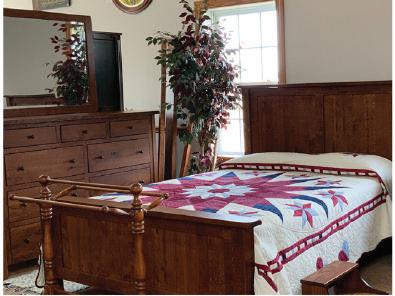




























or creation of art as the primary subject.
L-770e Created Art in Your Community – 1-5 Photograph(s) showing local art in your community.



L-770f Word(s) – Single word spelled out using built or natural environment or words within the community with personal significance or meaning.
HORTICULTURAL PHOTOGRAPHY EXHIBITIONS




Horticulture is the science, art, technology, and business concerned with intensively cultivated plants that are used by people for food, for medicinal purposes, and for aesthetic gratification. Horticulture is divided into two categories:





7. Boxes will be displayed on their side, not flat. Therefore, larger specimens must be attached near the lower portion of the box.

8. Rock, Mineral and Fossil Identification Labels are available from the Extension Office or KY Geological Survey (KGS) website http://uky.edu/ KGS/education/4H.htm. These are the only labels acceptable.

The cultivation of plants for food (pomology and olericulture):
1. Pomology deals with fruit and nut crops (not included in photography classes)


2. Olericulture deals with herbaceous plants for the kitchen, including, for example, carrots (edible root), asparagus (edible stem), lettuce (edible leaf), cauliflower (edible flower), tomatoes (edible fruit), and peas (edible seed), (included in photography classes)





9. Specimens that are polished may lose points.


10. Exhibits may not be eligible for class champion if:
a. Box does not fit in the size stated in rule 3.
b. Box contains too few or too many specimens.




Plants for ornament (floriculture and landscape horticulture).




c. Box does not have a Plexiglas cover that can be opened.
d. Labels not correctly filled out.
e. Specimen is mounted jewelry.




1. Floriculture deals with the production of flowers and ornamental plants; generally, cut flowers, pot plants, and greenery, (included in photography classes)
2. Landscape horticulture is a broad category that includes plants for the landscape, including lawn turf, but particularly nursery crops such as shrubs, trees, and climbers, (not included in photography classes)




For the purposes of the Kentucky 4- Horticulture Photography Contest, only photographs representing the areas of Olericulture and Floriculture will be accepted.
HORTICULTURAL PHOTOGRAPHY CLASSES
L-771 Single black and white. Horticultural subject or activity. (Maximum size: 8” x 12”)






f. The specimen is not clearly numbered on the label (the judge is unable to determine which specimen goes with which label).
g. Specimens are not arranged in numerical order.






h. Duplicate specimens are used to reach minimum number. However, varieties of the same rock or mineral are acceptable if the specimen is identified by a different name (i.e., quartz, smoky quartz, amethyst, agate, chert, flint or calcite, Iceland spar, aragonite, travertine). Also, acceptable if the duplicate specimen has an adjective in front of the specimen (i.e., calcite, red calcite, or limestone, fossiliferous limestone, oolitic limestone). If each entry in that class has duplicate named specimens, then each entry may qualify for class champion but will not be eligible for grand champion.


L-772 Single color. Horticultural subject or activity. (Maximum size: 8” x 12”)







11. Only one entry per 4-H member permitted in Geology. For each of the classes, specimens may consist of rocks, minerals, and or fossils. There is a separate label for rocks, minerals, and or fossils (three different labels). Label and label instructions are available at the Kentucky Geological Survey website at http://www.uky.edu/KGS/education/4H.htm.


L-773 Sequence of 4 photographs. B&W or Color representing a horticultural event or activity that tells a visual story, chronologically, without the use of words.
1. NOT a Cloverbud eligible project.




L-715 First year geology - consisting of 15 different specimens.


L-774 Horticulture collection (B&W or color), consisting of 6 photographs. DIVISION 9 - 4-H GEOLOGY








L-716 Second year Geology - consisting of 25 different specimens (up to 12 may be from previous project year) (no more than 2 boxes)
L-717 Third Year Geology - consisting of 35 different specimens (up to 17 may be from previous project year) (no more than 2 boxes)


2. Should have an acrylic type cover (such as Plexiglas) that can be easily removed for judging.
3. Ideally, display boxes: should be no less than 14 inches and no more than 17 inches vertically and no less than 16 inches and no more than 24 inches horizontally to fit into state fair display cases. The depth of the display boxes should be no more than 4 inches. Hinges and locks must be flush and mounted on sides or top of boxes so boxes will sit level. Note: Cardboard or plastic boxes can be used but will not be eligible to receive Grand or Reserve Champion.










L-718 Fourth Year Geology - consisting of 50 different specimens (up to 25 may be from previous project year) (no more than 2 boxes)


L-719 Special collection for fifth year or more members - creative, advanced display of member’s choosing which depicts a geological process, theme, story, or manufacturing process. Posters, notebooks and written narratives may be included.

1. NOT a Cloverbud eligible project.


4. Ideally, each exhibit must be secured with a lock. Attach a key to the box with your name and county firmly attached to the key. Key will be returned to 4-H Agent. Keep another key in case the state fair key is misplaced. ) (Note: if a cardboard or plastic box is used and the 4-Her is unable to attach a lock, the exhibitor enters the collection at their own risk-meaning the state fair and Kentucky 4-H Program are not responsible for stolen or lost items or specimens).





2. Exhibitors are not to exceed the number of specimens listed for each class. If an exhibitor exceeds these numbers, the entry will be judged for blue, red and white ribbons, but will not be considered for top awards. If exhibit contains less than the correct number, it will be disqualified.


5. If fabric is used, use fabric glue to adhere the entire piece of fabric to box. Suggested fabrics are felt or velveteen.








L-703 Leaf Collection - Collection of 10 leaves representing 10 forest trees found in Kentucky. Mounting instructions in the forestry book, “4-H Forestry Project Unit I - Introducing Yourself to Trees” (4DF-01PA or most recent version) Activity #1 are to be followed.


6. Rocks, minerals, and fossils should be firmly attached to the box, and should be numbered to correspond with the number on the Geology Identification Labels. See Rule 10 for label information.





L-704 Leaf Print Collection - Collect and print 10 leaves representing 10 forest trees found in Kentucky. Instructions in the forestry book, “4-H Forestry Project Unit I - Introducing Yourself to Trees” (4DF-01PA or most recent version) Activity #3 are to be followed.








L-705 Leaf Collection-2nd year - Collection of 20 leaves representing 20 forest trees and found in Kentucky. Mounting instructions in the forestry book, “4-H Forestry Project Unit I-Introducing Yourself to Trees” (4DF-01PA or most recent version) Activity #1 are to be followed.

























L-706 Leaf Print Collection-2nd – Collect and print 20 leaves representing 20 forest trees native to Kentucky. Instructions in the forestry book, “4-H Forestry Project Unit I -Introducing Yourself to Trees” (4DF-01PA or most recent version)


e. Care will be provided for all plants. However, because of low light, air conditioning, etc., no guarantee can be made that the plants will be returned in its original condition. Plants are entered at the risk of the exhibitor.




L-707 Educational Exhibit – Forest Products




Develop a creative educational exhibit on a forest product produced in Kentucky. The product may be a traditional wood product (such as flooring or bourbon barrels) on a non-timber forest product (such as maple syrup, shitake mushrooms, etc.) The exhibit may utilize any visual technique. The total exhibit is not to exceed dimensions of 2’ x 2’, or four (4) square feet.







L-708 Educational Exhibit – Forest Health (Invasive Tree Insect or Invasive Tree Disease)
Develop a creative educational exhibit on a current invasive tree insect or invasive tree disease impacting Kentucky’s forest trees. The exhibit may utilize any visual technique. The total is not to exceed dimensions of 3 ’x 3’, or nine (9) square feet.









f. Vegetable entries should be fresh, with the label on top of exhibit. Do not stick toothpicks in produce.

Youth should NOT use garden soil in containers. Use well-drained, disease-free potting soil for all containers.




L-561 Environmental Awareness: Note: a one-page description of project must accompany entry item (type or printed neatly) to be eligible for entry. Examples include:
A. Tree planting on city property, roadways, parks, etc.
B. Home landscaping
C. Composting



L-562 Production and Marketing: Examples include:
A. Vegetable garden planted for home and/or market use.

L-709 Collection of 30 leaves representing 30 forest trees native to Kentucky. Mounting instructions in, “4-H Forestry Project Unit 1 – Introducing Yourself to Trees” (4DF-01PA or most recent version) Activity #1 are be followed.


B. The planting, production, or management of fruit plantings.

L-710 Leaf Print Collection 3rd Year – Collect and print 30 forest trees native to Kentucky. Instructions in the forestry book, “4-H Forestry Project Unit I – Introducing Yourself to Trees” (4DF-01PA or most recent version) Activity #2 are to be followed.
L-711 Leaf Collection – 4th Year







C. The planting, production, or management of trees, shrubs, greenhouse crops or garden perennials.



L-563 Experimental Horticulture: Note: a one-page description of project must accompany entry item (type or printed neatly) to be eligible for entry. Examples include:

A. “Science Fair” type of exhibit involving experimental work with plants.
B. Comparison of different varieties of vegetables or annual flowers.

Collection of 40 leaves representing 40 forest trees native to Kentucky. Mounting Instructions in the “4-H Forestry Project Unit I – Introducing Yourself to Trees” (4DF-01PA or most recent version) Activity #1 are to be followed.
L-712 Leaf Print Collection – 4th Year





C. Comparison of mulching or other cultural practices.

Collect and print 40 leaves representing 40 trees native to Kentucky. Instructions in the forest book, “4-H Forestry Project Unit 1 – Introducing Yourself to Trees” (4DF-01PA or most recent version) Activity #2 are to be followed.
L-713 Leaf Collection 5th Year







L-564 Horticultural Project Exhibits: Note: a one-page description of project must accompany entry item (type or printed neatly) to be eligible for entry. Examples include:
A. How to propagate plants.
B. How to force spring bulbs.
C. How to start seeds.
D. How to graft cacti.

E. How to dry herbs.

Collection of 50 leaves representing 50 forest trees native to Kentucky. Mounting Instructions in the “4-H Forestry Project Unit 1 – Introducing Yourself to Trees” (4DF-01PA or most recent version) Activity #1 are to be followed.
L 714 Leaf Print Collection 5th Year








Plant Display: Youth should NOT use garden soil in containers. Use well-drained, disease-free potting media for containers.
L-565 Terrariums

Collect and print 50 leaves representing 50 trees native to Kentucky. Instructions in the forest book, “4-H Forestry Project Unit I – Introducing Yourself to Trees” (4DF-01PA or most recent version) Activity #2 are to be followed.

L-566 Dish gardens (desert or tropical)


L-567 Vegetable container gardens (grown in container - not dug out of the garden)


DIVISION 11 - 4-H HORTICULTURE & PLANT


1. Cloverbud eligible project at COUNTY LEVEL ONLY.







L-568 Annual container gardens - (non-vegetable)
L-569 House plants
L-570 Hanging baskets

2. A class of exhibits representing the horticulture and plant science projects will be included in the Kentucky State Fair. Entries will be limited to one project per class from each county. Examples of acceptable exhibits are listed below. Plants, photographs, or other visual aids are necessary for most projects. The class will be governed by the following:

L-571 Herb Container Garden
L-572 Window Box Display




L-573 Upcycle Container Garden (Previously used container recycled, example, wood pallet garden)
Garden and/or Orchard Displays










a. Exhibits will be judged on the quality of the primary (horticulture) project work.


b. All plants exhibited MUST have been grown by the 4-H’ers for at least 6 months. Exceptions will be made with terrariums, dish gardens and annual and vegetable bucket gardens which may have been grown for a shorter period of time.
L-574 The exhibitor may exhibit as many different fruits and/or vegetables from their garden as desired. Any size or type (minimum of five types) of produce may be displayed in the 2’x3’ area provided for each exhibit. The exhibit must be in a display container (box or basket) which can be easily moved. Vegetables will not be returned to the exhibitor. DO NOT use toothpicks. They will be judged as follows:



Quality of Produce 40%
Attractiveness of Container 30%
Uniformity and true-to type ness 10%



c. Items improperly entered will be disqualified.

d. Exhibits entered with pesticide residue will be disqualified and disposed of.








Number of different types 15%
Labeling 5%


4-H’ers may also exhibit plates of vegetables. A white paper plate for vegetables must be supplied by the exhibitor. These vegetables will not be




















returned to the exhibitor. Classes of vegetables will be limited to:
L-575 Tomato, cherry (5 per plate) Must be ripe (red or yellow color only)
L-576 Tomato, beef steak (5 per plate)



L-577 Tomato, heirloom (5 per plate)
L-578 Peppers, hot (5 per plate)
L-579 Peppers, bell (5 per plate)


L-580 Peppers, sweet (5 per plate)
L-581 Cucumbers, slicing (5 per plate)
L-582 Cucumbers, pickling (5 per plate)


L-583 Beans, snap or lima (12 per plate)


L-585 Cantaloupe (1 whole)
L-586 Squash, summer (3 per plate)
L-587 Eggplant (3 per plate)


L-588 Potato (5 per plate)





usage (display must contain at least 12 different examples)
L-652 Simple household or farm use circuit (Circuit must contain one single pole switch controlling one electrical load device. Circuit should be mounted on a sturdy mounting surface and free standing. Wiring should be done with Romex NM-B 12-gauge wire and clamped or stapled appropriately. A circuit diagram with explanation must be included)

L-584 Corn, sweet (in the husk with silks) (5 ears per plate) – place in a plastic grocery bag – NOT in a zip top bag


The largest vegetable may not be the highest quality, nevertheless, it is unique. The largest entry in each of the following classes will receive a class champion ribbon.








L-653 Complex household or farm use circuit (Circuit must contain at least two three-way switches, and may also contain a four-way switch, controlling one electrical load device. The circuit must also contain a working duplex electrical outlet. Circuit should be mounted on a sturdy mounting surface and free standing. Wiring should be done with Romex NM-B 12-gauge wire and clamped or stapled appropriately. A circuit diagram with explanation must be included)




L-589 Largest Tomato (by weight) must be ripe (red or yellow color only)
L-590 Largest Pumpkin (by weight)

L-591 Largest Watermelon (by weight)
DIVISION 12 - 4-H ELECTRIC


1. NOT a Cloverbud eligible project.




L-654 Table, desk, vanity or floor lamp, any purpose – original design only. (Pop Can Lamp kits will be disqualified).




(4HCCS BU-06851) (exhibits may be either DC or AC powered. AC powered exhibits must be able to be safely connected and disconnected from a standard 120-volt duplex outlet).


2. Exhibits must be made based on the appropriate units in the 4-HCCS Electric Excitement project books. Projects entered using Snap Circuits® kits will be disqualified.
3. The exhibitor is limited to one entry per class.




L-655 Basic electronic circuits without solid-state components (from project book).
L-656 Basic electronic circuits with solid-state components (from kit).


3. All exhibits requiring bulbs must be the correct size.




L-657 Basic electronic circuits with solid-state components (original circuit design, must include circuit diagram and explanation).

4. Use of molded plug-ins is not prohibited but discouraged.
5. Any electric project observed or judged to be unsafe or potentially harmful to the public or surrounds will be disqualified immediately and disabled for further use.





6. Effective strain relief should be provided for all wire to terminal connections. Knots, clamps, connectors, or staples are acceptable when used appropriately.
MAGIC OF ELECTRICITY (4HCCS BU-06848) (All exhibits must be DC powered).



L-658a Wind powered energy project (original design).
L-658b Solar powered energy project (original design).


L-658c Water powered energy project (original design).
1. NOT a Cloverbud eligible project.






L-645 Battery powered series and parallel circuits (Circuits must include both series and parallel, a simple switch and can be no more than 9 volts).
L-646 Homemade Galvanometer (Must be able to detect the presence of an electrical current)





2. An exhibitor may enter only one Wood Science class per year.
L-674 Level 1, made from a kit. Simple items which have pre-cut, and pre-drilled parts and youth demonstrate knowledge of assembly, selection, and use of fasteners (nails, screws and/or glue), sanding techniques, and appropriate finishes. (Examples could include but not limited to small bird house, non-hopper bird feeder, etc.) Item must demonstrate skill with fasteners, sanding, and appropriate finish (no puzzles).


L-647 Electromagnetic Circuits (Must be a working electromagnet with a simple switch and can be no more than 9 volts).








L-675 Level 1, NOT from a kit. Simple constructed wood item showing knowledge of hand tools, wood selection, cutting, drilling, usage of fasteners (nails, screws and/or glue), sanding techniques, and appropriate finishes. (Examples could include but not limited to: napkin holder, letter holder, simple picture frame, wire wiggly, towel holder, serving tray, jewelry box, small flag holder, 4-H book ends, airplane, hurricane lamp, trivet (pot holder), etc.)





L-648 Simple homemade DC motor (Rotor must turn under its own power). INVESTIGATING ELECTRICITY (4HCCS BU-06849) (all exhibits must be DC powered)







L-649 Battery powered series or parallel circuit (Circuit may be either series or parallel, must contain either a momentary and/or three-way switch, a circuit diagram with explanation and can be no more than 9 volts).



L-650 Original design soldered circuit project (Circuit must contain an on/ off switch, a motion or tilt activated switch, a light and sound producing device and must be powered by 9 volts. All connections in the circuit must be soldered and a circuit diagram with explanation must be included).


L-676 Level 2, made from a kit. More elaborate items which require proper cutting, drilling and youth demonstrate knowledge of selection and skill in use of fasteners (nails, screws and/or glue), sanding techniques, and appropriate finishes. (Examples could include but not limited to jewelry boxes, tool tray, large bird house, pine wood cars, etc.) Item must demonstrate skill with fasteners, sanding, and appropriate finish (no puzzles).


WIRED FOR POWER (4HCCS BU-06850) (all exhibits must be AC powered and be able to be safely connected and disconnected from a standard 120-volt duplex outlet).





L-677 Level 2, NOT from a kit. More elaborate items that demonstrate mastered skills with hand tools, basic knowledge of power hand tools, fastening options, appropriate surface preparations, and finish applications. (Examples could include but not limited to puzzle, foot stool, revolving tie rack, 4-H key holder, cutting board, book rack, serving dish shelf, sawhorse, hopper type bird feeder, etc.)











L-651 Display of wire sizes and types with description and example of

L-678 Level 3, NOT from a kit. Items showing a more advanced knowledge of power tools, expertise in cutting, fitting, surface preparation, attention to fastening details, and finish application, (Examples could include but not limited to a multi- purpose box, corner shelf, bookshelf or laminated wood


























projects, garden bench, planting box, nail and toolbox, shop tool rack & shelf, etc.) Original designs are welcomed. This exhibit is to be made up of two parts: 1) the item and 2) a folder containing photographic documentation of the steps taken to complete this exhibit. If the exhibit does not include both the item and a folder containing photographic documentation, then the exhibit will be disqualified.













be in an envelope attached to the back of the display box. Envelopes should be attached to permit their being opened easily to remove catalogue from them without moving the exhibit.

L-679 Level 4, NO kits. Exhibits with “furniture” quality finish, showing an understanding of all woodworking techniques learned in previous levels. Items must show a mastery of joint construction and use of special woods, and finishes. (Examples could include but not limited to checker boardroom divider, coffee table, end table, chest of drawers, gun rack or cabinet, etc.) Original designs are welcomed. This exhibit is to be made up of two parts: 1) the item and 2) a folder containing photographic documentation of the steps taken to complete this exhibit. If the exhibit does not include both the item and a folder containing photographic documentation, then the exhibit will be disqualified.











6. Most specimens in the display cases should be pinned, and the use of vials is discouraged. If vials are used, they may account for no more than 2% of a collection. Vials must be securely wired or pinned to the pinning bottoms.





7. The inclusion of non-insect specimens (spiders, e.g.) is encouraged, but because this is primarily an insect collection, and because non-insects do not preserve well on insect pins, points will be deducted if there are more than one specimen from each non-insect class.


L-680 Level 4, NO kits. Exhibits do not require a fine finish (painted finish allowable) because of practical use. Items demonstrate knowledge of all woodworking techniques learned in previous levels. Items must show a mastery of cutting, drilling, joint construction, use of special woods, and appropriate finishes. (Examples could include but not limited to porch swing, chaise lounge, picnic table, lawn chair, large planters, etc.) This exhibit is to be made up of two parts: 1) the item and 2) a folder containing photographic documentation of the steps taken to complete this exhibit. If the exhibit does not include both the item and a folder containing photographic documentation, then the exhibit will be disqualified.





8. Pinned entomology exhibits are judged on the following categories: Orders, Species, Common Names, Labels, Condition of Specimens, Overall Appearance, Life Cycle Representation, Catalog of Specimens. Check with county 4-H Agent for point distribution on score sheet.
9. Exhibits will be penalized if they do not:


a. Use insect pins for pinning insects.
b. Use the 4-H Entomology identification labels.




c. Use display boxes that are approximately 9 inches x 12 inches x 3 ½ inches cardboard boxes or wooden boxes that are approximately 18 inches x 24 inches x 3 ½ inches.



d. Fulfill the requirements of the particular exhibit under which it is entered.
e. Have the insects arranged so the box can be exhibited horizontally.


f. Have the display collection catalogue in an envelope attached to the back of the display box through fifth year projects.

10. No extra credit will be given for specimens exhibited beyond the numbers listed in the current project books.


DIVISION 14 - 4-H ENTOMOLOGY & HONEY
1. NOT a Cloverbud eligible project.



2. An exhibitor may enter only one class inEntomology and no more than two entries in Honey (one extracted, one chunk).




3. Specifications for pinned insect exhibits 687A, 688A, 689A, 690A, and 691A, and Insect Photography Exhibits: 687B, 688B, 689B, 690B, 691B Pinned-Insect Exhibits:















11.4-H’ers entering fifth year cannot use the same exhibit that has been judged in any previous State Fair.
Insect Photography Exhibits:


1. Folding cardboard insect-collection boxes available through University of Kentucky (Martin-Gatton College of Agriculture, Food and Environment Department of Entomology) should be used. Homemade or purchased cardboard or wooden exhibit boxes may be used instead but must have protective lids that can be easily opened and that don’t damage the specimens inside. They must be approximately 9 inches by 12 inches* (cardboard) or 18 inches x 24 inches (wooden) and approximately 3 ½ inches thick. All boxes should have Plexiglas or glass covers and boxes must be easily opened (for instance; if a screw is used to secure Plexiglas tops, use a thumbscrew fastener instead of a fastener that requires a tool). (*For cardboard boxes, any size with a footprint about the size of a standard sheet of printer paper or a little larger is acceptable).



1. Images will be submitted on a USB memory device (such as a “thumb drive”) with no other data except for the images and folders. The USB device must be identified externally with a tag or label, showing “4-Her’s last name-County-Lot Number-Class Number-Entry Number”. The single root folder will be labeled with the same information. Images will be contained inside this folder. Example folder name: Doe-Fayette-6026-687a-24531.




2. Each image will be .jpg format, 1920 x 1080 pixels. Vertical or horizontal black bars may be present to allow for cropped images.


3. Each image will have a filename that matches the following: “lastname-county-#.jpg” where “#” indicates the number of the image inside the folder. Example filename: Doe-Fayette-1.jpg.


2. Specimens are to be arranged so the box can be exhibited horizontally. 4-Hers may attach wires to the back of wooden boxes to help make them easier to display.





3. Identification labels available from your County Extension Office must be used, or custom labels may be printed if they conform exactly to the font, font size and font color of the official labels. Labels should be printed onto white cardstock. The exhibit identification card should be placed on the front of the box (each box). Instructions for pinning and labeling are included in your project literature.








4. Each image will include a 400 x 225 pixel (or larger if necessary) white notation box with important information about the photo. This notation field may be placed anywhere inside the image, including inside black bars (if present). Fonts may vary based on the 4-Her’s software, but we recommend Ariel, 18 pt, black, non-bold. The notation field will include the following information, with on space between each line:




[4-Her’s Name, County, Lot Number, Class Number]
[Date of original photograph]/[Location of original photograph. Location may be in the form of a street/city/zip code address or GPS coordinates.]

4. One half of the specimens may be from previous year’s collection or from anywhere in the United States; one half or more must be Kentucky insects collected since the last Kentucky State Fair. No insects that were originally collected from countries outside of the United States will be judged.




[Brand and type of camera or camera phone]

[Settings, including type of lens, relevant camera settings, and “flash” or “no flash”]


[Insect Order – Common Name]



5. First year entomology photography exhibits are judged on the following categories: Orders, Species, Common Names, Labels, Quality of Photograph. Check with county 4-H Agent for point distribution on score sheet.
6. Digital insect collections be penalized if they:








5. For the first through fifth year projects, a display collection catalog must


a. Consist of images that were created by someone other than the 4-Her b. Are not submitted and labeled according to guidelines.




















7. No extra credit will be given for photographs submitted beyond the numbers listed in the current project books.

4-H Entomology Pinned and Photography Exhibits will be divided into the following classes:



L-687A First year project: up to three cardboard boxes approximately 9 inches x 12 inches, or up to two 19 inches x 24 inches wooden boxes, with minimum of 25 insects, maximum 50 insects, from at least four orders. Identification beyond order is not necessary. All specimens must have a date and locality label.








L-687B First year project: minimum of 25 insect photographs, maximum 50 photographs, from at least four orders. Identification beyond order is not necessary. All photographs must have notation field.
L-688A Second year project: up to three cardboard boxes approximately 9 inches x 12 inches, or up to two 18” x 24” wooden boxes, with minimum of eight orders and not less than 50 insects, nor more than 100 insects. Half of the insects should be identified with a common name.





Life cycle of two insects may be displayed if desired.


L-690b Fourth year project (150 photographs minimum, no maximum, 12 orders minimum, all identified with common names except immature stages. Photos of at least one arthropod egg, nymph, larva, and pupa—identified to order, no common name needed—should be included as a part of the 150+ photos). Specifications for exhibits are otherwise the same as for 689B. No images from previous insect photography projects may be reused for this project.


L-688B Second year project: 50-100 photographs total, minimum of 8 orders, at least one-half identified with a common name. Specifications for exhibits are the same as for 687B except that no images from the first-year photography project may be reused for this project.








L-690c Junior Level Entomology Video Project. 1–3-minute entomology video submitted to social media platform (YouTube), focusing on one insect or insect relative (including arachnids, centipedes, millipedes, and crustaceans) that lives in Kentucky. Specifications:



L-689A Third year project: three cardboard boxes approximately 9 inches x 12 inches, or two 18” x 24” wooden boxes, with a minimum of 10 orders and 100 insects, a maximum of 150 insects.




L-689B Third year project: 100-150 photographs total, minimum of 10 orders, all identified with common names except immature stages. Photos of at least one arthropod egg, nymph, larva, and pupa— identified to order, no common name needed—should be included as a part of the 100-150 photos. Specifications for exhibits are the same as for 688B except:











a. Video may be created on any video-editing platform and may include editing, cuts, text, special effects, filters, still images, music, and narration.



b. The final video will be uploaded by the 4-Her onto YouTube or TikTok, either to an account managed by local County Extension staff or to an account managed by the 4-Her. If the County Office is managing the account, they will provide a link to the video to blaken@uky.edu. If the 4-Her chooses to upload the video with privacy settings, the final video may be shared as a link to blaken@uky.edu (for YouTube videos) or direct messaged to @kentucky_bugs (for TikTok videos) prior to St. Fair project submission deadlines.







- Each image will include a 400 X 300 pixel (or larger if necessary) white notation box with important information about the photo. This notation field may be placed anywhere inside the image, including inside black bars (if present). Fonts may vary based on the 4-Her’s software, but we recommend Ariel, 18pt, black, non-bold, or larger. The notation field will include the following information, with one space between each line:
c. The video should begin with an introduction from the 4-Her which includes the following information: First Name, County Name, Name of Project (“Junior Level Kentucky 4-H Entomology Video Project”), Common Name of Insect (or insect relative), Scientific Order Name of Insect (or insect relative).


[4-Her’s Name, County, Lot Number, Class Number]

[Date of original photograph]/[Location of original photograph. Location may be in the form of a street/city/zip code address or GPS coordinates.]

[Brand and type of camera or camera phone]










d. The 4-Her may appear in the video if they elect to do so and if they have a H-328 photo consent form on file (https://entomology.ca.uky.edu/file/ photo-imageconsentformh328pdf). The inclusion of 4-H logos (such as on a T-shirt, or on a County Extension sign) in the video is encouraged. Videos may be used by the University of Kentucky on websites or social media for education or entertainment purposes.




[Settings, including type of lens, relevant camera settings, and “flash” or “no flash”]
[Insect Order – Common Name (if applicable)]




e. The video should focus on a single kind of native or non-native insect or insect relative that lives wild in Kentucky. The video does not have to focus on a single species but needs to be more specific than the Order level. For instance, a video on “wolf spiders” would be acceptable, but “spiders” would be too general for this project. Similarly, “lady beetles” would be an appropriate topic, but “beetles” is too general.





[Life stage identified for all non-adult arthropods]




- Third year entomology photography exhibits are judged on the following categories: Diversity, Inclusion of life stages, Identification, Labels, Quality of Photographs. Check with county 4-H Agent for point distribution on score sheet.



- Identification to order (or class for non-insect arthropods) is necessary for any eggs, nymphs, larvae, pupae, and adult insects in the project; common name identification is necessary for all adult arthropods in the project. - No images from previous insect photography projects may be reused for this project.








f. The video may cover any factual information about the creature including: habitat, feeding strategies, defense, range, life cycle, impacts to humans, conservation status. Additional content, (such as folklore, humor, or personal experiences with the creatures) may be included but should account for less than 50% of the content. Information may be delivered via narration (live or overdubbed), text/subtitles, or a combination.





g. Any media used in the video must be generated by the 4-Her. Images, video clips, music or sound clips from other creators should not be used, with the exception of background music licensed for use by individual social-media platforms.

L-690a Fourth year project: three 9 inches x 13 inches official cardboard boxes, or two 18 inches x 24 inches wooden boxes, with minimum of 12 orders and 150 insects, not maximum. An additional cardboard or wooden box with an example of insect damage, the stage of the insect causing the damage and any other stage of the insect that helps identify the problem. Include information in the display that tells how the insect is controlled.















L-691 Fifth year project (may be repeated for successive years of eligibility but must be a different exhibit. No exhibit that has been judged in any previous State Fair may be entered.) Any type of display that pertains to experiences beyond those of previous projects. Special collections of native and/or exotic butterflies, beetles to some other insect order; an in-depth study of one insect or small group of insects: a display of insect camouflage: a display of plastic embedded insects: a collection of insect larvae and nymphs are examples. Charts, photographs, models, or any other visual aids may be used. 4-H’ers are encouraged to write a short (1 or 2 paragraphs) statement




























developing the theme of their fifth-year display.

L-691b 4-Her may repeat the fourth-year project with all new photographs or submit a creative digital project that is different from the previous projects. Examples may include: a documentary on a beneficial or pest insect based on video footage and photos curated by the 4-Her; a webpage covering an aspect of entomology, featuring the 4-Hers digital photographs; a short online social media course that teaches viewers about some aspect of entomology. This project may be repeated for successive years of eligibility but must be a different exhibit each year (or a repeat of the 4th year project with new photos).








e. e. Posters that do not include the narrative or do not conform to the topics specified in the class description will not be judged.



4. Additional Documentation Required: Every class in this division requires a narrative. See class description for specifics.
Class Descriptions:
Level 1 (Grades 4-5): The Consumer in Me


L-691c Senior Level Entomology Video Project. 1–3-minute entomology video submitted to social media platform (YouTube), focusing on one insect or insect relative (including arachnids, centipedes, millipedes, and crustaceans) that lives in Kentucky. Specifications: same as 690C except for Senior level.











Honey will show better in oval, flat sided to square clear glass containers. 4-H’ers mustuse standard honey jars purchased from a bee supply vendor. Wide-mouth honey jars may be used. The jars and lids must be clean. Fill jars to the “fill line”. The “fill line” is the continuous ring that circles the jar and not necessarily the threads that help hold the lid. Note that jars must be glass, with the exception being the cut comb honey.






Note: Two jars must be submitted for the following classes. Display cases for capped honey may be made by 4-H’ers or bought from a store, but they must be bee-proof and have a removable top for the judge to check moisture. One frame per container. Observation hives shall be secure from opening to the satisfaction of the Bees and Honey superintendent. This shall include the top of the observation hive and all holes and openings. Openings should be secured by screws or locks. Observation hives may be picked up after the end of judging.













L-914 Poster on “Bargain Shopping” For grades 4-5; complete a cost comparison chart for one product you and your family use as outlined in the activities under “Bargain Shopping” on pp. 20-21. Use 20” X 30” foam core board or cardboard. Write a narrative telling how the decision-making process was used to reach your final choice; include answers to the questions in “Check This Out!” on p. 21. At the end of the narrative, list the sources of information used in researching the topic. Make a poster on “comparison shopping.” Include name, age, and county at top of narrative. The narrative can be handwritten or a computer printout; single or double spaced; on plain white or notebook paper - one to two pages, printed on front side only. Place the narrative in a plastic sleeve. Attach the sleeve to the back of the poster with tape or a binder clip.





L-692 Two one-pound glass Queenline or Classic jars of white extracted honey.





L-915 Poster on “What is the Best Buy?” For grades 4-5; complete a cost comparison chart for two products in three different sizes as outlined in the activities on pp. 22-23. Use 20” X 30” foam core board or cardboard. Write a narrative telling how the decision-making process was used to reach your final choice; include answers to the question in “Check This Out!” on p. 23. At the end of the narrative, list the sources of information used in researching the topic. Make a poster on “checking prices”. Include name, age, and county at top of narrative. The narrative can be handwritten or a computer printout; single or double spaced; on plain white or notebook paper--one to two pages, printed on front side only. Place the narrative in a plastic sleeve. Attach the sleeve to the back of the poster with tape or a binder clip.











L-693 Two one-pound glass Queenline or Classic jars of light amber extracted honey.





L-694 Two one-pound glass Queenline or Classic jars of amber extracted honey.
L-695 Two one-pound glass Queenline or Classic jars of dark amber extracted honey.





L-696 Two wide mouth pints or Classic jars of chunk honey, any color.
L-697 Any frame of capped honey suitable for comb honey (Light)


L-698 Any frame of capped honey suitable for comb honey (Amber)
L-699 Any frame of capped honey suitable for extraction (Light)




Create your poster turned in this directions (vertical) 30” 20”
Do not create your poster turned in this directions (horizontal)





L-700 Any frame of capped honey suitable for extraction (Amber)



L-701 Best display of one-frame observation hive of honeybees consisting of worker bees, a properly marked queen, and brood.



DIVISION 15: Consumer and Financial Education
1. Cloverbud eligible project at COUNTY LEVEL ONLY.



2. Number of Entries Permitted: A member may enter only one class in the Consumer and Financial Education Division.
3. Unique Rules or Instructions:





a. Create poster on 20” X 30” foam core board or sturdy cardboard (turned in a vertical direction).




b. b. The use of pencil on the front of the poster is discouraged.

c. c. Judging criteria will be based on theme, poster design (lettering, attractiveness, how well it conveys a message), and narrative.



d. d. Information for the following classes can be found in the 4-H Consumer Savvy project manuals - The Consumer in Me, Consumer Wise, and Consumer Roadmap.







L-916 Poster on “Media and the Marketplace” For grades 6-8; complete a commercial comparison as outlined in the activities on pp. 18-19. Use 20” X 30” foam core board or cardboard. Write a narrative of your answers to the questions in “Check This Out!” on p. 19 and tell what conclusions you were able to draw from the experience. At the end of the narrative, list the sources of information you used in researching your topic. Make a poster related to “advertising aimed at young people”—Include name, age, and county at top of narrative. The narrative can be handwritten or a computer printout; single or double spaced; on plain white or notebook paper--one to two pages, printed on front side only. Place the narrative in a plastic sleeve. Attach the sleeve to the back of the poster with tape or a binder clip.







L-917 Poster on “Decision! Decisions! Decide!” For grades 6-8; complete the 6-Step Decision Making process on any item you wish to purchase as outlined in the activities on pp. 12-13. Use 20” X 30” foam core board or cardboard. Write a narrative of your answers to the questions in “Check This Out!” on p. 13 and tell what conclusions you were able to draw from




















the experience. At the end of the narrative, list the sources of information you used in researching your topic. Make a poster related to “the consumer decision-making process”. Include name, age, and county at top of narrative. The narrative can be handwritten or a computer printout; single or double spaced; on plain white or notebook paper - one to two pages, printed on front side only. Place the narrative in a plastic sleeve. Attach the sleeve to the back of the poster with tape or a binder clip.






Level 3 (Grades 9-12): Consumer Roadmap









L-918 Poster on “How to Write a Wrong” For grades 9-12; write a complaint letter as outlined in the activities on pp 22-23. Use 20” X 30” foam core board or cardboard. Write a narrative of your answers to the questions in “Check This Out!” on p. 23 and tell what conclusions you were able to draw from the experience. At the end of the narrative, list the sources of information you used in researching your topic. Make a poster related to “resolving a consumer complaint”. Include name, age, and county at top of narrative. The narrative can be handwritten or a computer printout; single or double spaced; on plain white or notebook paper - one to two pages, printed on front side only. Place the narrative in a plastic sleeve. Attach the sleeve to the back of the poster with tape or a binder clip.



















bale in a large double strength garbage bag. Tags must be attached to the bale and not the bags-Print id tags on cardstock with a hole punched in the corner and attached using rubber bands to the bale.


6. Legume hay shall consist of 85% if the class designed legume. Grass hay shall be 85% of the class-designed grass. Mixed hay should contain only one eligible grass and one eligible legume. The legume component shall be at least 30 percent alfalfa and not more than 70% legume. Eligible legumes are alfalfa, red clover, and ladino clover. Eligible grasses are timothy, Bermuda grass, orchard grass, tall fescue and rye grass.





7. The field corn and popcorn will be exhibited in trays provided by the State Fair. Variety and yield information must be included.
8. Hay will be returned to your county.




9. Roots of soybeans must be washed.

L-919 Poster on “I Own a Car or Does It Own Me?” –For grades 9-12; calculate and illustrate the costs of owning a car as outlined in the activities on pp. 28-31. Use 20” X 30” foam core board or cardboard. Write a narrative of your answers to the questions in “Check This Out!” on pp. 29-30 and tell what conclusions you were able to draw from the experience. At the end of the narrative, list the sources of information you used in researching your topic. Make a poster related to “consumer decision-making in buying a car.” Include name, age, and county at top of narrative. The narrative can be handwritten or a computer printout; single or double spaced; on plain white or notebook paper--one to two pages, printed on front side only. Place the narrative in a plastic sleeve. Attach the sleeve to the back of the poster with tape or a binder clip.

LEGUME HAY:



10. Exhibitor is limited on one entry per class. The exhibitor is not limited to number of classes entered.



L-600 Alfalfa hay, ½ bale (no full bales accepted) from the current year’s project crop, neatly tied and labeled


GRASS HAY:



L-601 Red clover hay, ½ bale (no full bales accepted) from the current year’s project crop, neatly tied and labeled



L-602 Timothy Hay, ½ bale (no full bales accepted) from this current year’s project crop, neatly tied and labeled. Place hay in a double strength plastic bag.


L-920 Poster on “What Does Real Life Cost?” –For grades 9-12; identify and illustrate the true costs of living on your own as outlined in the activities on pp. 32-33. Use 20” X 30” foam core board or cardboard. Write a narrative of your answers to the questions in “Check This Out!” on p. 33 and tell what conclusions you were able to draw from the experience. At the end of the narrative, list the sources of information you used in researching your topic. Make a poster related to “the financial responsibilities of living on your own. Include name, age, and county at top of narrative. The narrative can be handwritten or a computer printout; single or double spaced; on plain white or notebook paper--one to two pages, printed on front side only. Place the narrative in a plastic sleeve. Attach the sleeve to the back of the poster with tape or a binder clip.



L-603 Other Grass Hay, ½ bale (no full bales accepted) from the current year’s project crop, neatly tied and labeled. Place hay in a double strength plastic bag.
MIXED HAY:





L-604 Mixed Hay, ½ bale (no full bales accepted) from the current year’s project crop, neatly tied and labeled.
YELLOW CORN:



L-605 Yellow-ear, from the previous year’s crop, 8 ears shucked, and labeled with variety and yield.




L-606 Yellow-ear, from the current year’s crop, 8 ears shucked, and labeled with variety and yield

WHITE CORN:

DIVISION 16 - 4-H CROPS – Project entry must meet all the requirements for the class; otherwise, the entry will be disqualified.
1. NOT a Cloverbud eligible project.






L-607 Yellow-shelled, from the previous year’s crop, 0.5 gallon in a container, and labeled to show variety and yield.


2. See General Rules applying to all 4-H exhibitors and general rules applying to all exhibits other than livestock previously listed in this catalog. Project entry must meet all requirements for the class; otherwise, the entry will be disqualified.
3. Samples should not be chemically sprayed within 2 weeks of the sample being collected. Exhibits entered with chemical residue will be disqualified and disposed of.








L-608 White-ear, from the previous year’s crop, 8 ears shucked, and labeled with variety and yield
L-609 White-ear, from the current year’s crop, 8 ears shucked, and labeled with variety and yield.




L-610 White-shelled, from the previous year’s crop, 0.5 gallon in a container, and labeled to show variety and yield

POPCORN:


4. Grain samples must be of good quality and free from foreign matter. The Superintendent has the authority to refuse any and all entries due to excess chaff, rodent pellets, mold, musty, foreign materials, or anything that makes it unsuitable for display. Grain is to be brought in clear plastic or glass pint-size containers. Grain and containers will be returned to the county. Identification tags and yield/variety information must be attached to the bag.

L-611 White Popcorn-ear, from the previous year’s crop, 8 ears shucked, and labeled with variety and yield




L-612 Red Popcorn-ear, from the previous year’s crop, 8 ears shucked, and labeled with variety and yield
L-613 Yellow Popcorn-ear, from the previous year’s crop, 8 ears shucked, and labeled with variety and yield.




L-614 Soybeans from the current year’s crop, three stalks tied together below leaves, with roots intact, but free of soil, and labeled to show variety.





L-615 Soybeans from the previous year’s crop. 1-gallon zip lock bag, and labeled to show variety and yield.




5. Hay: Bring ½ hay bale securely bound with cord or twine. Place ½ hay

L-617 Grain Sorghum from the current year’s crop, three stalks tied together below leaves, with roots in tact, but free of soil, and labeled to show variety.























SWEET SORGHUM


L-618 Grain Sorghum from the previous year’s crop, 1-gallon zip lock bag, and labeled to show variety and yield.




L-619 Sweet sorghum from the current year’s crop, three stalks tied together below leaves, with roots intact, but free of soil, and labeled to show variety.

WHEAT (Soft, Red, Winter)



L-620 Wheat from the current year’s crop, 0.5 gallon in a container, and labeled to show variety and yield.





hands, each hand shall be made of twenty (20) leaves or more. The first, second and third place entries in all stripped divisions will remain at the State Fair.

17. 4-H name tag for each exhibit of tobacco should be tied with string around the hands at entry.
18. 4-H will be awarded on the Danish system.

L-621 Barley from the current year’s crop, 0.5 gallon in a container, and labeled to show variety and yield.
DIVISION 17 - 4-H TOBACCO EXHIBITS (State Fair has dropped Tobacco Grading)







TOBACCO DIVISIONS AND CLASSES
Burley Division – Stripped
L-5 Flying
L-6 Lug
L-7 Leaf

L-8 Tip
Burley - Best Crop

CAUTION: The 4-H tobacco exhibit rules and classes are determined by the state fair committee not the 4-H office; therefore, there could be changes to this category. This should be used only as a guide. The classes below are taken from the previous year’s Kentucky State Fair catalog. The final decisions will not be made until June 2024 by the state fair board.
1. NOT a Cloverbud eligible project.








L-15 Best Crop, 4-H, 4 grades


2. See General Rules applying to all 4-H Exhibitors and general rules applying to all exhibits other than livestock listed in the State Fair Catalog. Project entry must meet all the requirements for the class; otherwise, the entry will be disqualified.
3. There is no fee for entering 4-H tobacco.




Entries shall be on an individual basis and must be produced by the exhibitor. Only one entry per individual is permitted and an entry shall consist of four grades: Flying, Lugs, Leaf and Tips. Each grade shall consist of two hands of 20 leaves each and samples entered in Classes 6 through 10 shall not be considered for this class.
L-26 Dark Tobacco









4. Entries in 4-H tobacco must be made through the 4-H leader/agent.



Entries shall be on an individual basis and must be produced by the exhibitor. One entry per individual is permitted and an entry shall consist of four grades: Wrappers, Heavy Brown Leaf, Dark Leaf, and Thin Brown Leaf. 4-H Class Green Dark Tobacco (By Sticks):
L-31 Dark
Growing Dark Tobacco Plant





5. It is the exhibitor’s responsibility to make sure the entry online form is filled out correctly and tobacco is entered into the proper class by the August deadline.

L-36 Burley



6. All exhibits should be brought to the Tobacco Department in the West Hall. The department will be open for receiving 4-H tobacco on Monday (Exhibit Entry) before the state fair officially opens from 9:00 am to 2:00 pm.




7. 4-H tobacco will be released to the Department of Agriculture on Monday after the fair closes from 9:00 am to noon.
8. 4-H exhibitors are eligible to compete in only one division of the youth show (not 4-H AND FFA). However, they may compete in the Open Youth Class, provided they have separate entries for that class. Open class entries must be made by July 1 on open class (pink) entry forms.



9. Entries in 4-H tobacco are restricted to enrolled members of 4-H.




L-33 Best potted growing plant of Dark Tobacco, any type 4-H Class Green Tobacco (by sticks):

L-39 Best potted growing plant of Burley Tobacco
DIVISION 18 – KENTUCKY 4-H TRENDS
1. Cloverbud eligible project at COUNTY LEVEL ONLY.



2. A member may enter up to 3 classes within the 4-H Trends Division. All items must have been made since the last State Fair.

10. The Superintendent shall have the duty and authority to reject any entry that in his/her opinion is unworthy of entry.

3. Each exhibit must be properly labeled. Place ID tag (4LO-11SO) in the most visible place on the exhibit, preferably on the lower right-hand corner. Labels may be securely taped, attached with a rubber band through a hole in the corner or safety pinned (fabric items).




4. All entries must follow the specifications and rules listed in their class in order to be named champion.




11. Entries infected with insects or disease, or exhibiting sever damage, shall be discarded at the discretion of the Superintendent.
12. An exhibitor may enter in any one or all different classes. However, one exhibitor is limited to ONE entry per class (Potted Plant, Green stick and Stripped Tobacco).





5. Cloverbud division includes ages 5-8; Junior division includes ages 9-13; Senior division includes ages 14-18.

13. Each stick of green tobacco consists of 4 stalks per stick. The Superintendent and staff will NOT select a stalk to remove if 5 are included on the stick. It will be the duty of the agent/leader/exhibitor to select the stalk to remove.







14. All entries in the green stick classes should be wilted for a better presentation but must still be in GREEN STAGE. Green tobacco will be judged on uniformity, general appearance, and quality. The Superintendent has the right to disqualify any stick entered into the green stick category that has cured beyond the green stage.






Upcycling is taking something that you are throwing away and making it into something that maintains or improves the quality of the materials. Example: There are coin purses made from sweaters, earrings cut out of vinyl records and an old travel case made into a clock. The designs will be judged on quality, use, and creativity.
L-1050 Junior Upcycling Project


L-1051 Senior Upcycling Project
4-H Cake/Cupcake Decorating


1. Entry consists of a decorated (Styrofoam) cake.



2. Styrofoam MUST be the base for the project. Real cakes will NOT be accepted.




15. All growing tobacco plants should be potted in a waterproof plastic bag and placed in an attractive container before arrival at the Fair. A five (5) gallon bucket is suggested.


3. Judging is based on decoration only, not taste.
4. Exhibit is not limited to a color or design.
5. Refrigeration will NOT be provided.







16. Each exhibit of stripped Burley tobacco shall consist of two (2)




6. Exhibit must be limited in size to no taller than 24” and no more than ½






sheet board.












7. Cakes may be returned, based on the condition at the end of the fair.

8. 4-H identification cards must be attached to the bottom right-hand corner of the sheet board.

L-1060
either in design or decoration)
L-1061




































either in design or decoration)
L-1062 Junior General Cake Decorating










































































































































































































On behalf of myself, Meade Media Group, LLC., And the staff of The Messenger KY, I want to send a heartfelt thanks to all the members of the Meade County Fair Board. We want to thank you for your trust and cooperation as we worked tirelessly to complete the task of preparing this year’s Meade County Fair Catalog. I truly believe we have inspired a theme of Family, Fun, and Food that represents the essence of what you bring to the Meade County Fair each and every year. I want to thank all the volunteers, who tirelessly dedicated themselves to supporting all the behind-the-scenes work that goes into making the Meade County Fair what it is every day.


























I want to say thank you to all the advertisers in this year’s catalog. Without your ads we could not produce the quality or quantity of catalogs for distribution to the public. I have been told by so many people that this catalog is a keepsake. We look forward to your continued support in the future.

























Lastly, I want to say thank you to all our readers. Without you there would be no community newspaper, it is your readership and interest that keeps us motivated to do more, become better, and share all the great things of our home in the commonwealth. I am grateful to all of you for the tremendous amount of support and feedback.
























































































































































































































Event:

Comments:

































Comments and feedback will help the Fair Board in planning the next year’s fair. If you have any suggestion on how an event may be improved, or would like to tell us what you liked about an event, fill out the spaces below. You may also comment on any other part of the fair such as exhibits, the fairgrounds, parking, restrooms, Midway or Carnival, etc.












Event:







Comments:















Event:







Comments:















Event:







Comments:















Other Comments:


























Your feedback is appreciated! Please return the page to the fair office or to Meade County Fair Inc., P.O. Box 325, Brandenburg, KY 40108.



























































































































































































































